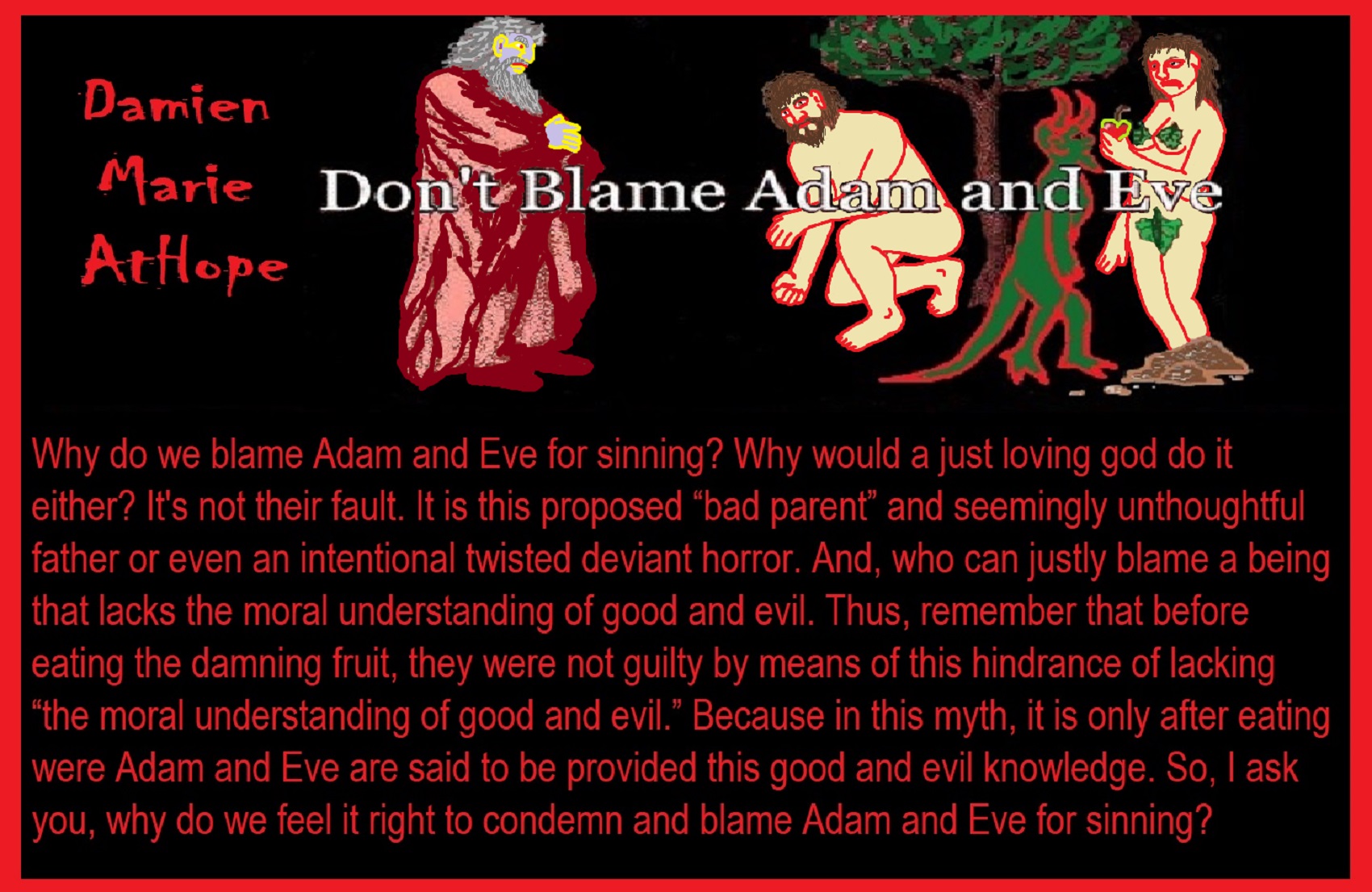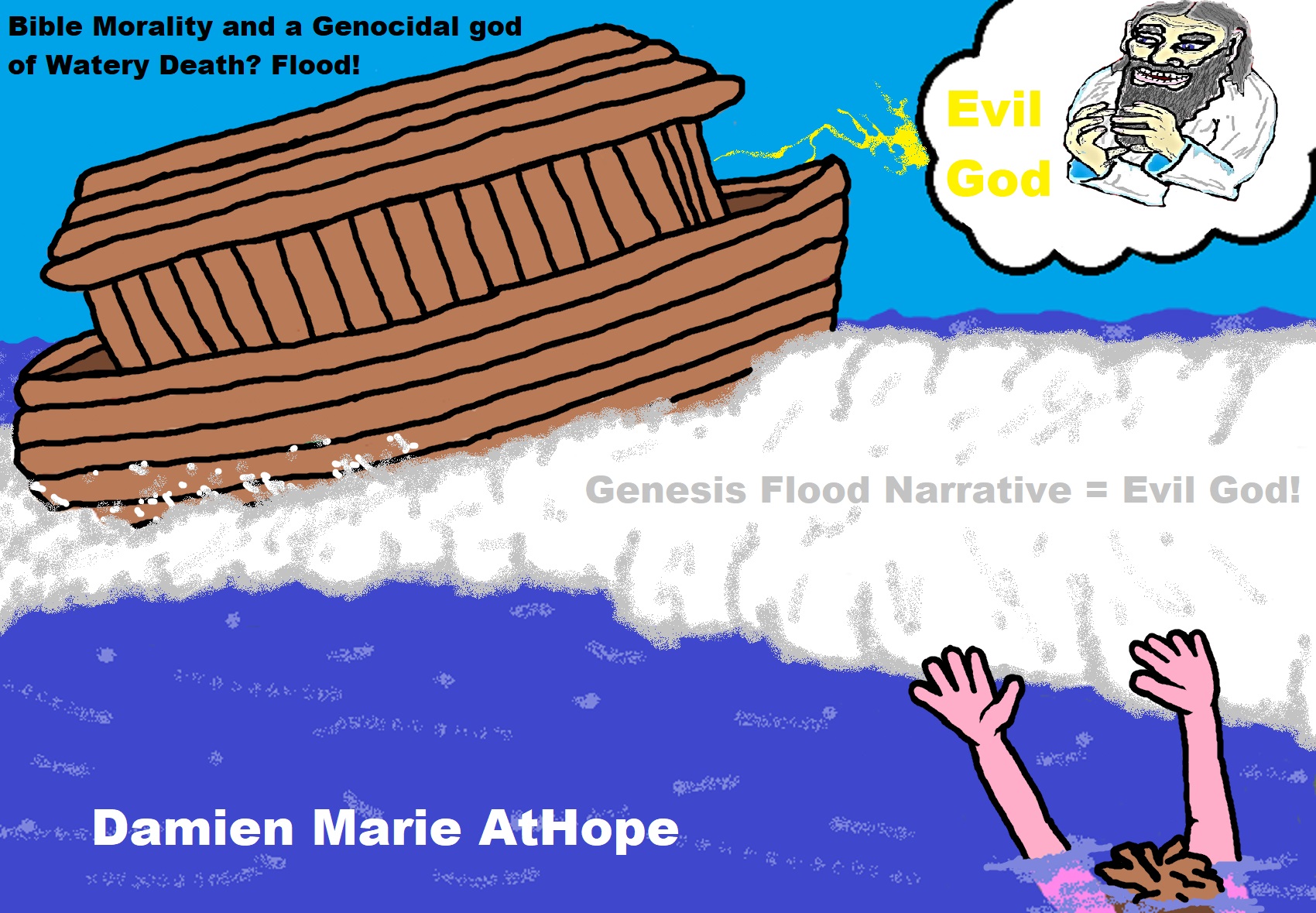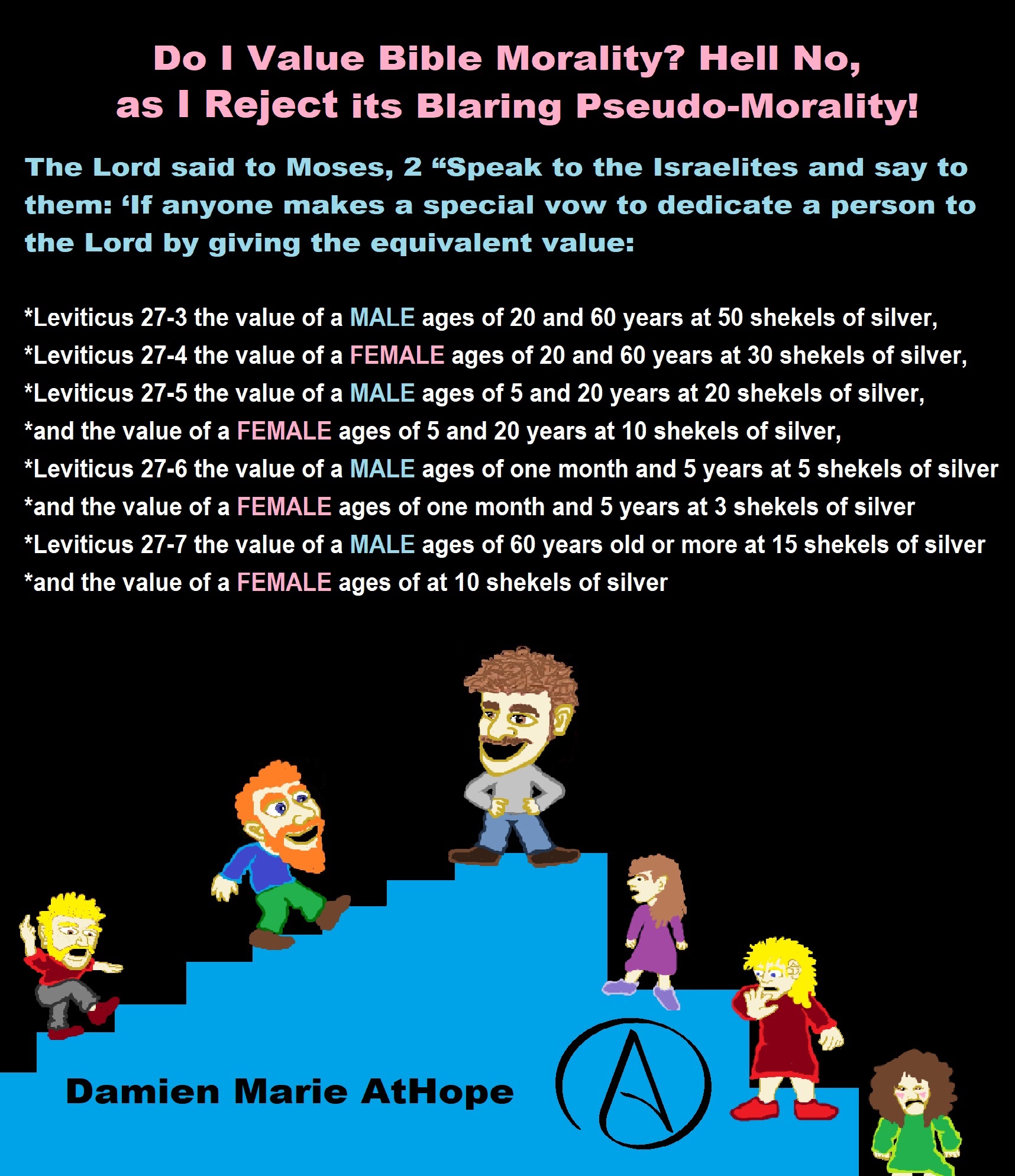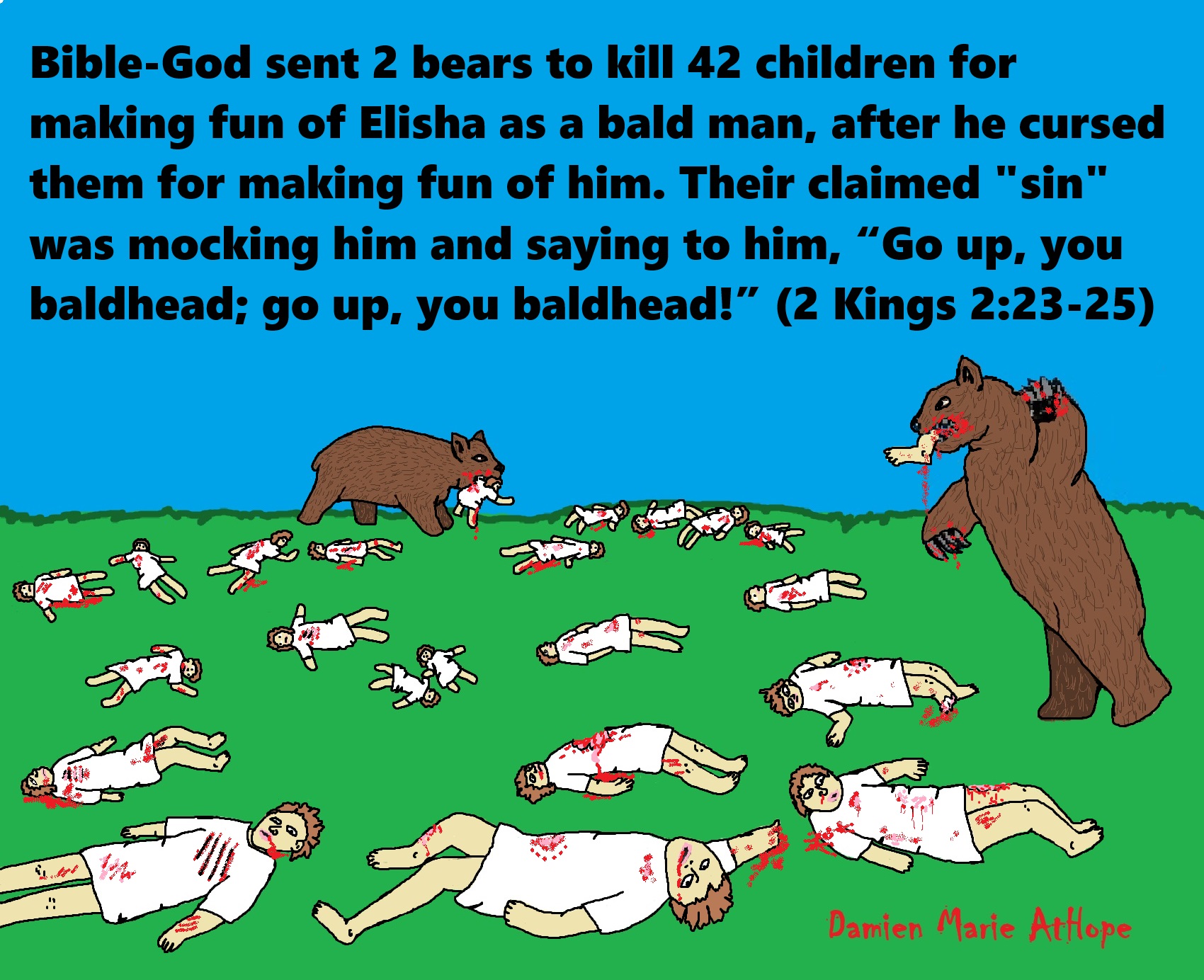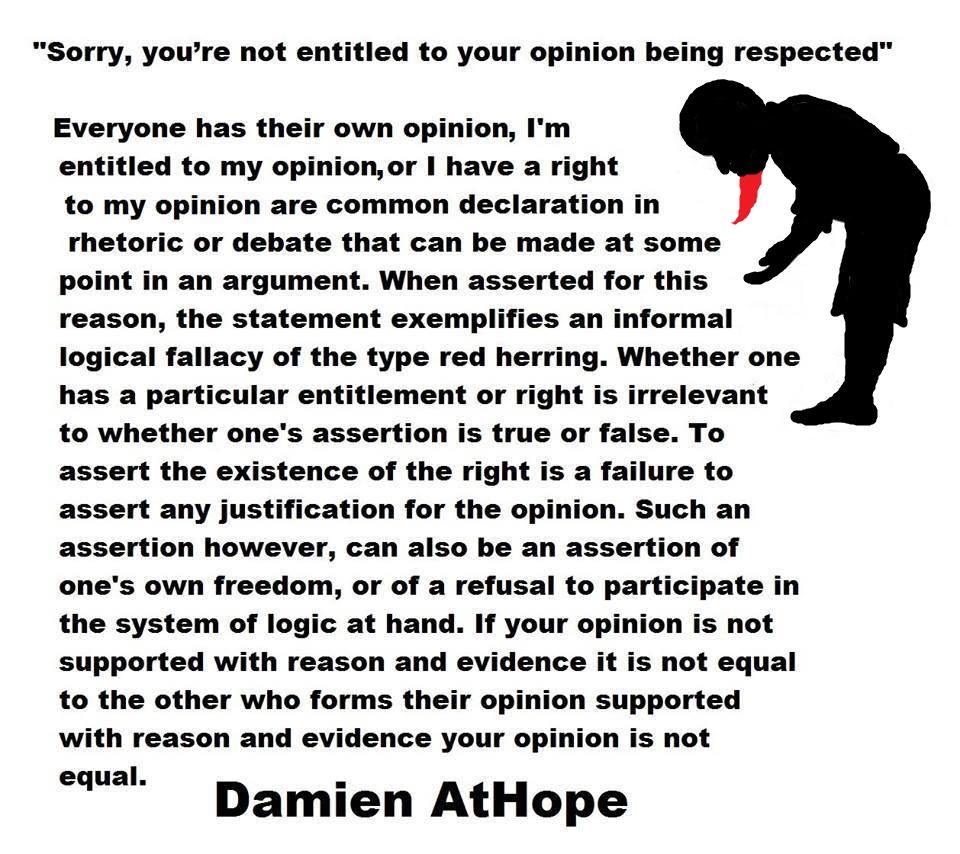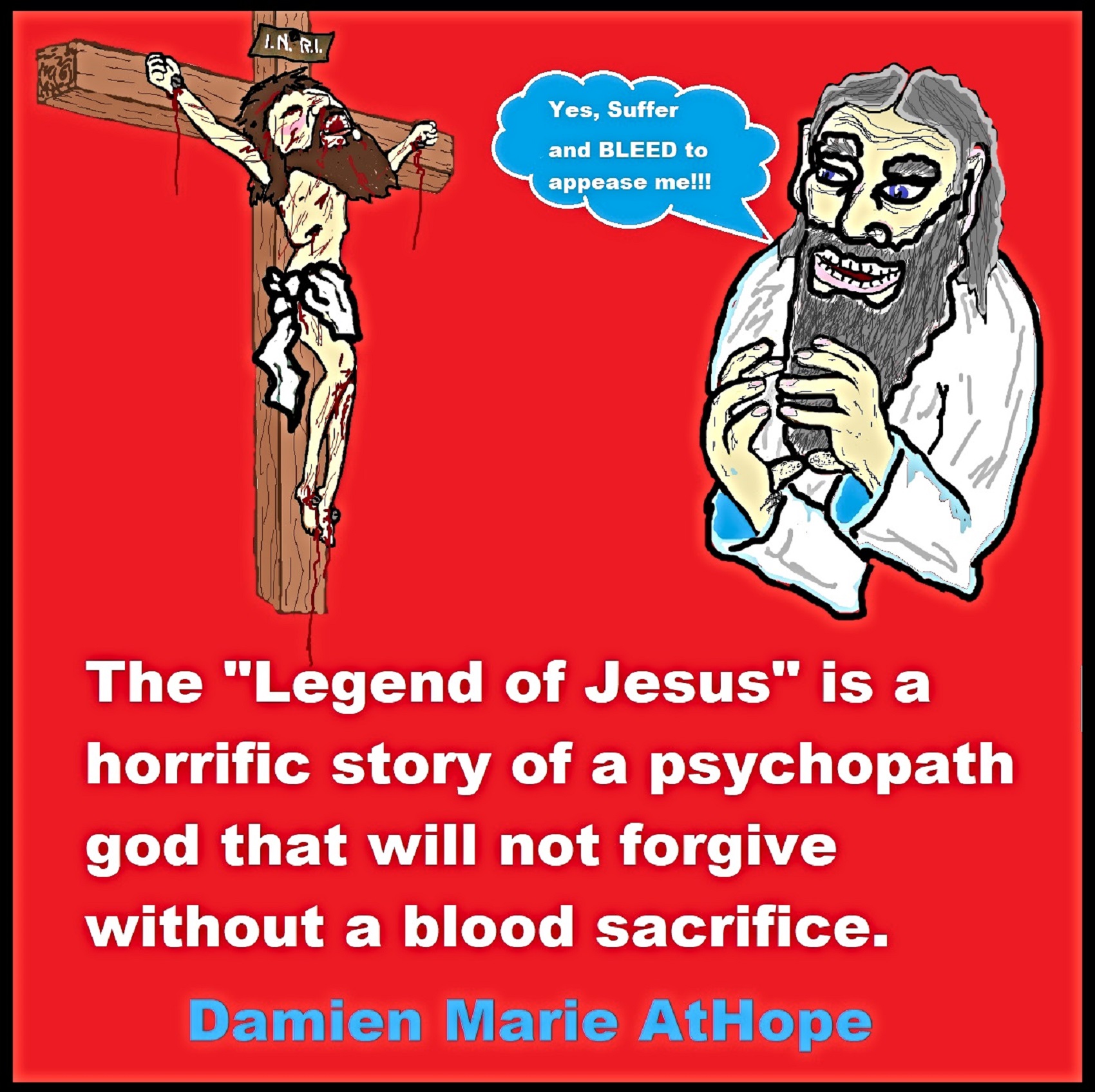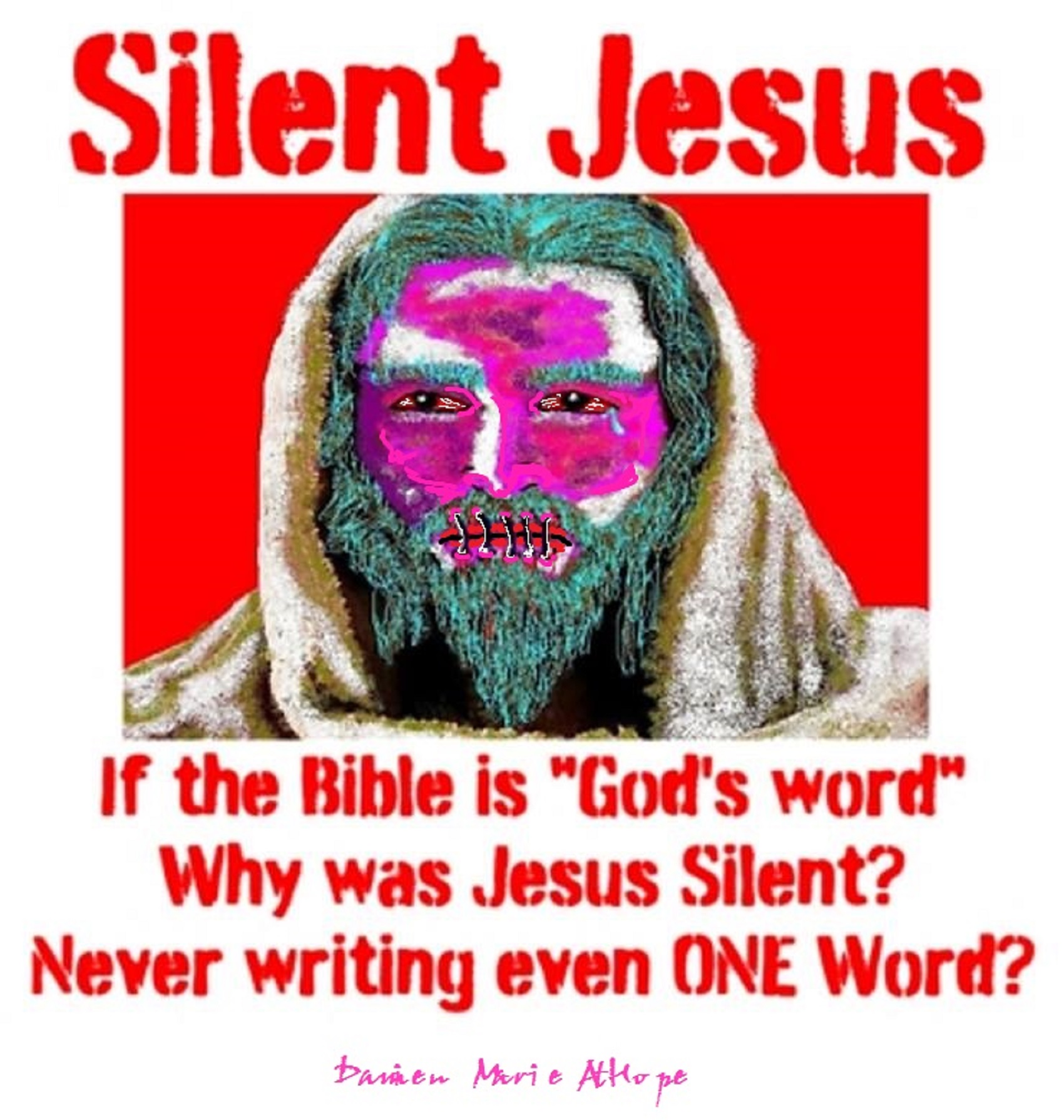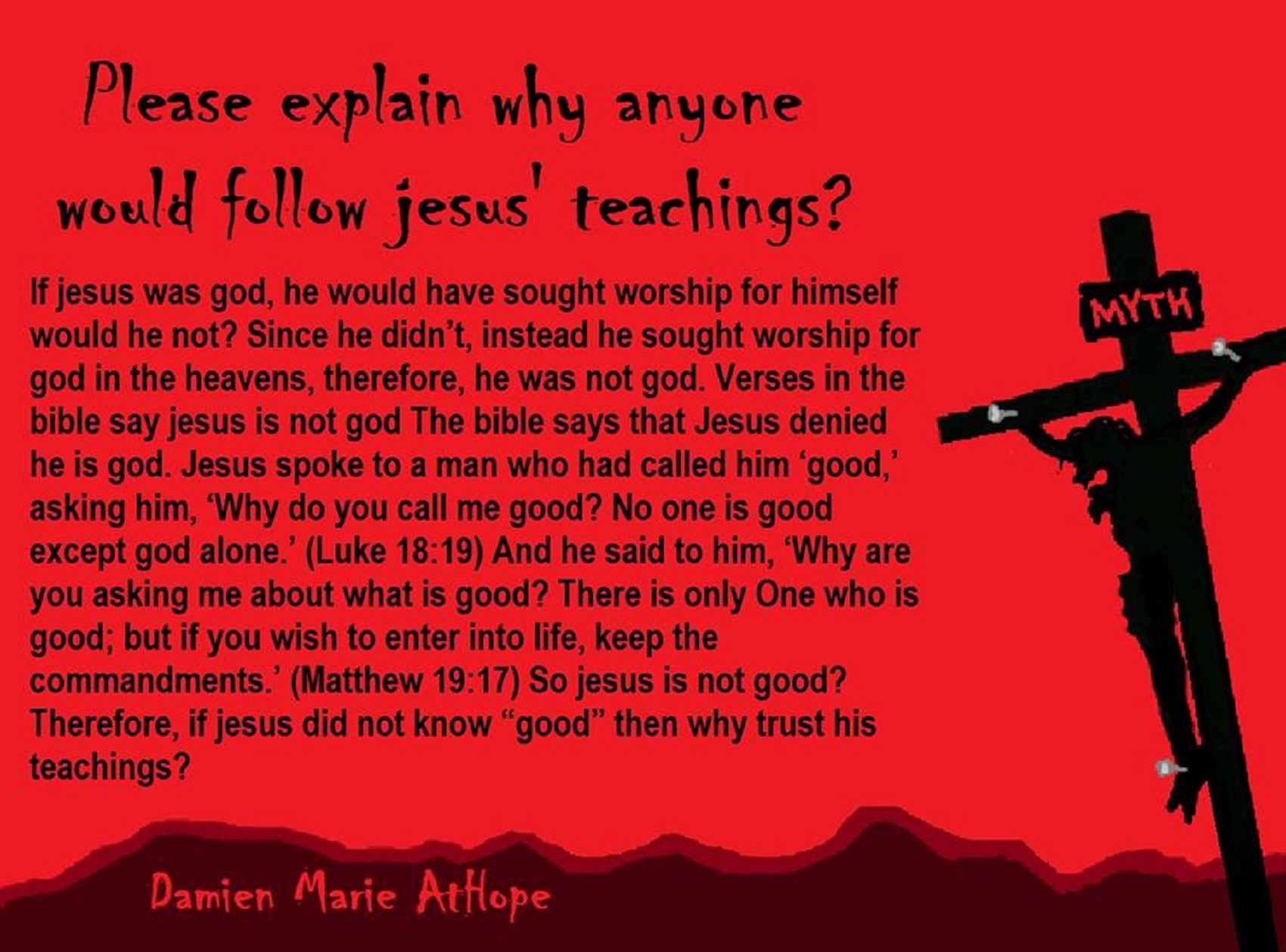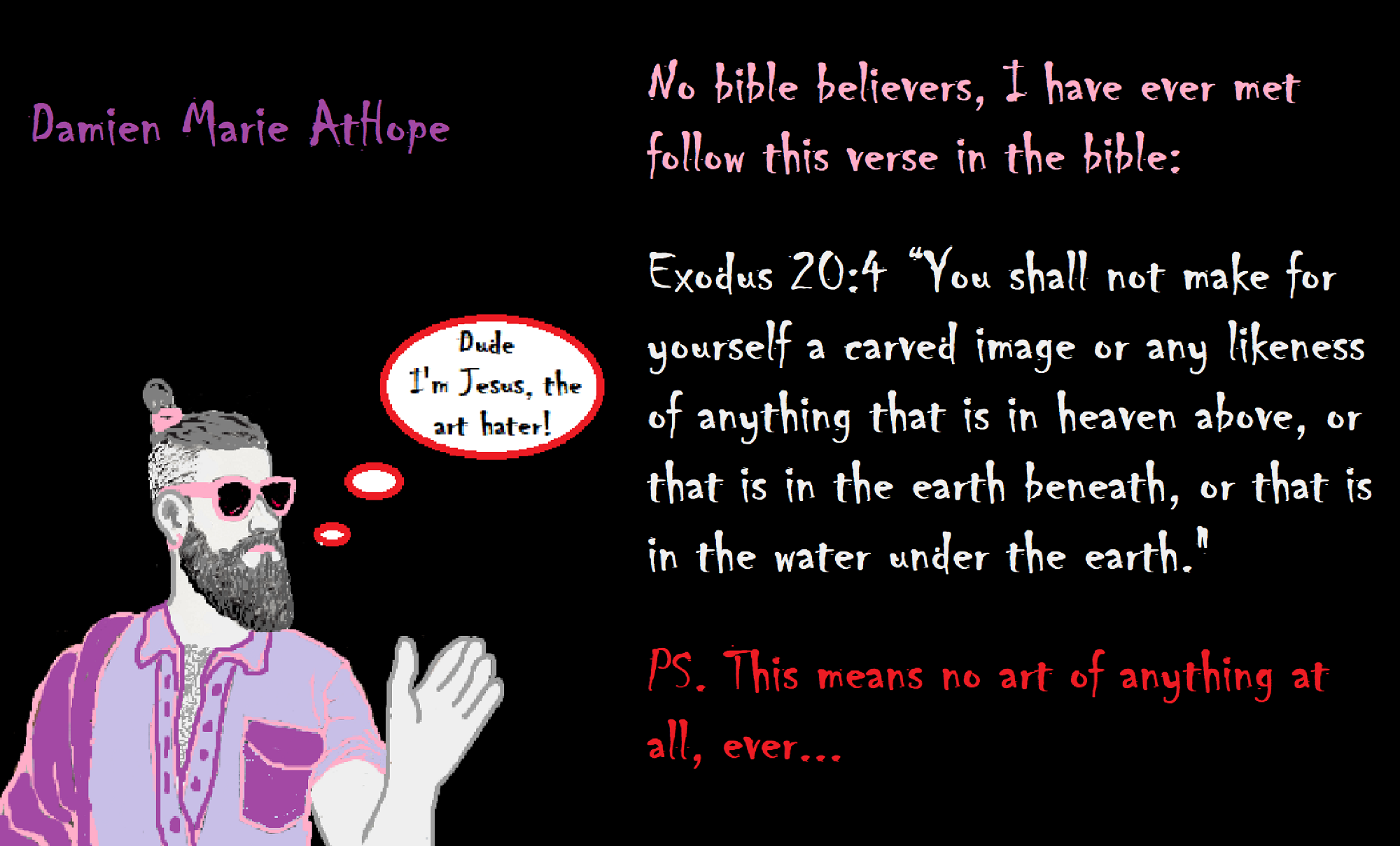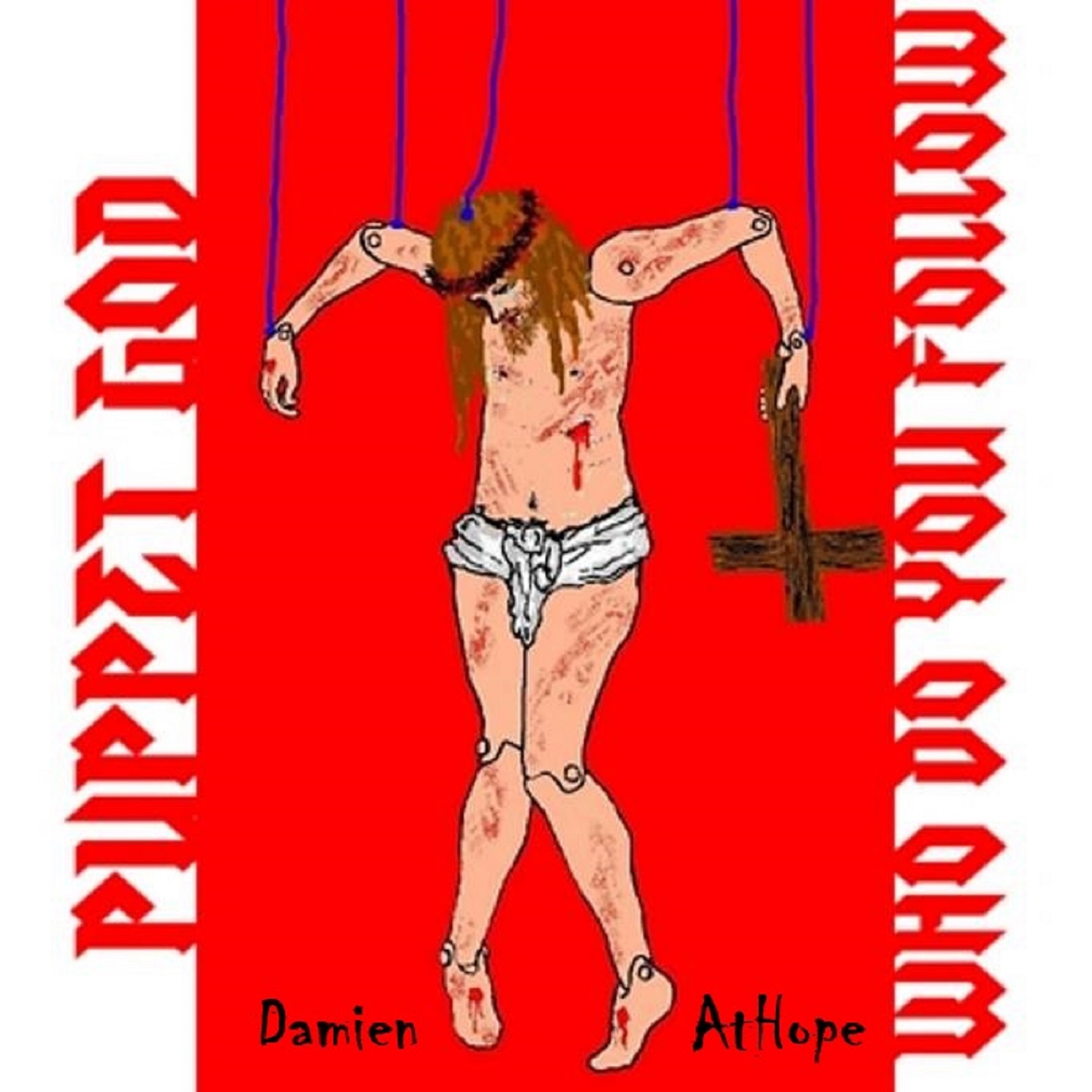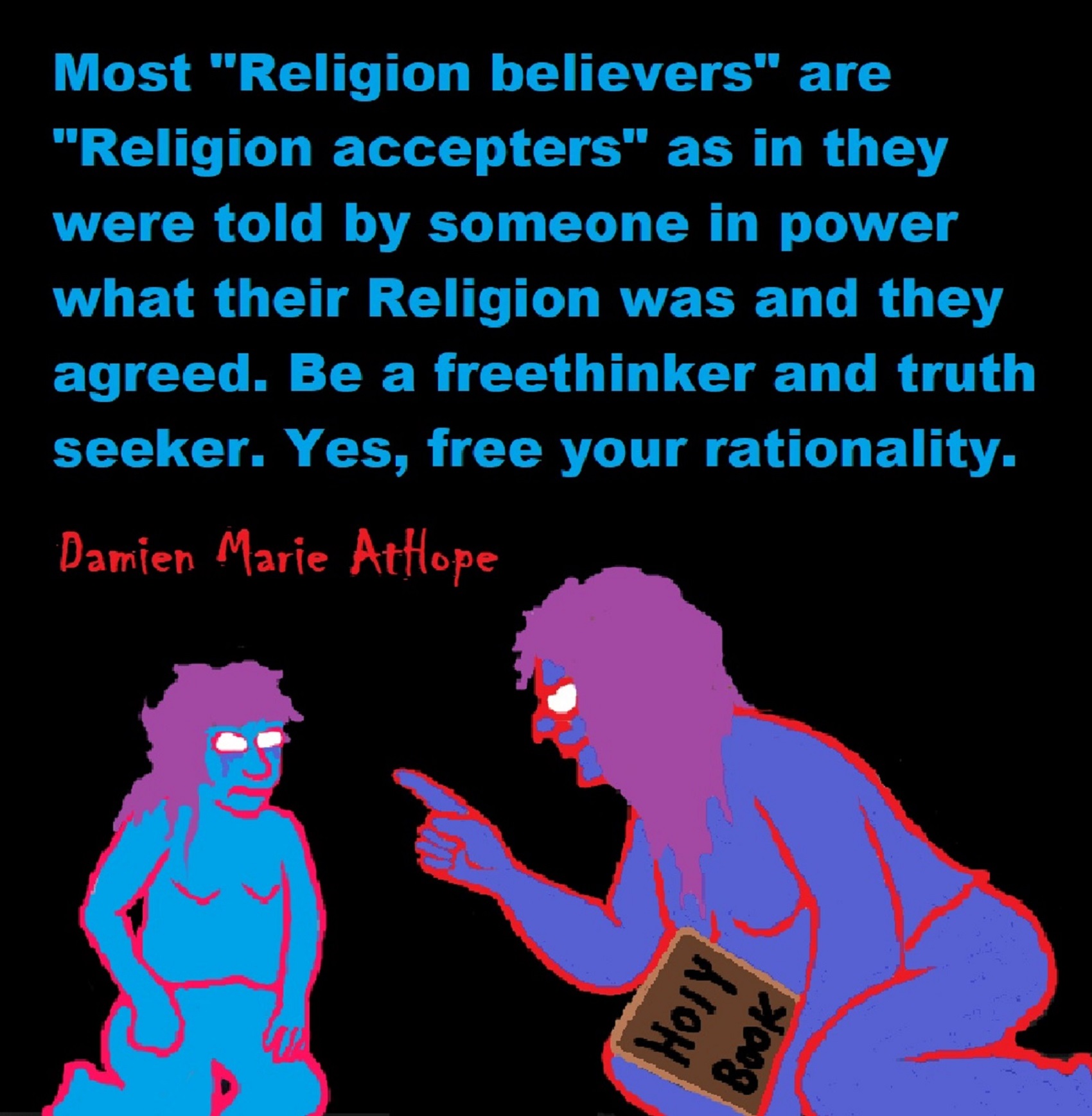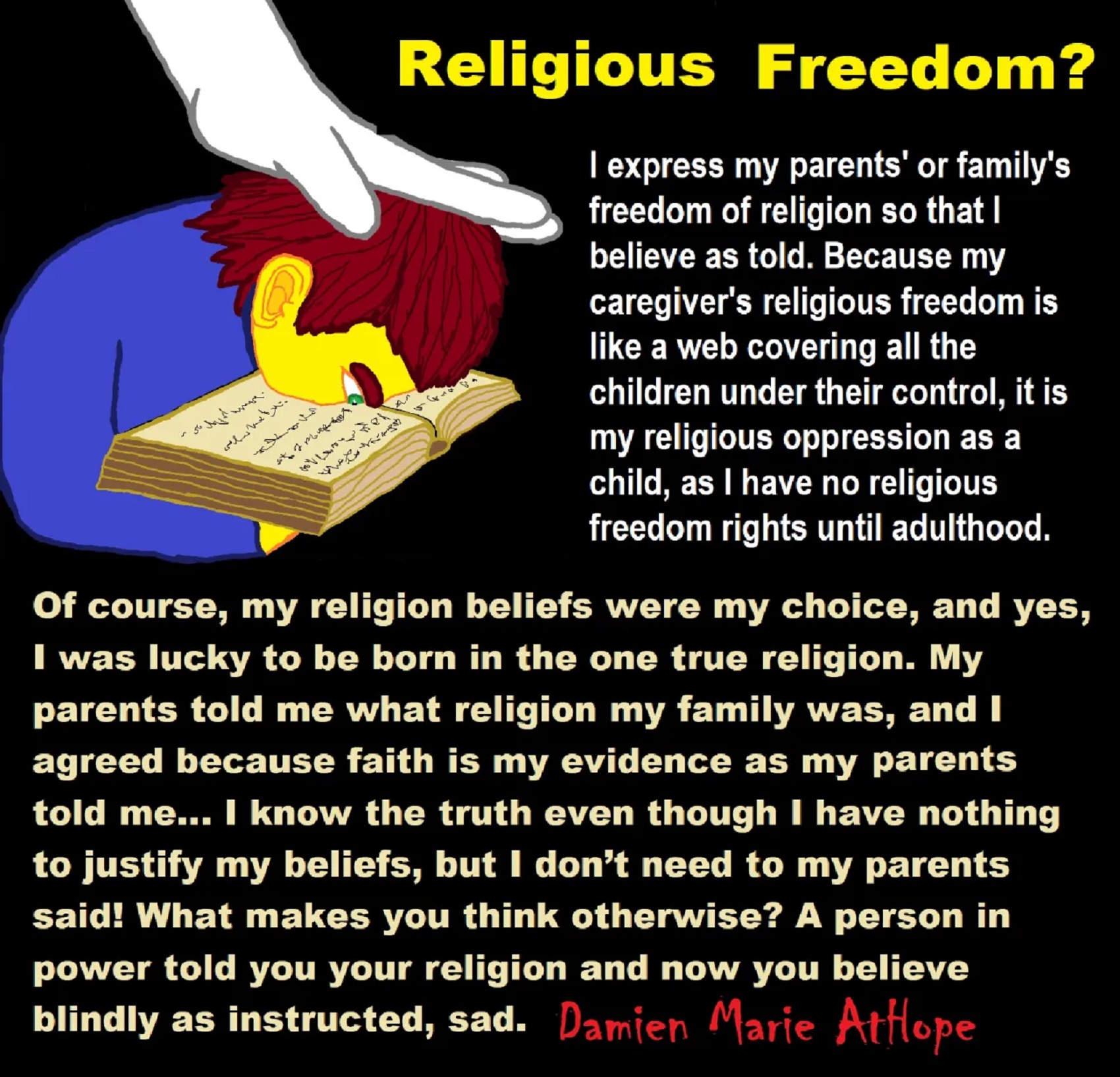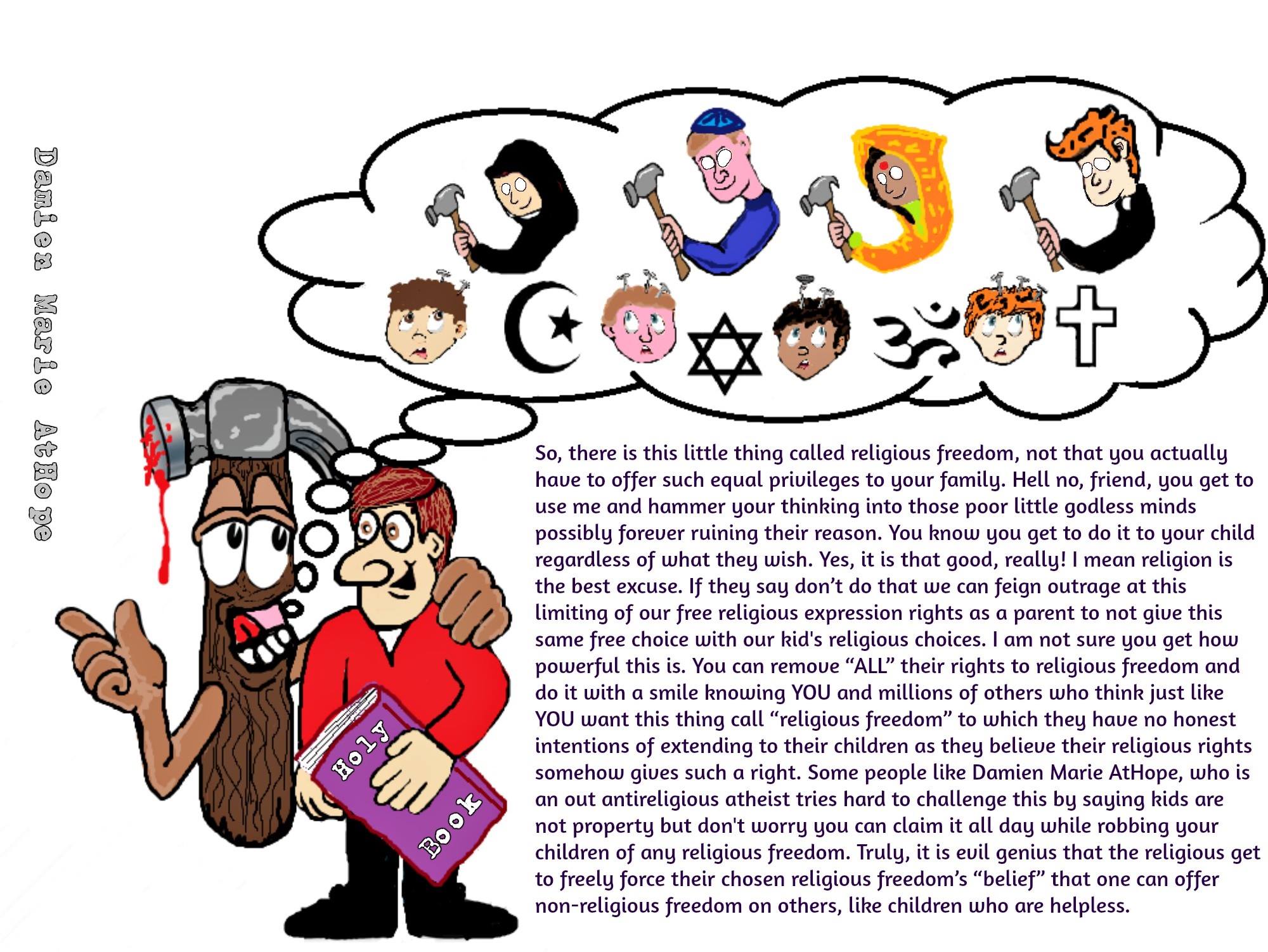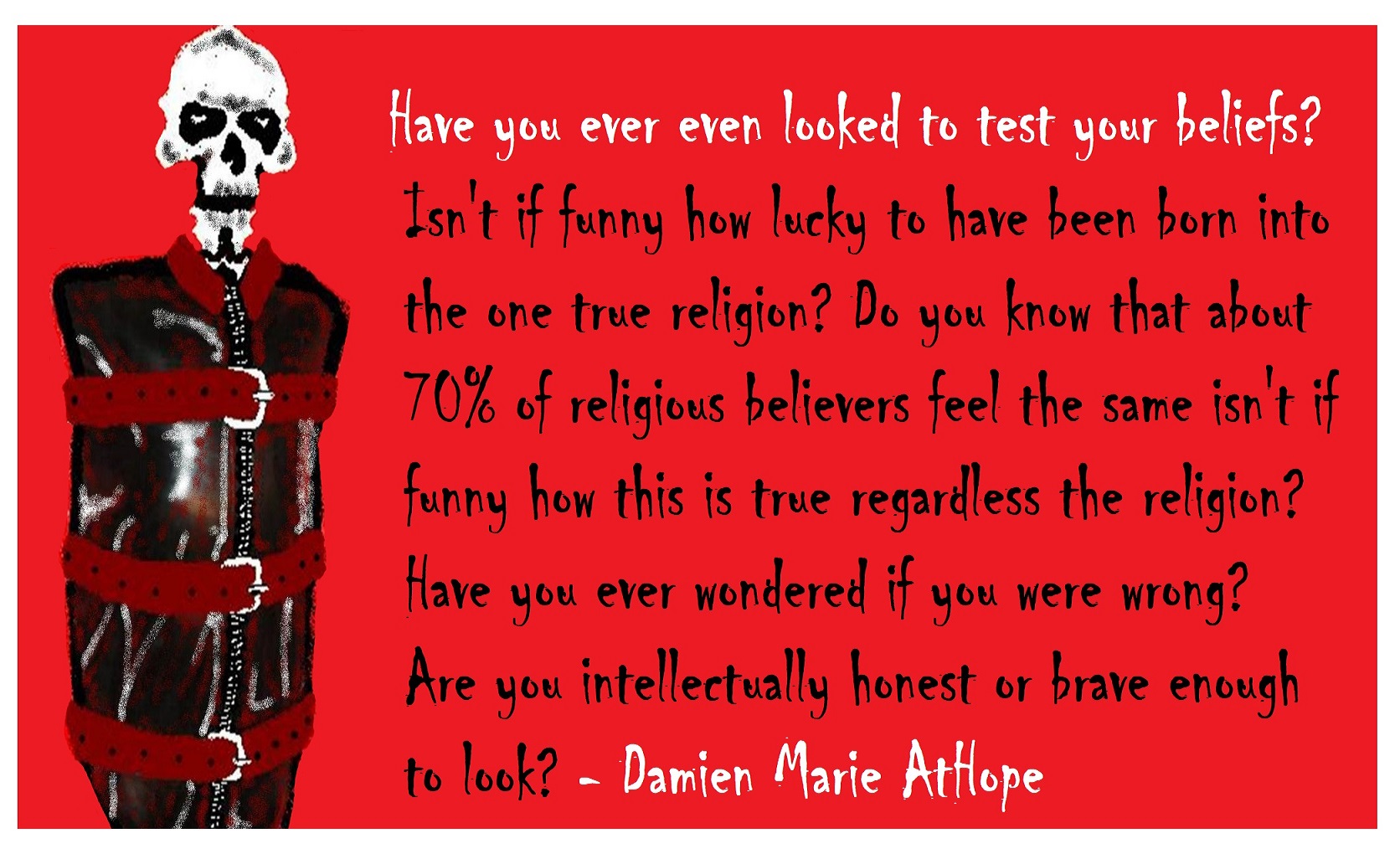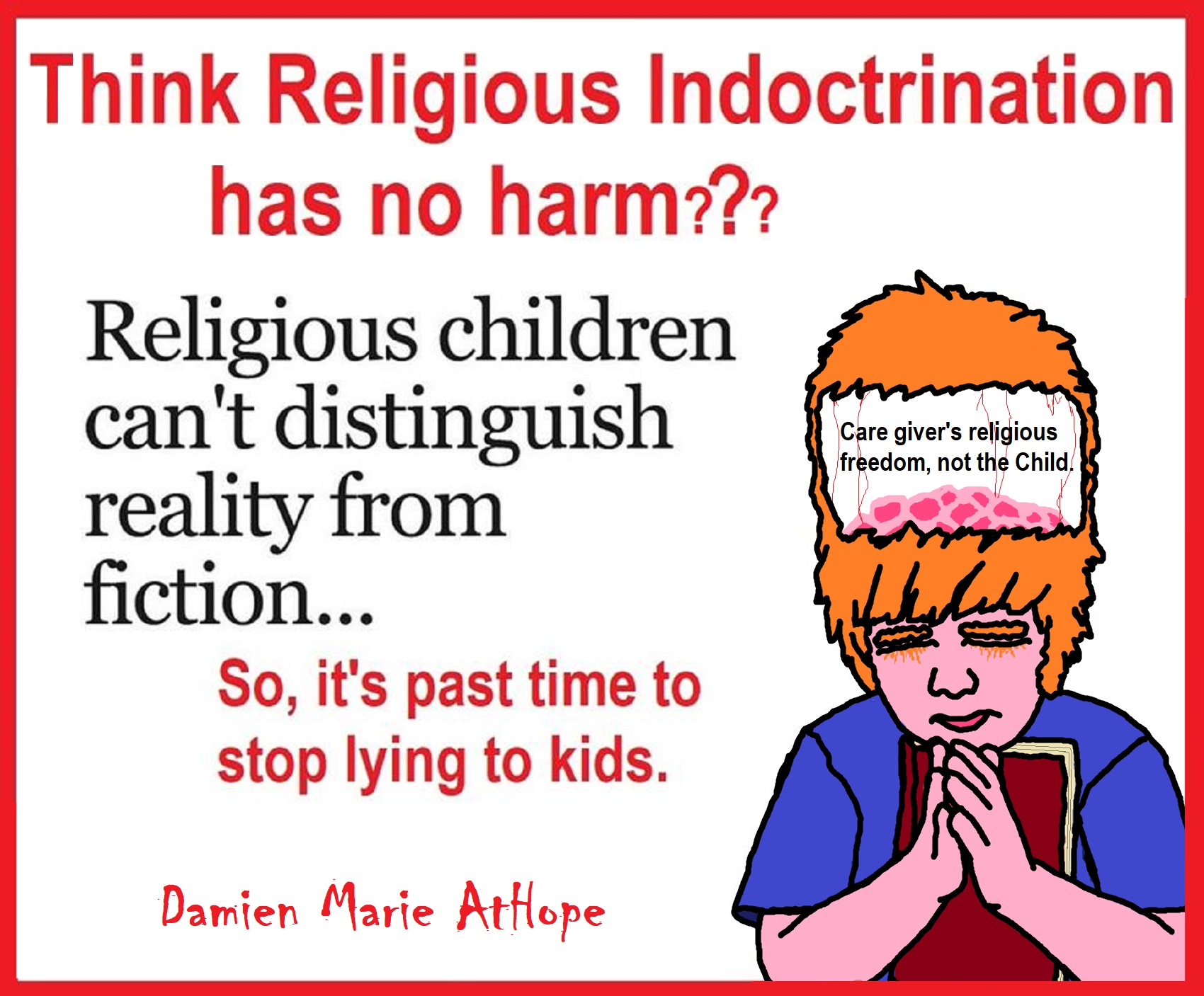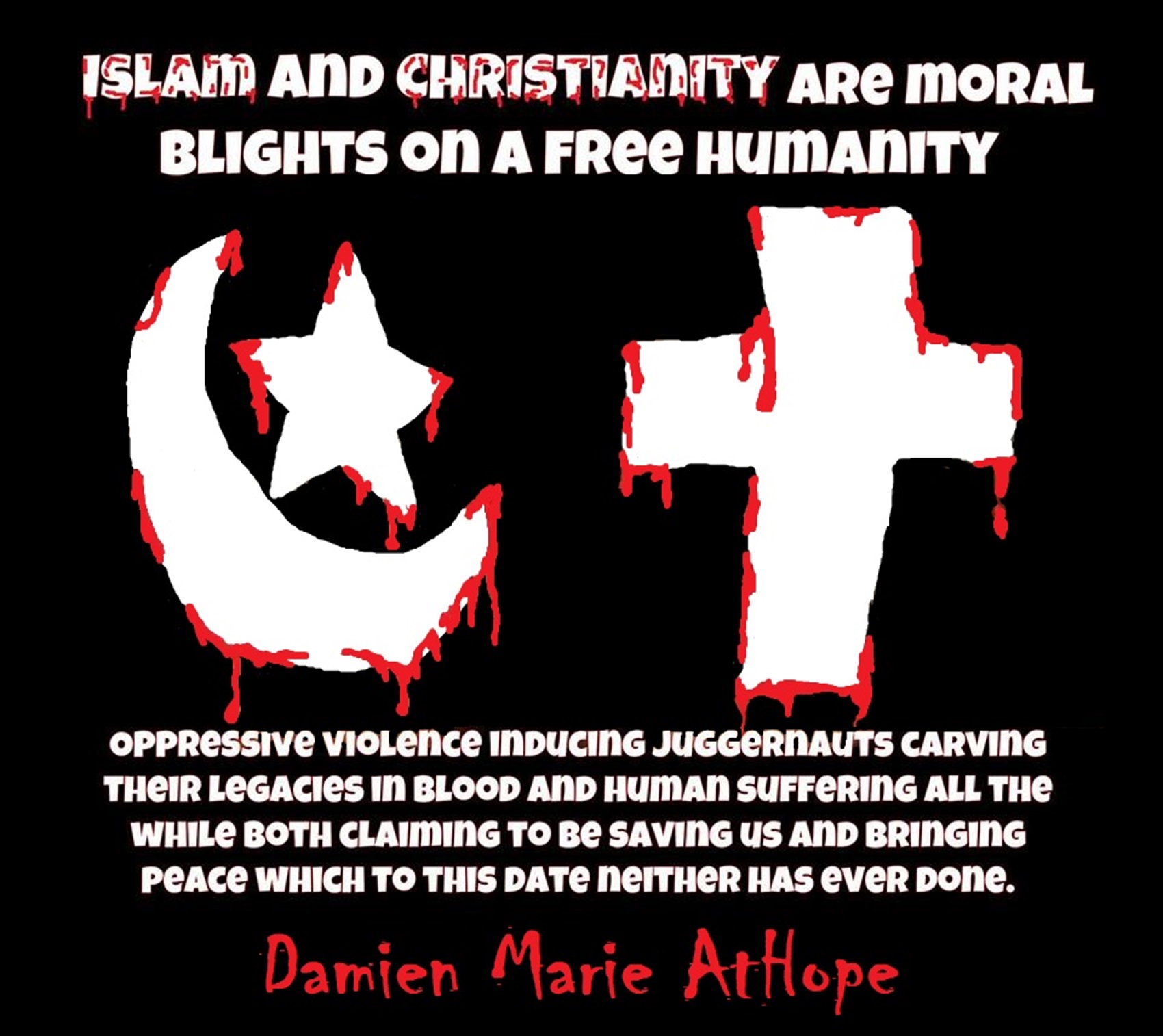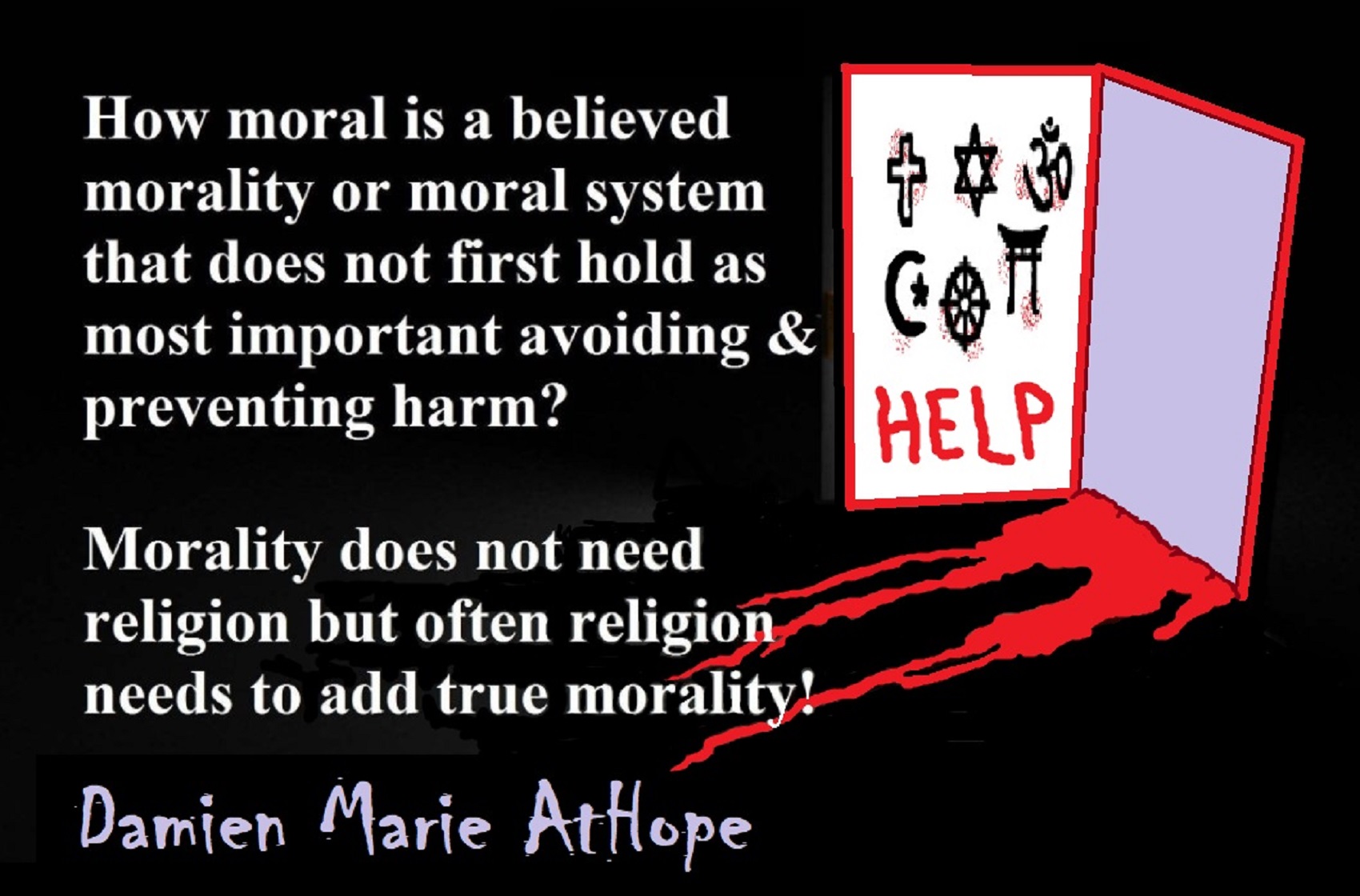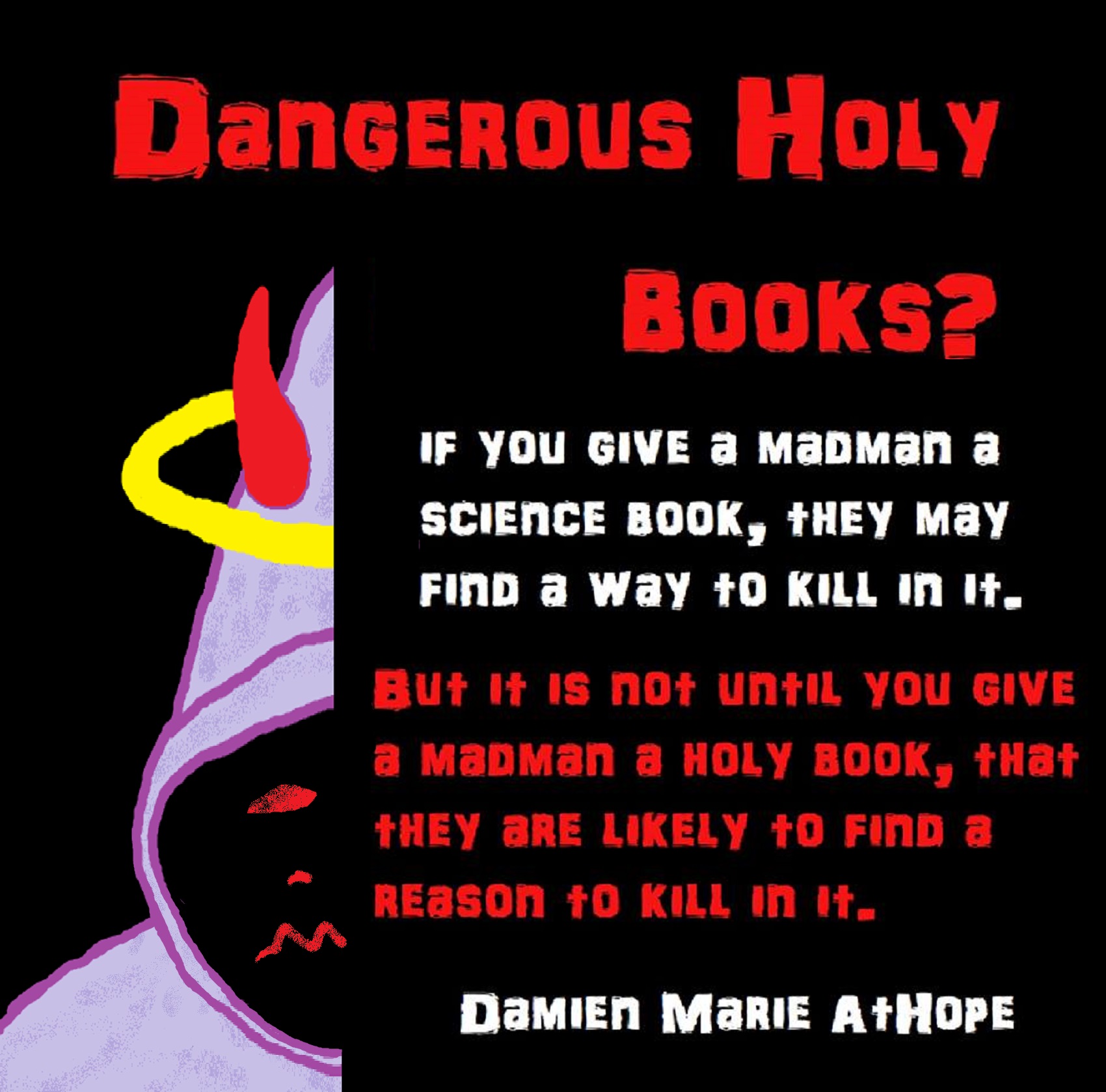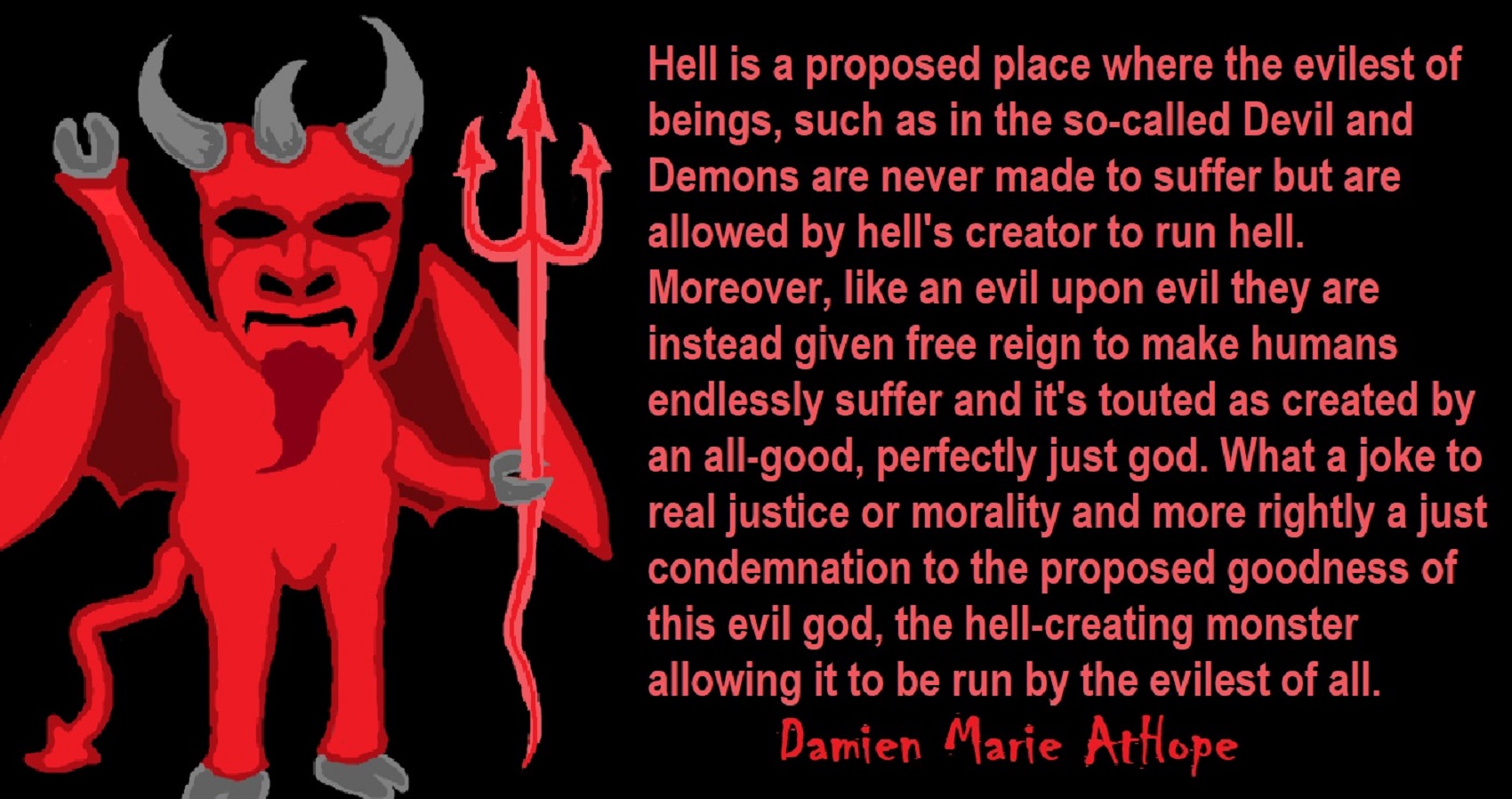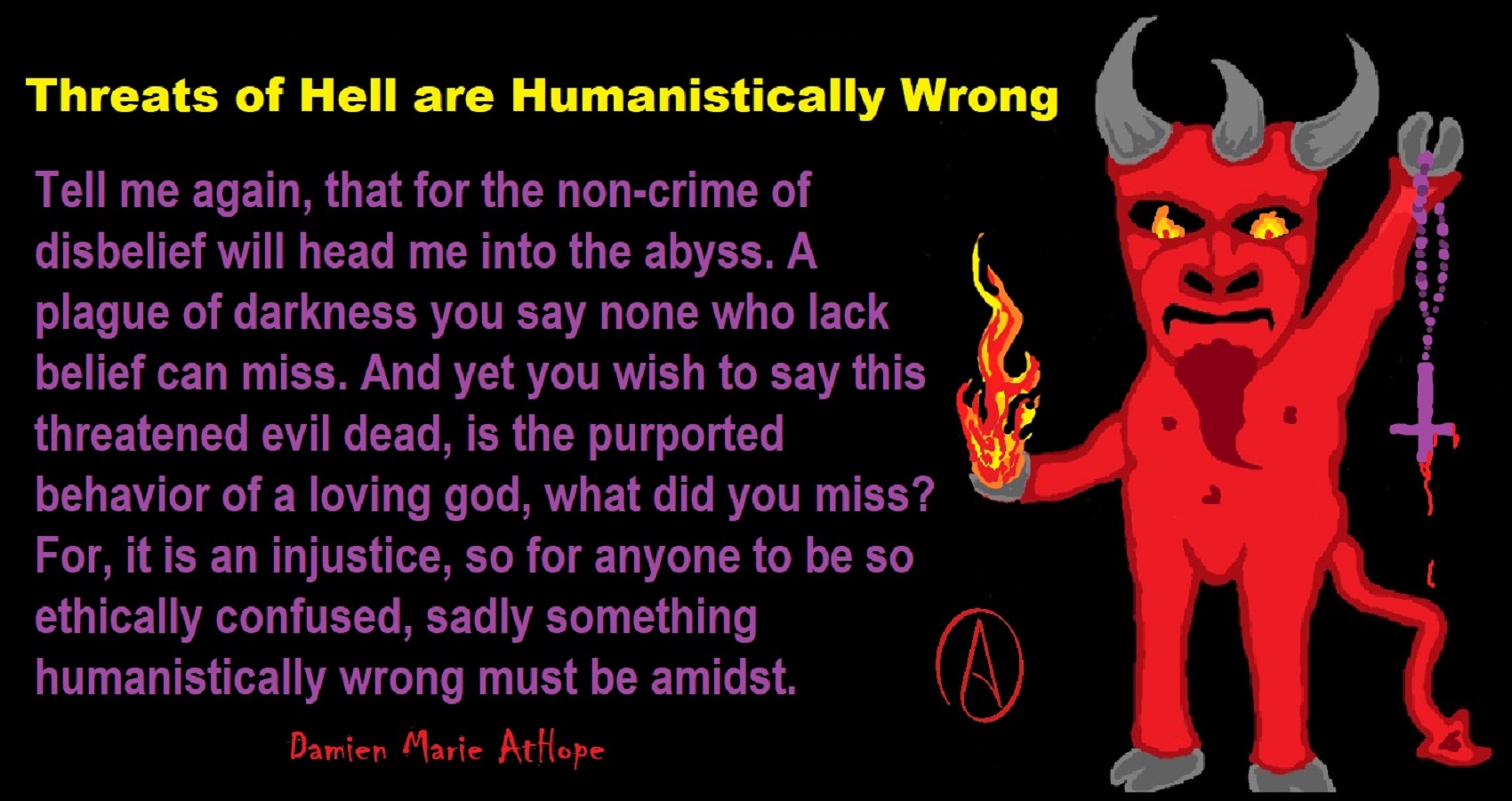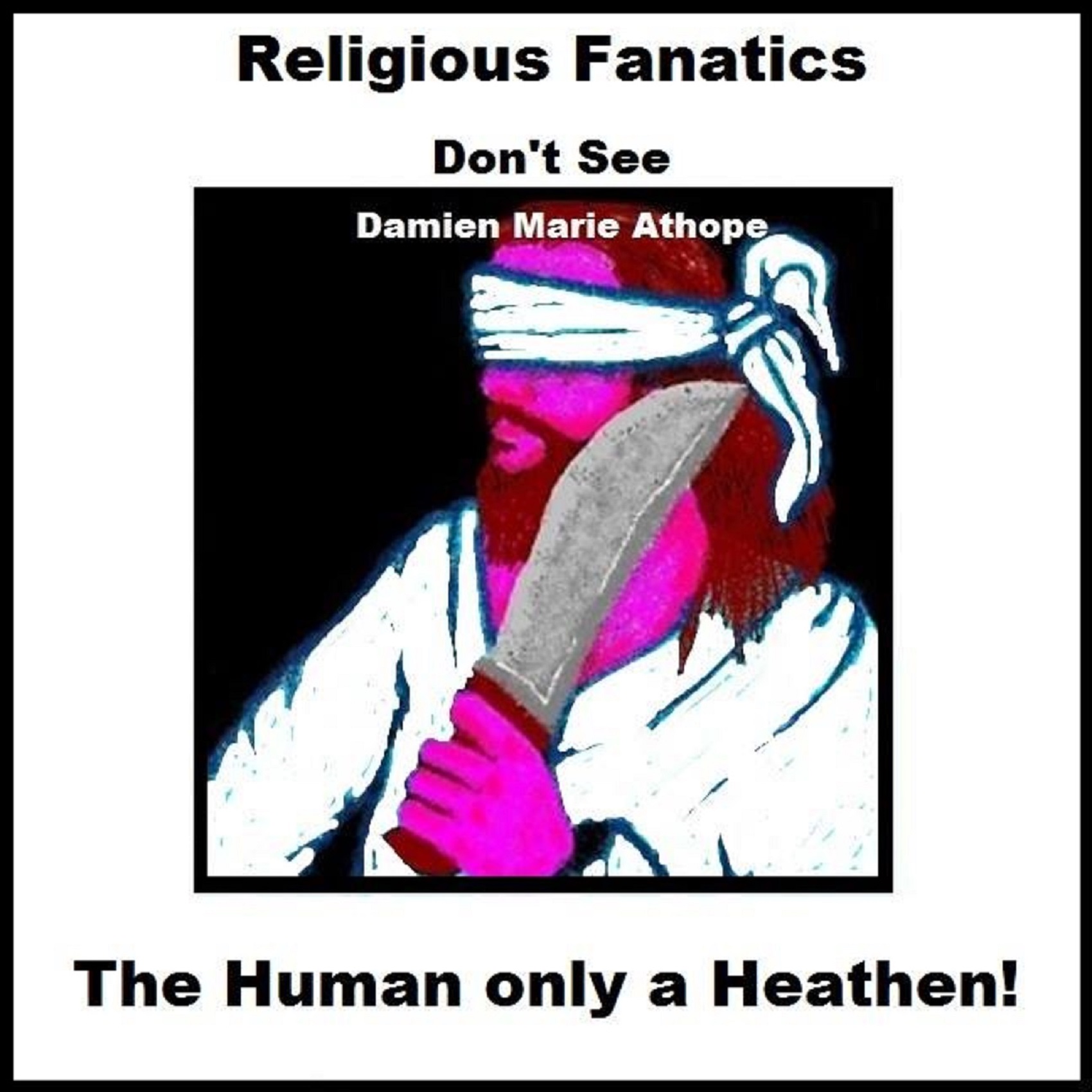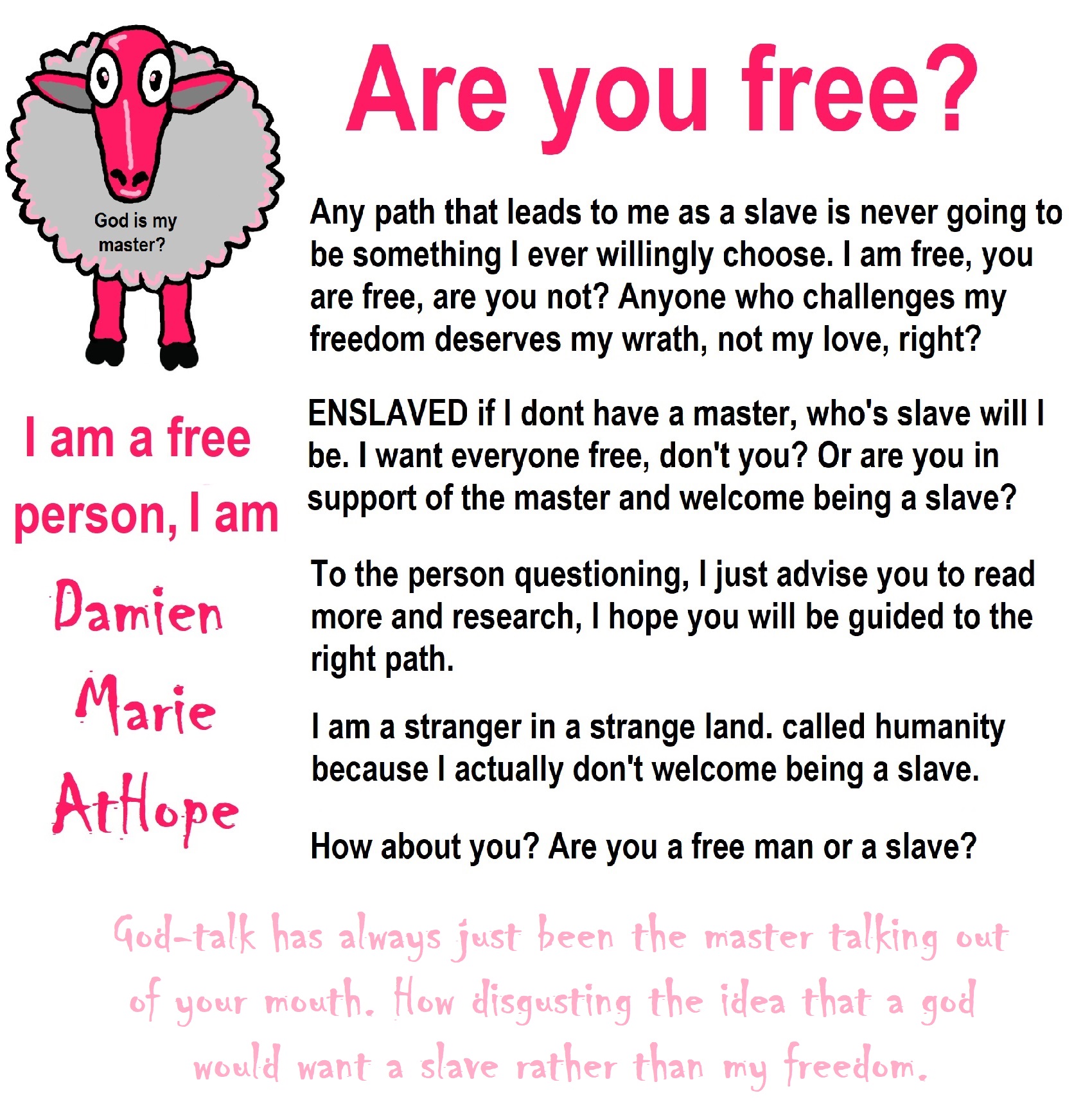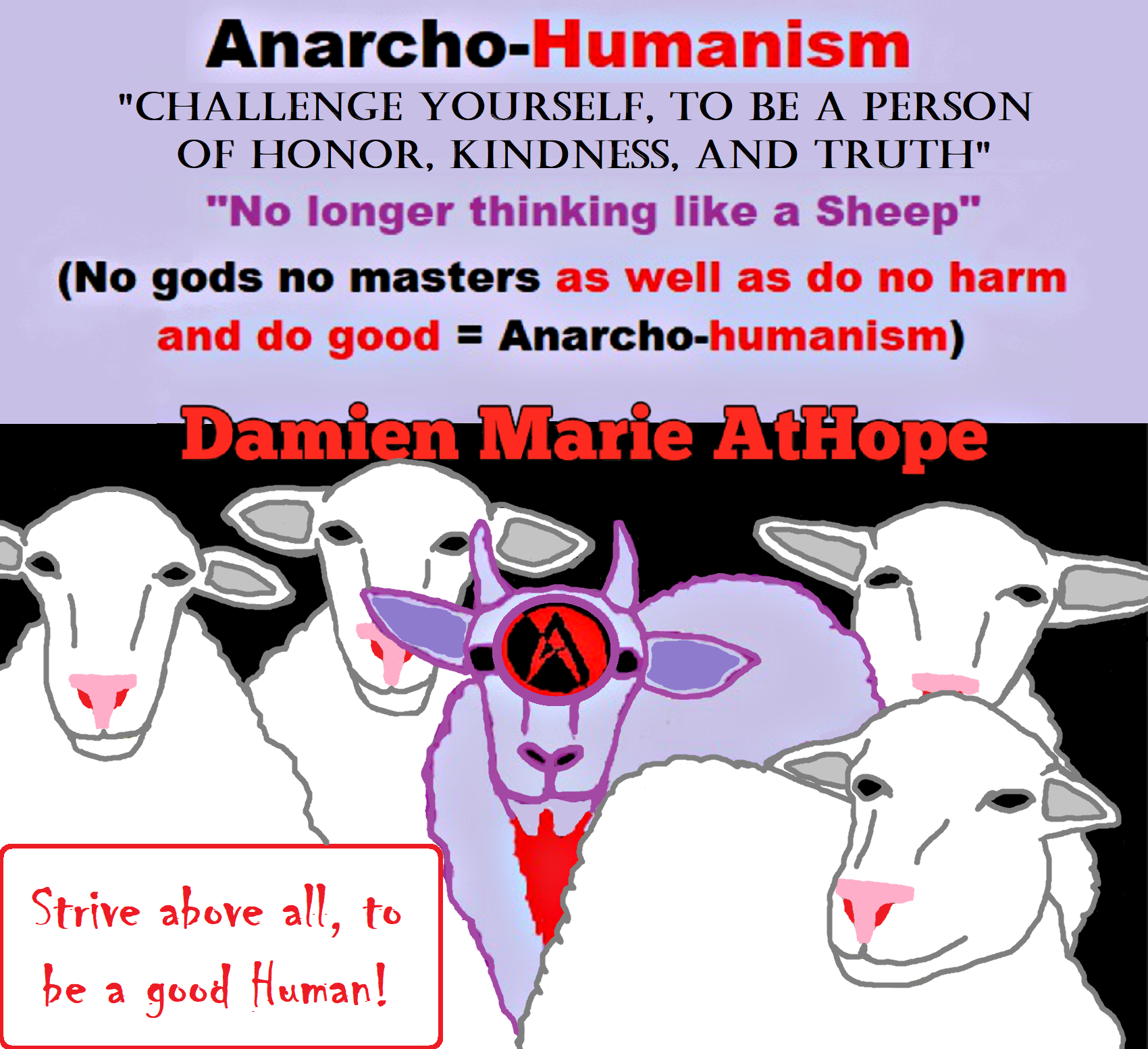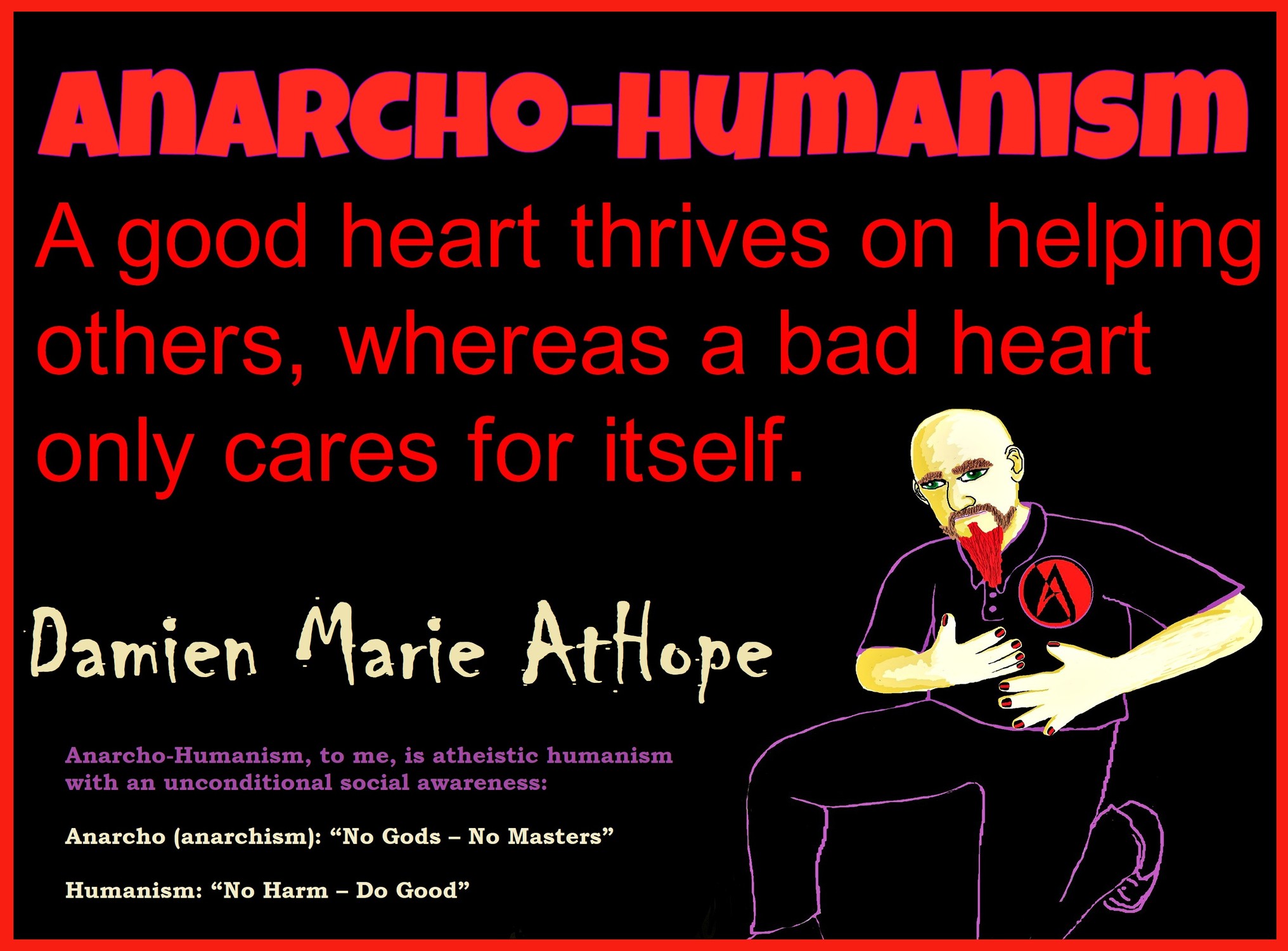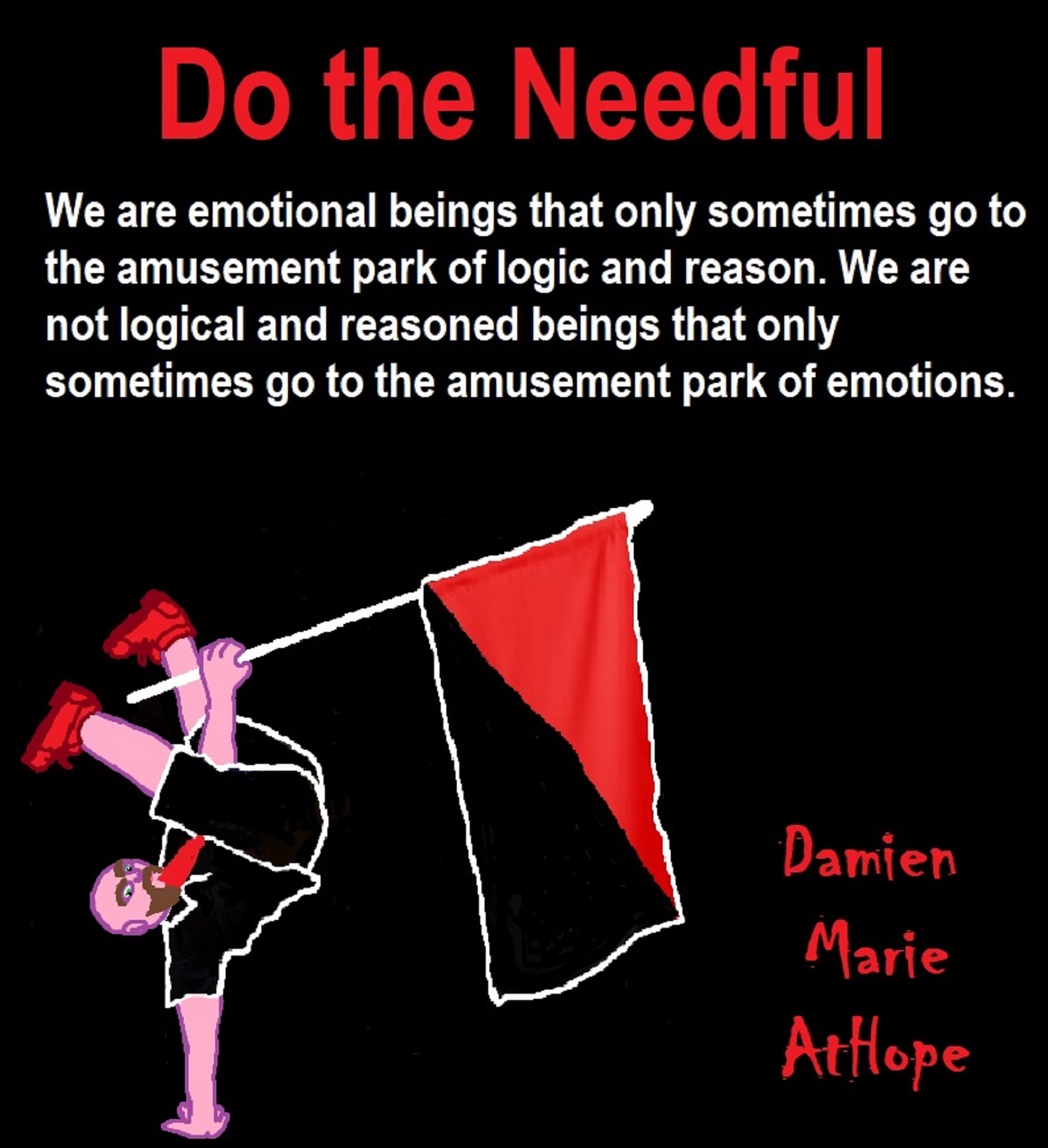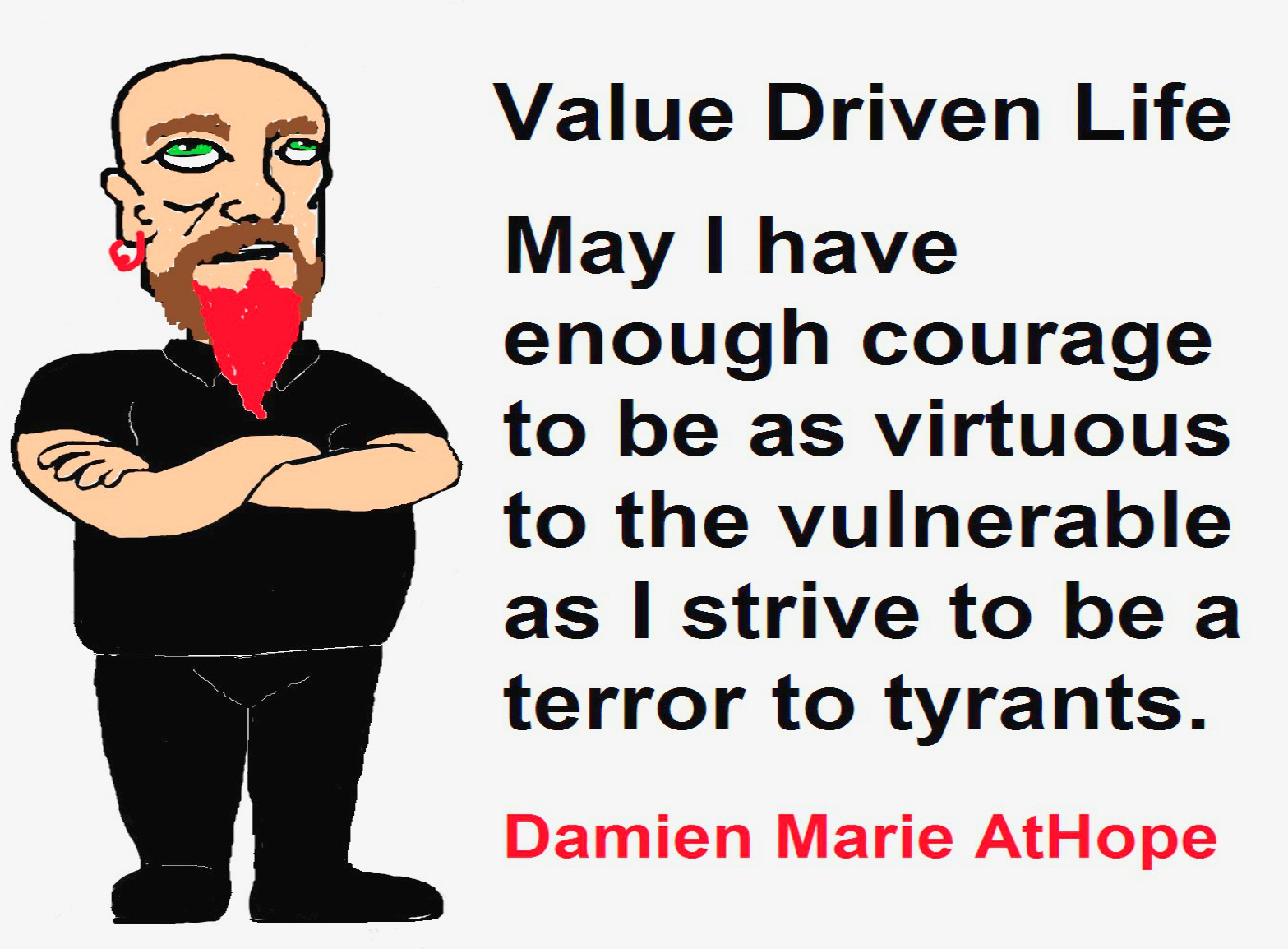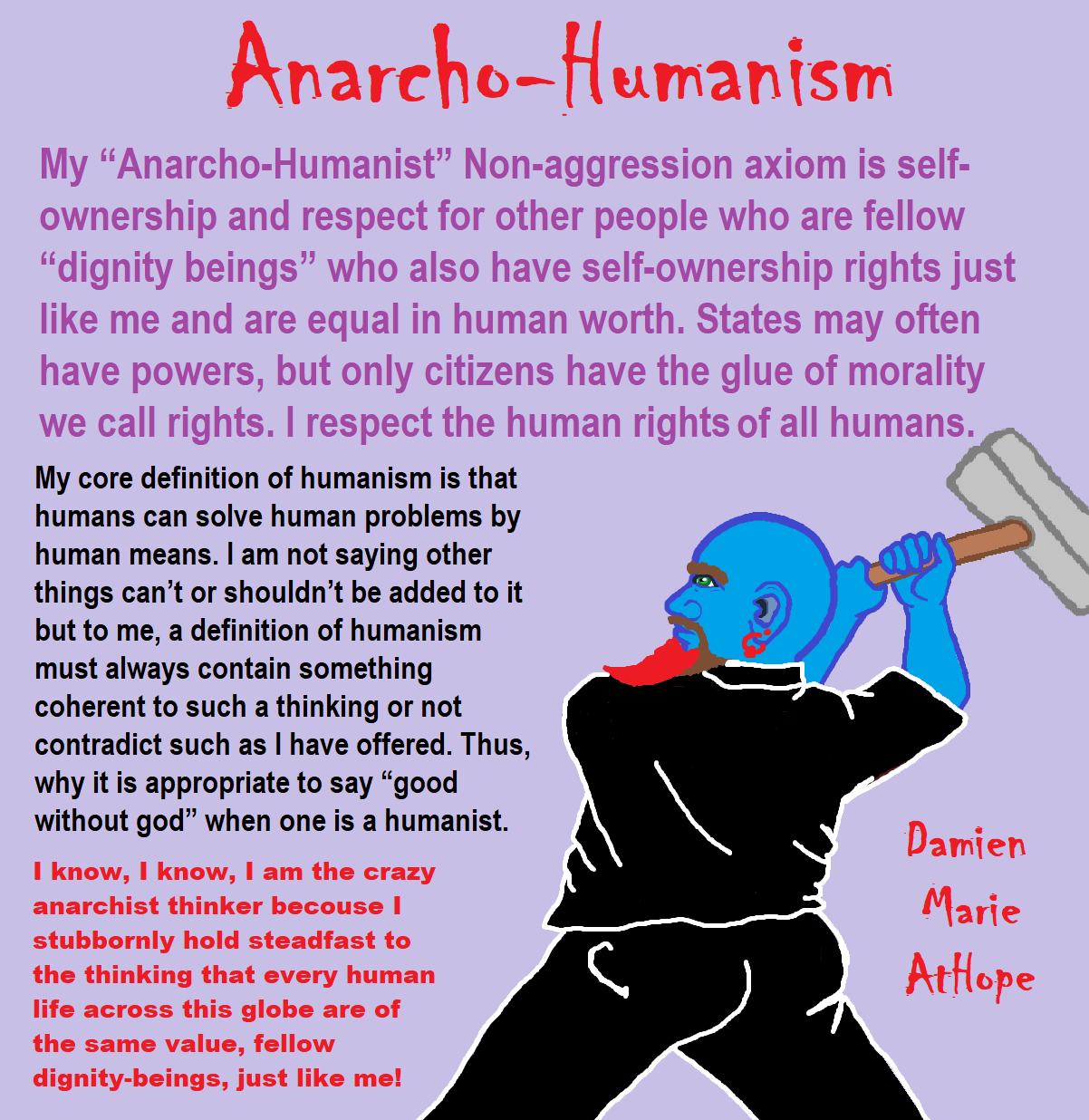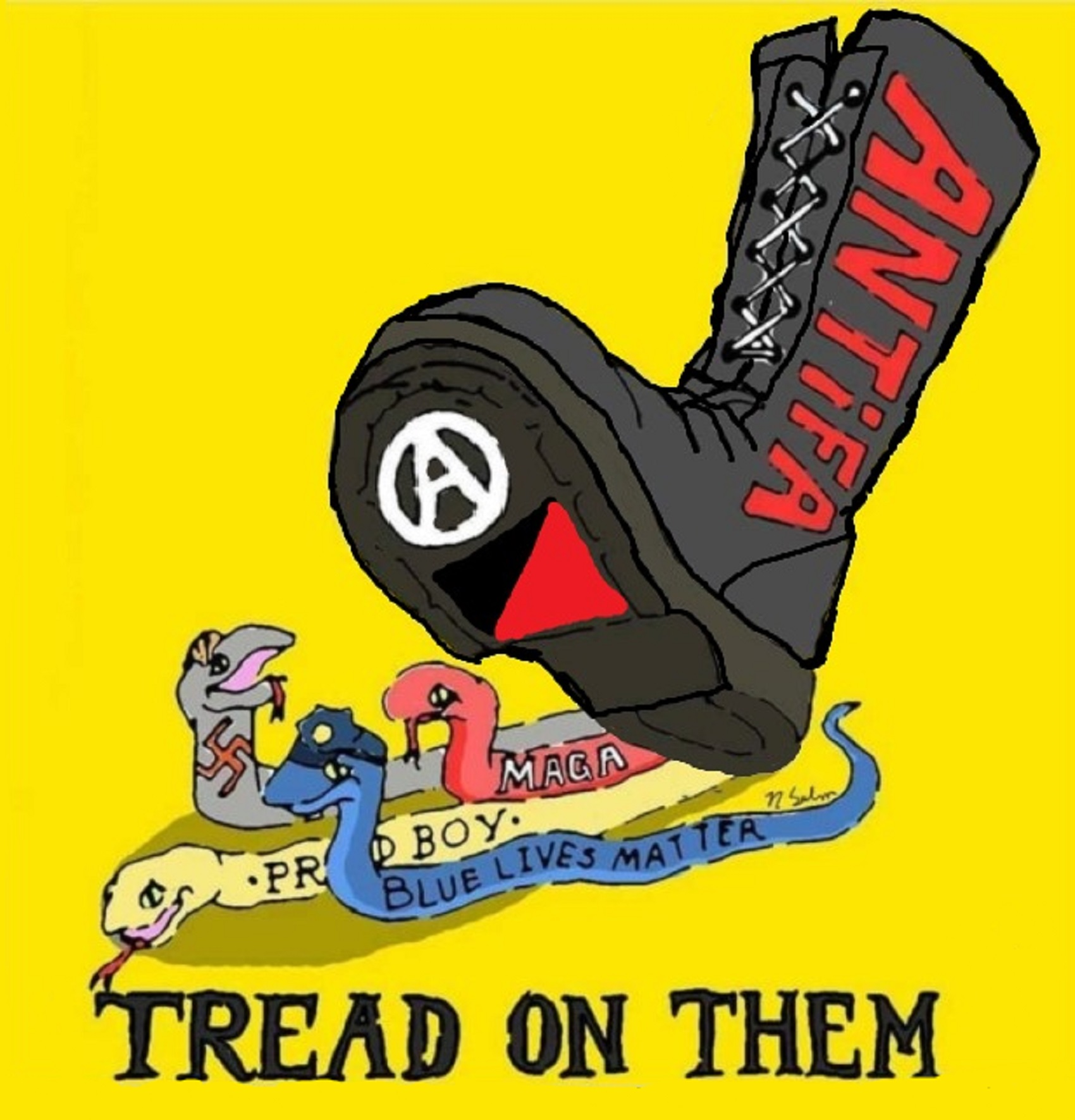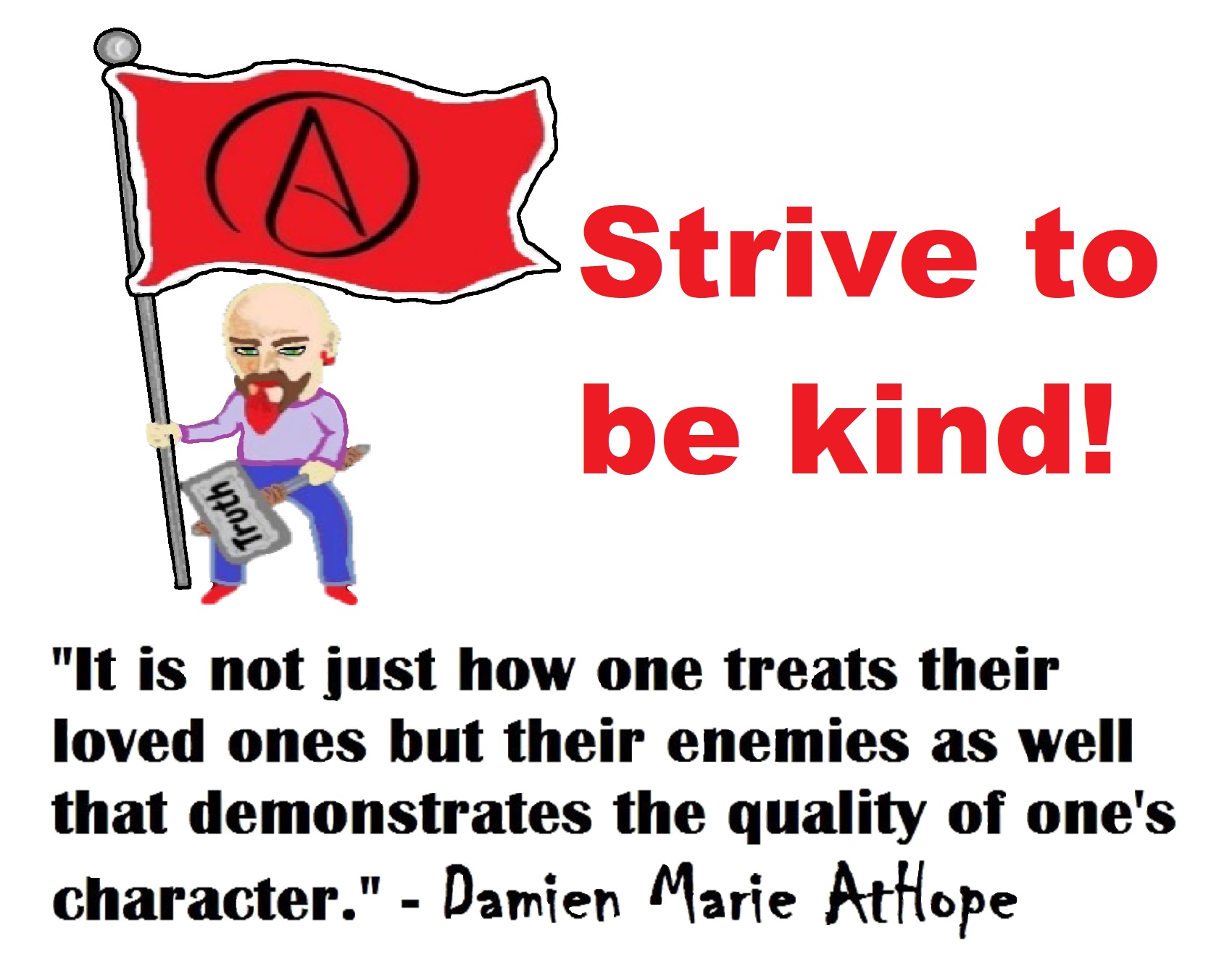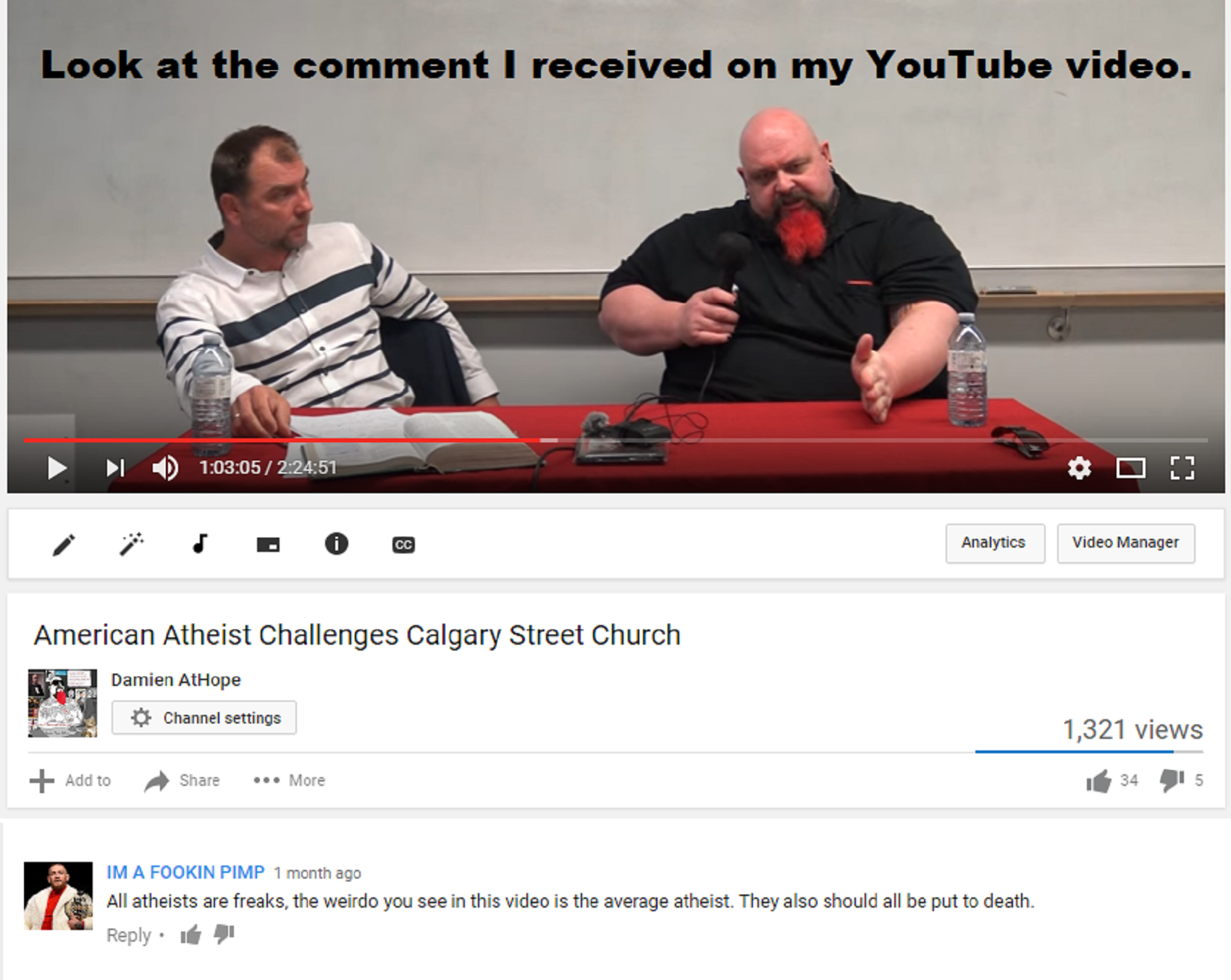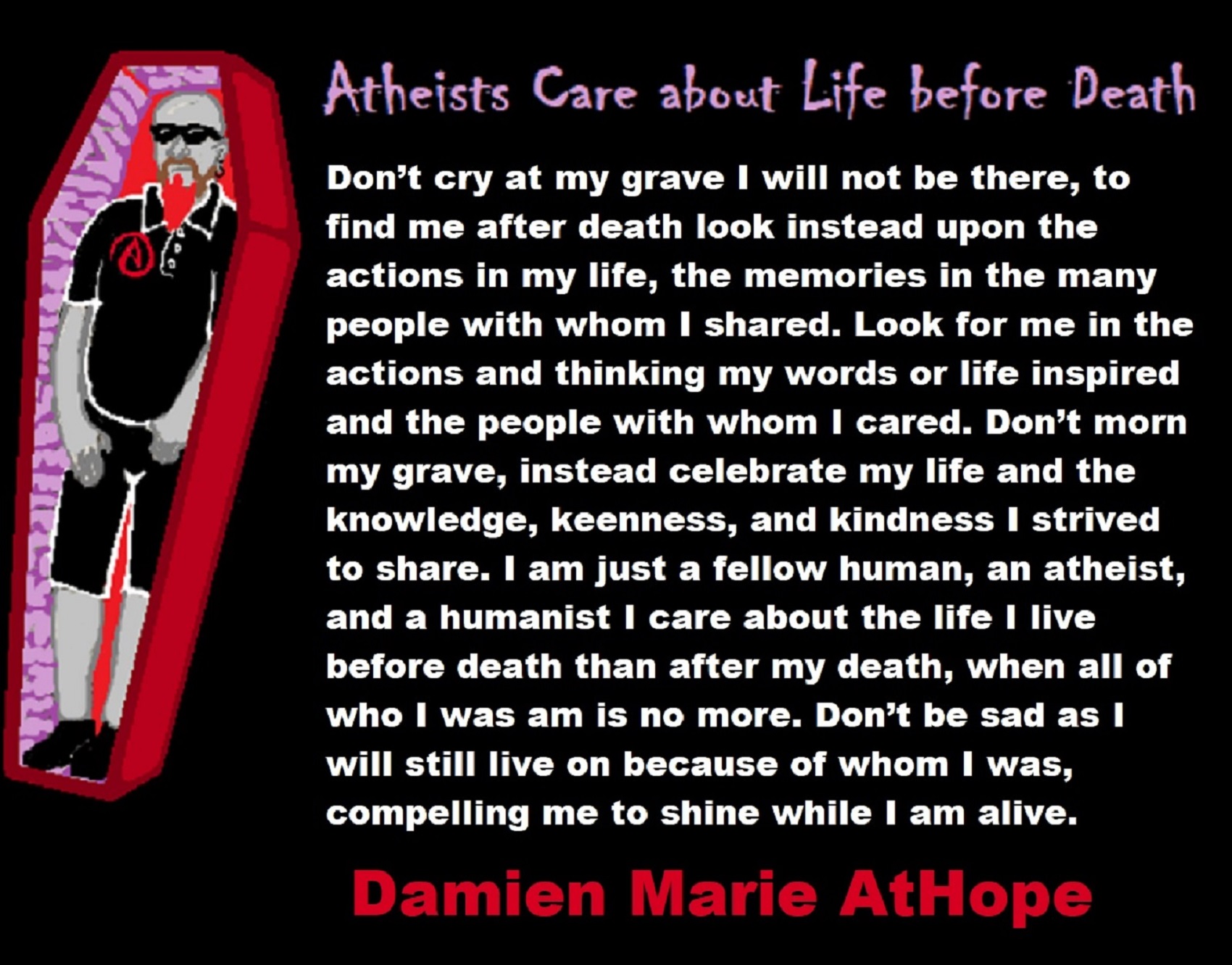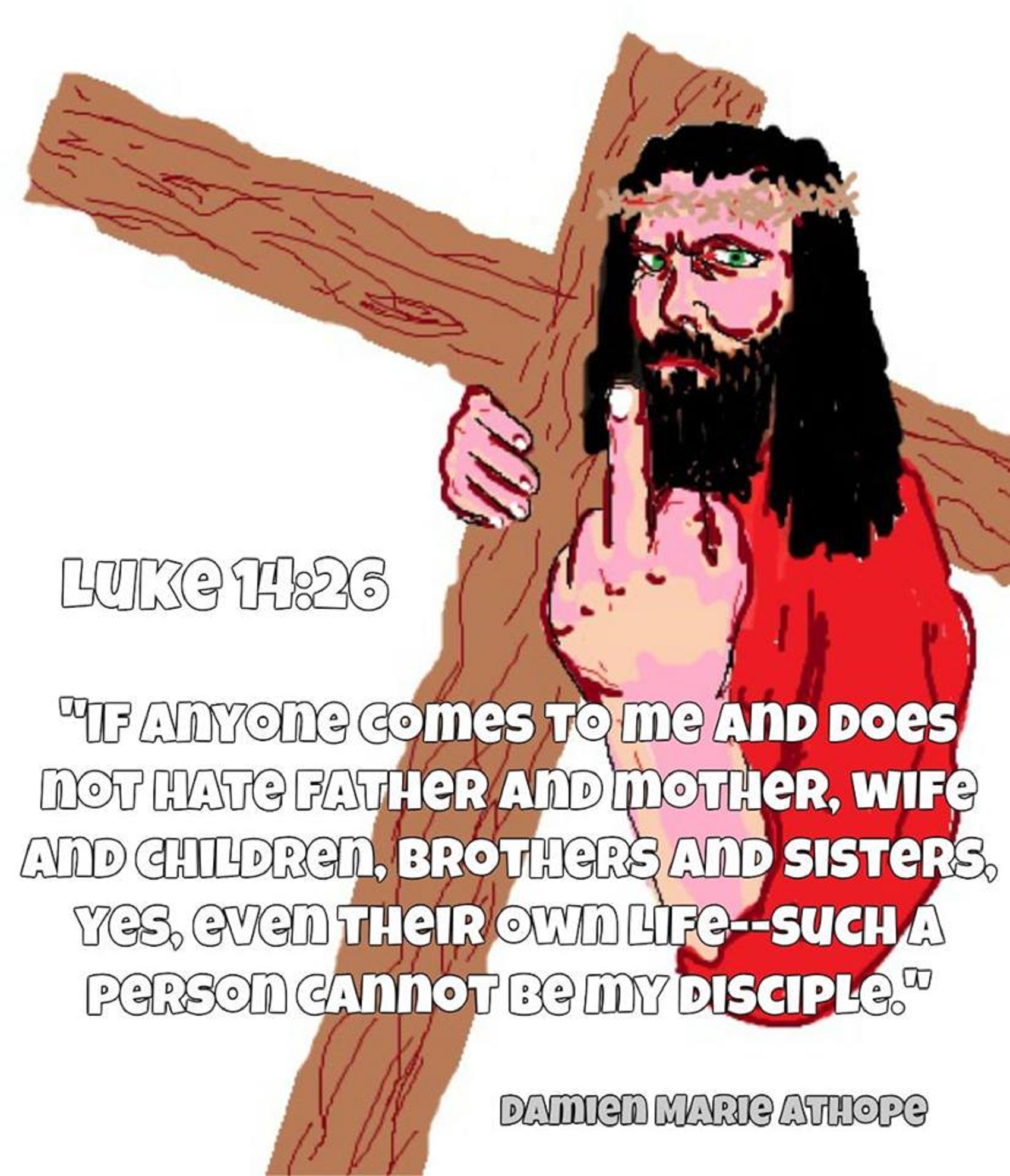
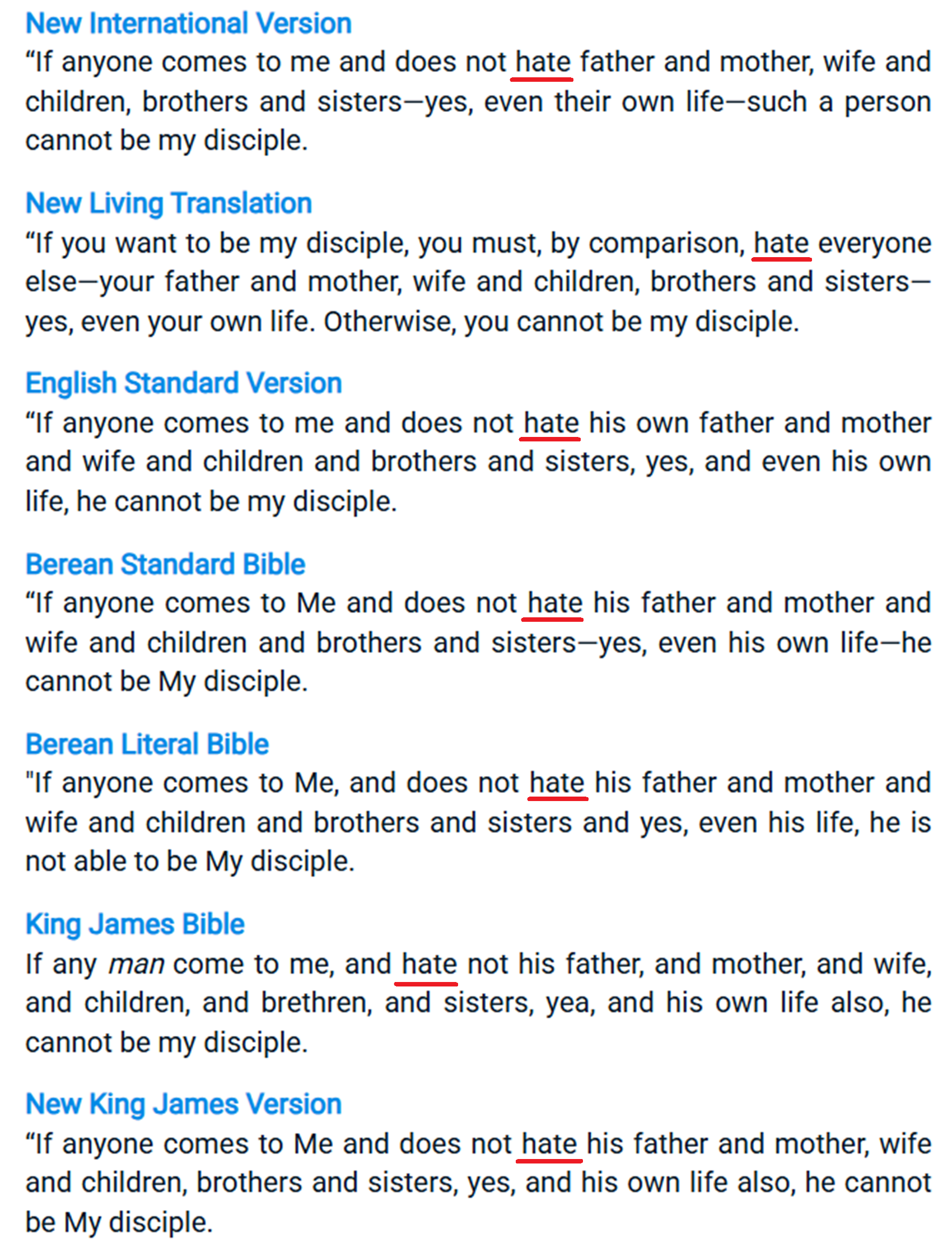
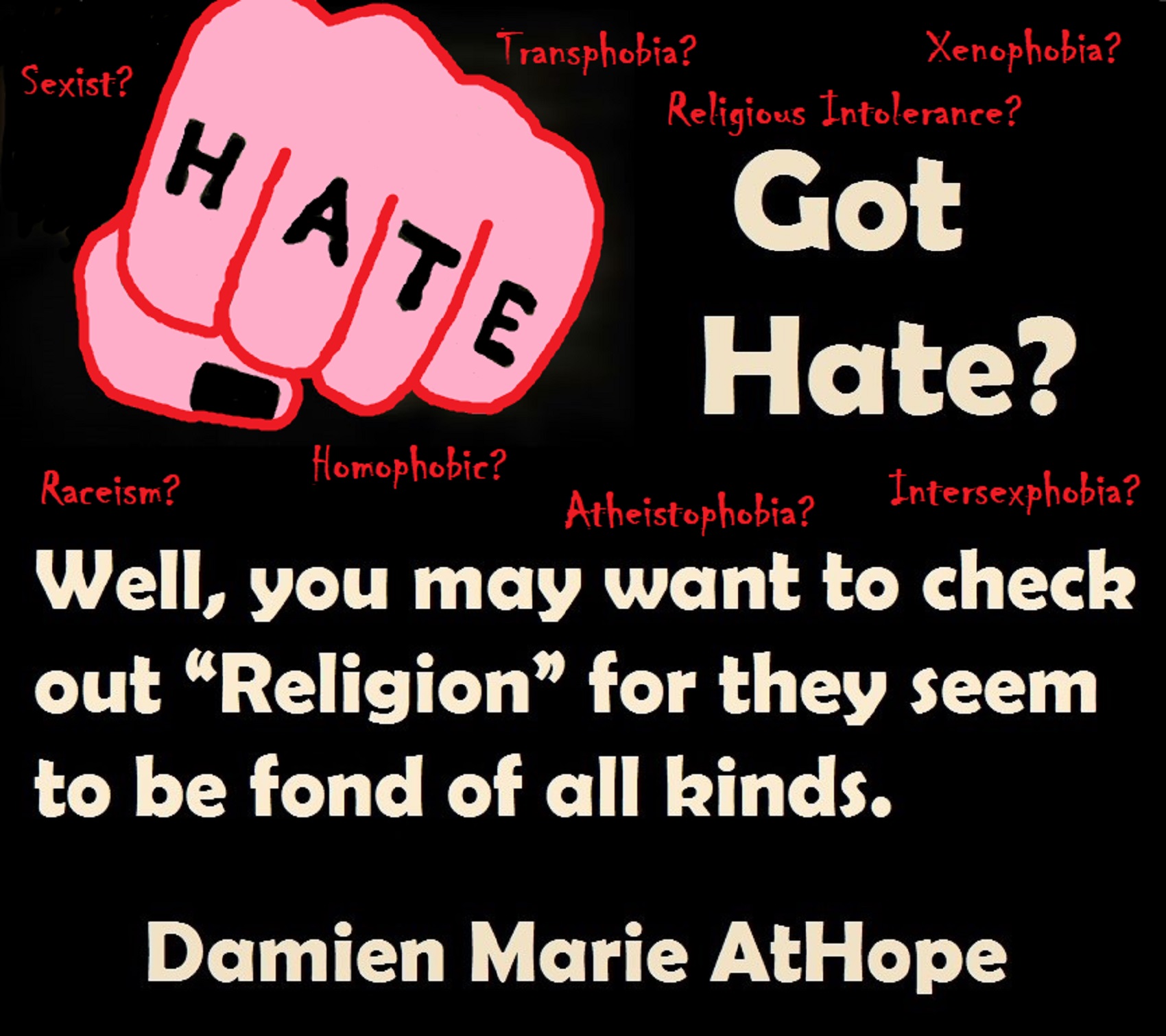
- 11th Hour Remnant Messenger
- Abundant Life Fellowship
- America’s Promise Ministries
- Christian Identity Church – Aryan Nations
- Church of the Sons of YHWH
- Covenant People’s Ministry
- Ecclesiastical Council for the Restoration of Covenant Israel
- Fellowship of God’s Covenant People
- First Baptist Church and Ministry
- First Century Christian Ministries
- Holy Order Ministry
- Identity Nation
- Kingdom Identity Ministries
- Kinsman Redeemer Ministries
- Knights of the Holy Identity
- Mission to Israel
- Non-Universal Teaching Ministries
- Our Place Fellowship
- Scriptures for America Ministries
- Shepherd’s Call Ministries
- The Church of Jesus Christ Christian / Aryan Nations
- The Covenant, The Sword, and the Arm of the Lord
- Thomas Robb Ministries
- United Identity Church of Christ
- Virginia Publishing Company
- Watchmen Bible Study Group
- Weisman Publications
- Yahweh’s Truth
- The Israelite Church of God in Jesus Christ
- Abiding Truth Ministries
- American Family Association
- Catholic Family and Human Rights Institute
- Chalcedon Foundation
- Christ the King Church (Larkspur, Colorado)
- Faithful Word Baptist Church
- Family Research Council
- Mission: America
- Pilgrims Covenant Church
- Providence Road Baptist Church
- Sons of Thundr (Faith Baptist Church)
- The Pray in Jesus Name Project
- Tom Brown Ministries
- Traditional Values Coalition
- True Light Pentecost Church
- Truth In Action Ministries
- Westboro Baptist Church
- Windsor Hills Baptist Church
- World Congress of Families/Howard Center for Family, Religion and Society
- Bill Keller Ministries
- Christian Anti-Defamation Commission
- Christian Books and Things
- Dove World Outreach Center
- European-American Evangelistic Crusades
- Florida Family Association
- Fundamentalist Latter Day Saints
- National Prayer Network
- Official Street Preachers
- Power of Prophecy
- Reformation-Bible Puritan-Baptist Church
- Society for the Practical Establishment and Perpetuation of the Ten Commandments
- The Brother Nathanael Foundation
- The Church at Kaweah
- Tony Alamo Christian Ministries
- Truth At Last
- Truth Triumphant
- Ku Klux Klan
- Christian Defense League
- Alliance for Catholic Tradition
- Catholic Action Resource Center
- Catholic Counterpoint
- Catholic Family News/Catholic Family Ministries, Inc.
- Christ or Chaos
- Culture Wars/Fidelity Press
- The Fatima Crusader/International Fatima Rosary Crusade
- IHM Media
- IHS Press
- In the Spirit of Chartres Committee
- Most Holy Family Monastery
- OMNI Christian Book Club
- The Remnant/The Remnant Press
- Slaves of the Immaculate Heart of Mary
- Michael’s Parish/Mount St. Michael
- Tradition in Action

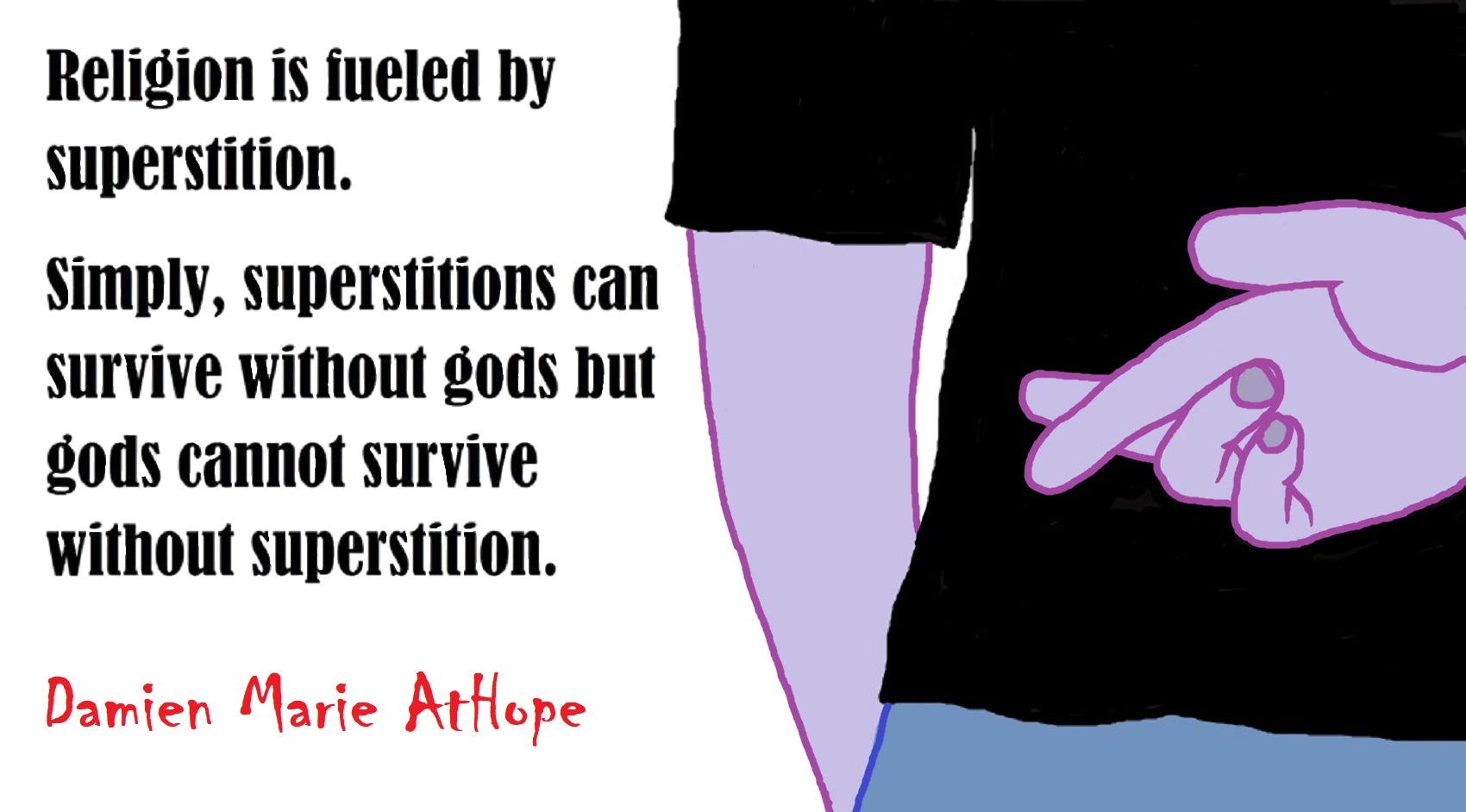
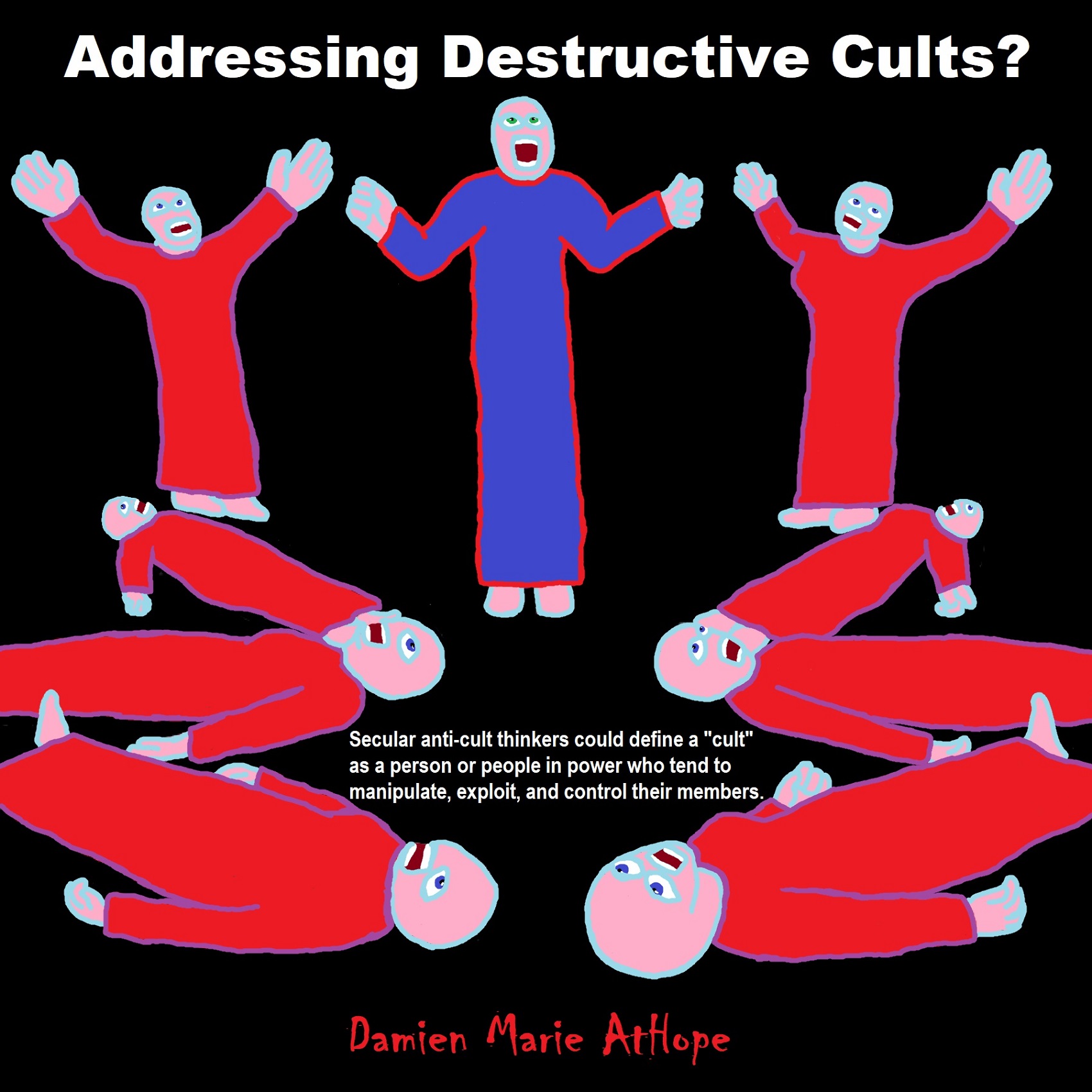
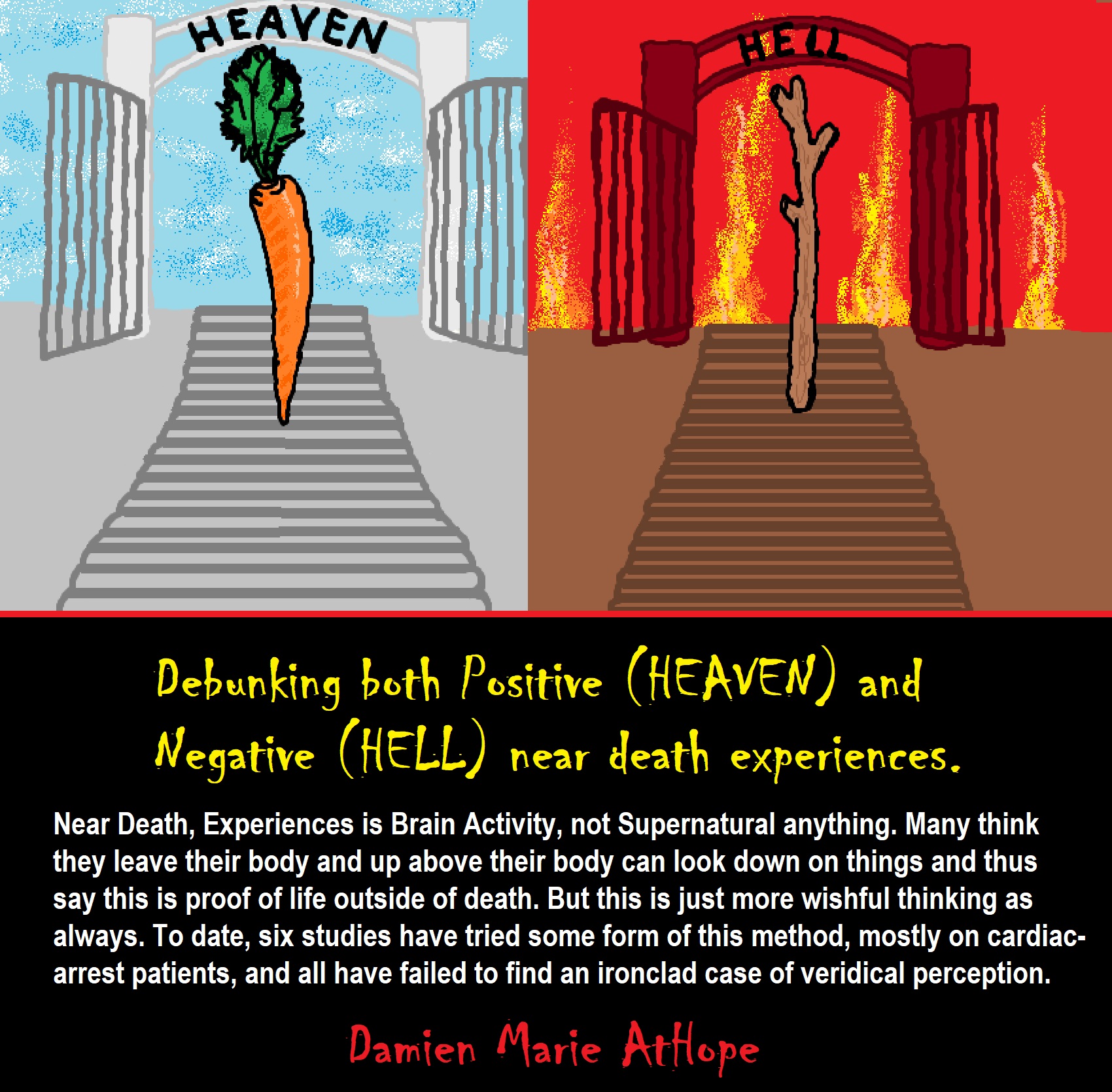
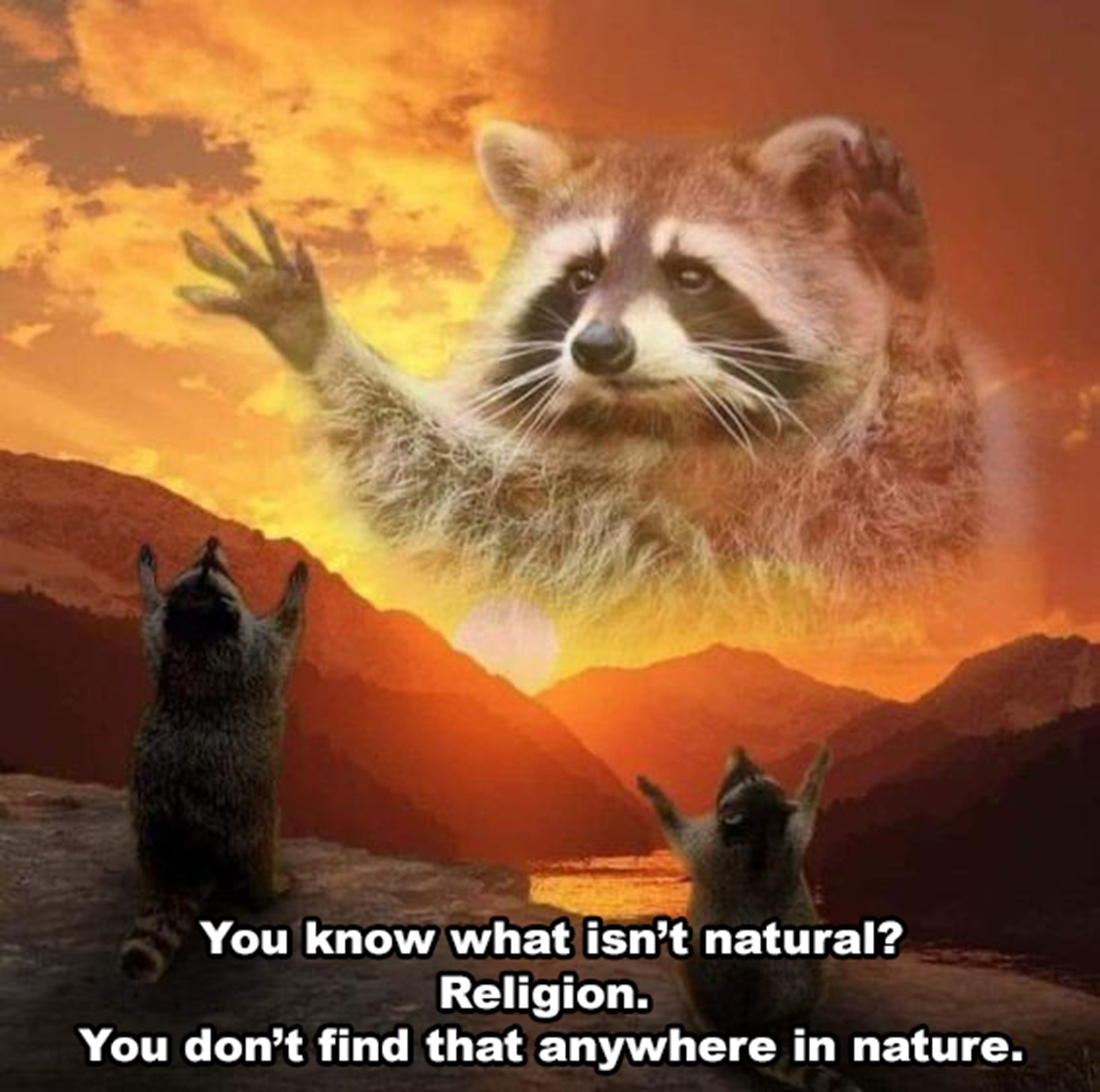
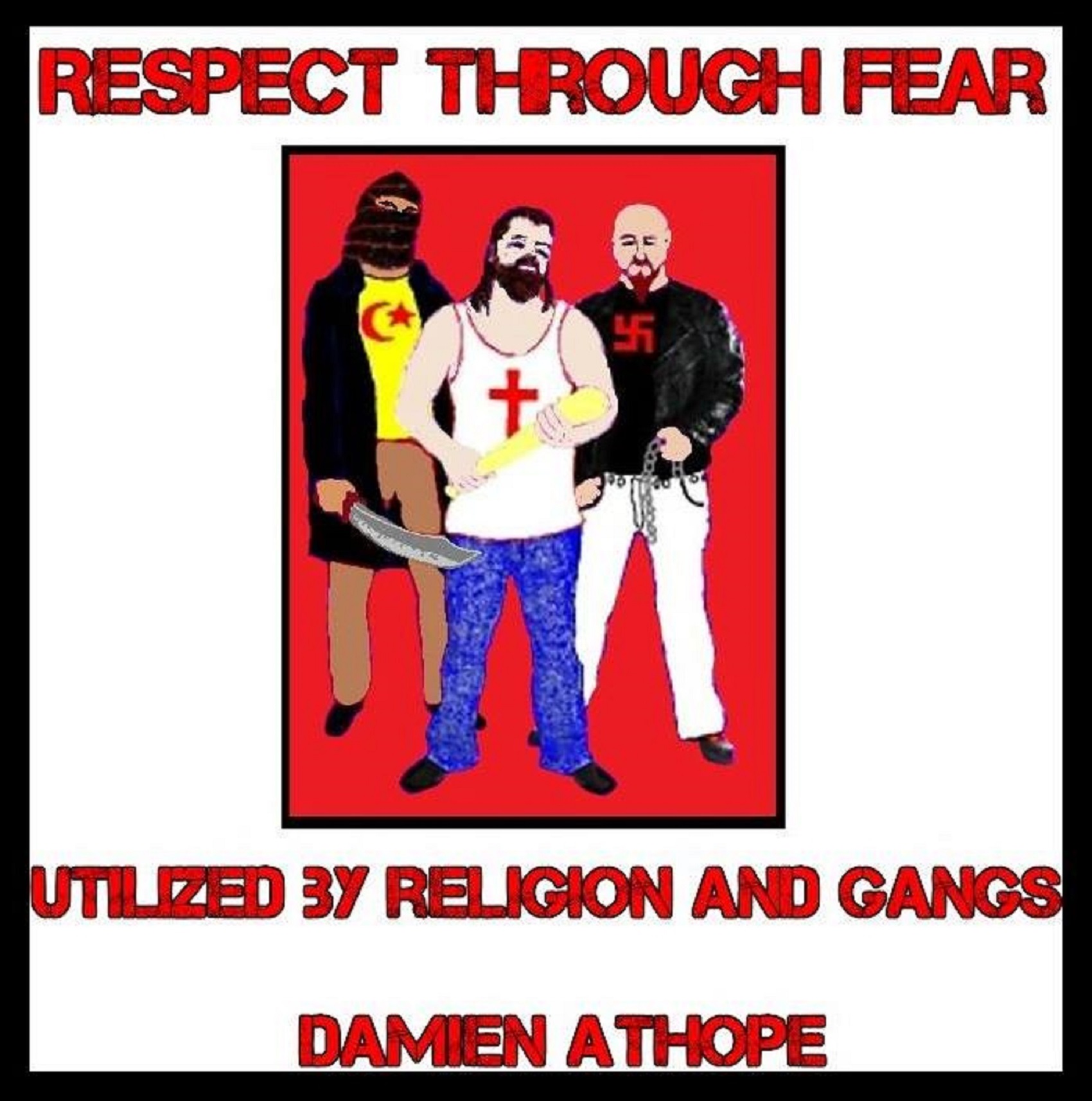
Hate group?
“A hate group is a social group that advocates and practices hatred, hostility, or violence towards members of a race, ethnicity, nation, religion, gender, gender identity, sexual orientation, or any other designated sector of society. According to the United States Federal Bureau of Investigation (FBI), a hate group’s “primary purpose is to promote animosity, hostility, and malice against persons belonging to a race, religion, disability, sexual orientation, or ethnicity/national origin which differs from that of the members of the organization.” ref
“In the US, the FBI does not publish a list of hate groups, and it also says that “investigations are only conducted when a threat or advocacy of force is made; when the group has the apparent ability to carry out the proclaimed act; and when the act would constitute a potential violation of federal law”. The FBI maintains statistics on hate crimes.” ref
“Two private American non-profit organizations that monitor intolerance and hate groups are the Anti-Defamation League (ADL) and the Southern Poverty Law Center (SPLC). They maintain lists of what they deem to be hate groups, supremacist groups, and anti-Semitic, anti-government, or extremist groups that have committed hate crimes. The SPLC’s definition of a “hate group” includes any group with beliefs or practices that attack or malign an entire class of people—particularly when the characteristics being maligned are immutable. However, at least for the SPLC, inclusion of a group in the list “does not imply a group advocates or engages in violence or other criminal activity.” According to USA Today, their list ranges from “white supremacists to black nationalists, neo-Nazis to neo-Confederates.” ref
“According to the SPLC, from 2000 to 2008, hate group activity saw a 50 percent increase in the US, with a total of 926 active groups. In 2019, the organization’s report showed a total of 1,020 hate groups, the highest number in 20 years, and a 7% increase from 2017 to 2018. The previous high was 1,018 in 2011, and the recent low point was 2014, when the list included 784 groups. A rise in white nationalist groups from 100 in 2017 to 148 in 2018 was the most significant increase in the 2019 report.” ref
“Since 2010 the term alt-right, short for “alternative right,” has come into usage. This broad term includes a range of people who reject mainstream conservatism in favor of forms of conservatism that may embrace implicit or explicit racism or white supremacy. The alt-right is described as being “a weird mix of old-school neo-Nazis, conspiracy theorists, anti-globalists, and young right-wing internet trolls—all united in the belief that white male identity is under attack by multicultural, “politically correct” forces.” ref
“Four categories associated with hate groups’ propensity for violence are: organizational capacity, organizational constituency, strategic connectivity, and structural arrangement. The larger an extremist group is and the longer it has existed, the more prone the group is to engage in violence. Regionally, hate groups based in the West and Northeast are more likely to engage in violence than those based in the South. If a group has a charismatic leader, it is more likely to be violent. Groups that share a conflict-based relationship with another group are more likely to engage in extreme violence. The amount of ideological literature a group publishes is linked to significant decreases in a group’s violent behavior, with more literature linked to lower levels of violence.” ref
“The California Association for Human Relations Organizations (CAHRO) asserts that hate groups such as the Ku Klux Klan (KKK) and White Aryan Resistance (WAR) preach violence against racial, religious, sexual, and other minorities in the United States. Joseph E. Agne argues that hate-motivated violence is a result of the successes of the civil rights movement, and he asserts that the KKK has resurfaced and that new hate groups have formed. Agne argues that it is a mistake to underestimate the strength of the hate-violence movement, its apologists, and its silent partners.” ref
“In the US, crimes that “manifest evidence of prejudice based on race, religion, sexual orientation, or ethnicity, including the crimes of murder and nonnegligent manslaughter; forcible rape; robbery; aggravated assault; burglary; larceny-theft; motor vehicle theft; arson; simple assault; intimidation; and destruction, damage or vandalism of property”, directed at the government, an individual, a business, or institution, involving hate groups and hate crimes, may be investigated as acts of domestic terrorism.” ref
“Counter-terrorism expert Ehud Sprinzak argues that verbal violence is “the use of extreme language against an individual or a group that either implies a direct threat that physical force will be used against them, or is seen as an indirect call for others to use it.” Sprinzak argues that verbal violence is often a substitute for real violence, and that the verbalization of hate has the potential to incite people who are incapable of distinguishing between real and verbal violence to engage in actual violence.” ref
“People tend to judge the offensiveness of hate speech on a gradient depending on how public the speech is and what group it targets. Although people’s opinions of hate speech are complex, they typically consider public speech targeting ethnic minorities to be the most offensive. Historian Daniel Goldhagen, discussing antisemitic hate groups, argues that we should view verbal violence as “an assault in its own right, having been intended to produce profound damage—emotional, psychological, and social—to the dignity and honor of the Jews. The wounds that people suffer by … such vituperation … can be as bad as … [a] beating.” ref
“In the mid-1990s, the popularity of the Internet brought new international exposure to many organizations, including groups with beliefs such as white supremacy, neo-Nazism, homophobia, Holocaust denial, and Islamophobia. Several white supremacist groups have founded websites dedicated to attacking their perceived enemies. In 1996, the Simon Wiesenthal Center of Los Angeles asked Internet access providers to adopt a code of ethics that would prevent extremists from publishing their ideas online. In 1996, the European Commission formed the Consultative Commission on Racism and Xenophobia (CRAX), a pan-European group which was tasked to “investigate and, using legal means, stamp out the current wave of racism on the Internet.” ref
Religious hate groups?
“The Southern Poverty Law Center (SPLC) has designated several Christian groups as hate groups, including the American Family Association, the Family Research Council, Abiding Truth Ministries, American Vision, the Chalcedon Foundation, the Dove World Outreach Center, the Traditional Values Coalition and Westboro Baptist Church. Some conservatives have criticized the SPLC for its inclusion of certain Christian groups, such as the Family Research Council, on its list.” ref
“The SPLC classifies the Nation of Islam (NOI) as a hate group under the black separatist category and the Israelite School of Universal Practical Knowledge (ISUPK) as a hate group under the black supremacist category. The NOI preaches that a black scientist named Yakub created a race of White devils, on the Greek island of Patmos. Historically a black-only group, white people now form a small part of the NOI membership. Alongside the ISUPK, numerous other sects and organizations within the Black Hebrew Israelite movement expound extremist, black supremacist, religious anti-Semitic, and anti-white racist beliefs, as well as homophobic, transphobic, and sexist beliefs. The white supremacist Creativity Movement (formerly the World Church of the Creator), led by Matthew F. Hale, is associated with violence and bigotry. Aryan Nations is another religiously-based white supremacist hate group.” ref
“Westboro Baptist Church is considered a hate group by multiple sources and the WBC is monitored as such by the Anti-Defamation League and the Southern Poverty Law Center. The church has been involved in actions against gay people since at least 1991, when it sought a crackdown on homosexual activity at Gage Park six blocks northwest of the church. In addition to conducting anti-gay protests at military funerals, the organization pickets celebrity funerals, and public events. Protests have also been held against Jews and Catholics, and some protests have included WBC members stomping on the American flag or flying the flag upside down on a flagpole. The church also has made statements such as “thank God for dead soldiers,” “God blew up the troops,” and “God hates America.” The church has faced several accusations of brainwashing and has been criticized as a cult because of its provocative stance against homosexuality and the United States, and it has been condemned by many mainstream LGBT rights opponents as well as by LGBT rights supporters.” ref
“Hate groups directed at women, particularly those consisting mainly of young men which include pick-up artist, incel and hardline anti-women groups, are of concern to some experts. Using similar recruitment techniques to those used by far-right extremist groups, they target teenagers and vulnerable young men, including the use of methods akin to grooming. UK author Laura Bates believes that some of these groups should be classified as terrorist groups; The Proud Boys, which, according to the Southern Poverty Law Center, is known for its misogynistic rhetoric and has been designated as a domestic terrorist group in Canada.” ref
“Traditionally, hate groups recruited members and spread extremist messages by word of mouth, or through the distribution of flyers and pamphlets. In contrast, the Internet allows hate group members from all over the world to engage in real-time conversations. The Internet has been a boon for hate groups in terms of promotion, recruitment, and expansion of their base to include younger audiences. An Internet hate group does not have to be part of a traditional faction such as the Ku Klux Klan.” ref
“While many hate sites are explicitly antagonistic or violent, others may appear patriotic or benign, and this façade may contribute to the appeal of the groups. Hate group websites work towards the following goals: to educate group members and the public, to encourage participation, to claim a divine calling and privilege, and to accuse out-groups (e.g. the government or the media). Groups that work effectively towards these goals via an online presence tend to strengthen their sense of identity, decrease the threat levels from out-groups, and recruit more new members.” ref
“The Simon Wiesenthal Center (SWC), in its 2009 iReport, identified more than 10,000 problematic hate and terrorist websites and other Internet postings. The report includes hate websites, social networks, blogs, newsgroups, YouTube, and other video sites. The findings illustrate that as the Internet continues to grow, extremists find new ways to seek validation of their hateful agendas and recruit members.” ref
“Creators of hate pages and groups on Facebook choose their target, set up their page or group, and then recruit members. Anyone can create a Facebook group and invite followers to post comments, add pictures and participate in discussion boards. A Facebook page is similar, with the exception that one must “like” the page in order to become a member. Because of the ease of creating and joining such groups, many so-called hate groups exist only in cyberspace. United Patriots Front, an internet-based Australian far-right anti-immigration and neo-nazi organization formed in 2015 has been described as a hate group.” ref
“Hateful intergroup conflict may be motivated by “in-group love,” a desire to positively contribute to the group to which one belongs, or “out-group hate,” a desire to injure a foreign group. Both individuals and groups are more motivated by “in-group love” than “out-group hate,” even though both motivations might advance a group’s status. This preference is especially salient when a group is not situated in a competitive position against another. This partiality towards cooperative behavior suggests that intergroup conflict might decline if group members devoted more energy to positive in-group improvements than to out-group competition. Groups formed around a set of moral codes are more likely than non-morality-based groups to exhibit “out-group hate” as a response to their especially strong sense of “in-group love.” ref
“Intergroup threat occurs when one group’s interests threaten another group’s goals and well-being Intergroup threat theories provide a framework for intergroup biases and aggression. One type of intergroup threat theory, realistic group conflict theory, addresses competition between groups by positing that when two groups are competing for limited resources, one group’s potential success is at odds with the other’s interests, which leads to negative out-group attitudes. If groups have the same goal, their interactions will be positive, but opposing goals will worsen intergroup relations. Intergroup conflict may increase in-group unity, leading to a larger disparity and more conflict between groups.” ref
“Symbolic threat theory proposes that intergroup bias and conflict result from conflicting ideals, not from perceived competition or opposing goals. Biases based on symbolic threat tend to be stronger predictors of practical behavior towards out-groups than biases based on realistic threat. Realistic group conflict theory and symbolic threat theory are, in some cases, compatible. Integrated-threat theory recognizes that conflict can arise from a combination of intergroup dynamics and classifies threats into four types: realistic threat, symbolic threat, intergroup anxiety, and negative stereotypes. Intergroup threat theories provide a framework for intergroup biases and aggression. Intergroup anxiety refers to a felt uneasiness around members of other groups, which is predictive of biased attitudes and behaviors. Negative stereotypes are also correlated with these behaviors, causing threat based on negative expectations about an out-group.” ref
“According to the 7-stage hate model, a hate group, if unimpeded, passes through seven successive stages. In the first four stages, hate groups vocalize their beliefs and in the last three stages, they act on their beliefs. Factors that contribute to a group’s likelihood to act include the vulnerability of its members as well as its reliance on symbols and mythologies. This model points to a transition period that exists between verbal violence and acting out that violence, separating hardcore haters from rhetorical haters. Thus, hate speech is seen as a prerequisite of hate crimes, and as a condition of their possibility.” ref
“Hate group intervention is most possible if a group has not yet passed from the speech to the action stage, and interventions on immature hate groups are more effective than those that are firmly established. Intervention and rehabilitation is most effective when the one investigating a hate group can identify and deconstruct personal insecurities of group members, which in turn contribute to the weakness of the group. Perhaps most critical to combating group hate is to prevent the recruitment of new members by supporting those who are most susceptible, especially children and youth, in developing a positive self-esteem and a humanized understanding of out-groups.” ref
- Hate Map: There are 838 hate groups currently operating in the US.
- Extremist Files: A database on prominent extremist groups and individuals
- 100 Days in Trump’s America: A report on white nationalists and their agenda to infiltrate the mainstream
- Terror From The Right: A synopsis of radical-right terrorist plots, conspiracies, and racist rampages since the Oklahoma City bombing in 1995. It includes a roster of murdered law enforcement officials. ref
“Despite recent progress toward acceptance across America, the LGBTQ community in the Deep South continues to face significant barriers to equality, as few states offer protection against discrimination based on sexual orientation or gender identity. In each of the Southern states, for example, employers may fire or refuse to hire a person because of their sexual orientation – and no Southern state prohibits discrimination against LGBTQ people in public accommodations or housing. In addition, LGBTQ youth often encounter harassment and bullying in school, and the community is frequently victimized by violent hate crime. We’re working in the courts to ensure that LGBTQ people achieve full equality under the law. Our work has a national reach but is focused primarily on the Southeast, where relatively few organizations advocate for the LGBTQ community.” ref
In recent years, we’ve launched groundbreaking cases to:
- Challenge gay-to-straight “conversion therapy” as fraudulent;
- Obtain equal government benefits for veterans;
- Protect LGBTQ children from violence and harassment in school;
- Ensure the parental rights of LGBTQ people;
- Protect the right to proper medical treatment and safe housing for transgender prisoners;
- Force states to recognize the rights of same-sex couples; and
- Protect the First Amendment rights of LGBTQ students. ref
WHITE NATIONALISTS?
“White nationalist groups espouse white supremacist or white separatist ideologies, often focusing on the alleged inferiority of nonwhites. Groups listed in a variety of other categories—Ku Klux Klan, neo-Confederate, neo-Nazi, racist skinhead, and Christian Identity—could also be fairly described as white nationalist.” ref
Top Takeaways
“The number of white nationalist groups dipped in 2020, down 27 groups from 2019. While COVID-19 partially explains the change, most of the decline was due to the disbanding of American Identity Movement, one of the largest and mostly active white nationalist groups in the country in recent years. This year, activity plummeted until Patrick Casey finally announced the group’s dissolution in November. Much of that energy has shifted toward the so-called Groyper movement, which is not organized into a formal group.” ref
“Chapters of The Right Stuff also declined as the leaders focused their energy on their podcast platform and the National Justice Party. They have also faced criticism from other white power activists for placing monetary gain above growing their movement. Many white nationalist groups have failed to find footing on mainstream social media sites and fled to platforms like Telegram and Parler.” ref
“White nationalists have had difficulty raising money online because many payment processors have banned them from their services. Most now rely on cryptocurrency, including Bitcoin and Monero. The federal government provided a boost to 14 hate groups, including American Renaissance, by providing them with PPP funds meant to provide relief from the pandemic.” ref
Key Moments
“In January, police arrested seven members of The Base, three for plotting to murder a couple allegedly engaged in antifascist political activity. In October, two more members of the group were arrested in Michigan and charged with gang membership, unlawful posting of a message, and using computers to commit a crime.” ref
“Since 2017, the accelerationist wing has been rising to the forefront of the white nationalist movement. In recent months, though, the “mainstreamer” or “movementarian” part of the movement has regained some momentum. Their success comes in large part from the so-called Groyper movement, led by Nick Fuentes and Patrick Casey, that has opened up channels for young men to challenge mainstream conservatives.” ref
“One of the most notable trends within the far-right this year has been the emergence of the Boogaloo boys, an amorphous group of far-right actors who believe the United States is headed toward a second civil war. While some of the subculture’s adherents describe themselves as hardcore libertarians, others hold overtly white nationalist ideas.” ref
What’s Ahead
“The white nationalist movement is on two different tracks. One is focused on harnessing populist anger and frustration at Trump’s loss to channel people into their movement. Figures like Nick Fuentes are attacking mainstream conservatives while painting themselves as the future of the right in America. Most of the people associated with this part of the white nationalist movement do not belong to groups and likely will not join any in the near future.” ref
“The other part of the movement believes in the strategies of accelerationism. While some join groups like The Base, the movement is increasingly decentralized. Most adherents exist as part of the online accelerationist subculture, where they absorb extremist ideas without some of the risks involved in joining a group. This does not mean the movement is any less dangerous; lone actors motivated by white power ideology remain a persistent threat.” ref
“There is increasing overlap in the rhetoric of these two tracks. Among the whole of the white nationalist movement, there is a growing belief that “political solutions” are no longer viable – an idea that seems especially convincing in the aftermath of Trump’s loss. Intimidation and other acts of violence are increasingly accepted on the far right, perhaps best exemplified by its embrace of Kyle Rittenhouse. Increasingly violent language is common within the movement’s rhetoric and anti-democratic ideas will likely seep further into the political mainstream.” ref
“Adherents of white nationalist groups believe that white identity should be the organizing principle of the countries that make up Western civilization. White nationalists advocate for policies to reverse changing demographics and the loss of an absolute, white majority. Ending non-white immigration, both legal and illegal, is an urgent priority — frequently elevated over other racist projects, such as ending multiculturalism and miscegenation — for white nationalists seeking to preserve white, racial hegemony.” ref
“White nationalists seek to return to an America that predates the implementation of the Civil Rights Act of 1964 and the Immigration and Nationality Act of 1965. Both landmark pieces of legislation are cited as the harbingers of white dispossession and so-called “white genocide” — the idea that whites in the United States are being systematically replaced and destroyed. These racist aspirations are most commonly articulated as the desire to form a white ethnostate — a calculated idiom favored by white nationalists in order to obscure the inherent violence of such a radical project. Appeals for the white ethnostate are often disingenuously couched in proclamations of love for members of their own race, rather than hatred for others.” ref
“This platitude collapses under scrutiny. Two favorite animating myths of white nationalists are the victimhood narrative of black-on-white crime — the idea that the dominant white majority is under assault by supposedly violent people of color — and the deceptively titled “human biodiversity,” the pseudo-scientific ascription of human behaviors, in this case along racial lines, to “non-negligible” genetic difference among humans. Appeals to the “empirical science” of human biodiversity are frequently coupled with thinly veiled nods to white, racial superiority.” ref
“In addition to their obsession with declining white birth rates, these themes comprise some of the most powerful propaganda that animates and drives the white nationalist movement. Adherents frequently cite Pat Buchanan’s 2001 book, The Death of the West, which argues that these declining white birth rates and an “immigrant invasion” will transform the United States into a third world nation by 2050, as the text responsible for their awakening, or “red pill.”
White nationalists also frequently cite American Renaissance, a pseudo-academic organization dedicated to spreading the myth of black criminality, scientific racism, and eugenic theories. Its annual conference, a multi-day symposium with a suit-and-tie dress code, is a typical early stop for new white nationalists. Although it isn’t ubiquitous, there is a current of antisemitism in the modern-day white nationalist movement. Jews are common scapegoats for the perceived cultural and political grievances of white nationalists. White nationalist and antisemitic literature and conferences also have frequent author and speaker overlap. Kevin MacDonald, the author of The Culture of Critique — a trilogy of books alleging a Jewish control of culture and politics with evolutionary psychology — is a frequent guest in white nationalist media and at events. His writing is frequently cited as what introduces white nationalists to the idea of a Jewish conspiracy.” ref
“White nationalists also commonly pass through paleoconservatism — an anti-interventionist strand of libertarianism that seeks to limit government, restrict immigration, reverse multicultural programs and deconstruct the social welfare programs. Some of white nationalism’s most prominent voices, including Richard Spencer, Jared Taylor, and Peter Brimelow did stints at Taki’s Magazine, the most prominent paleoconservative journal.” ref
“Strategies for pursuing the white ethnostate fall into two major categories: mainstreaming and vanguardism. Mainstreamers believe that infiltrating and subverting the existing political institutions is the only realistic path to power. They aspire to convert disaffected “normies” to their politics and advocate for white nationalists to seek positions — in politics and society — that have access to resources otherwise unavailable to avowed racists. These resources often require that white nationalists disguise their politics and compromise on their most extreme positions. Mainstreaming allows those sympathetic to white nationalism to pursue or enact policies furthering white nationalist priorities. These aren’t always exclusive to white nationalism, such as immigration restriction or the elimination of social welfare programs.” ref
“Vanguardists believe that revolution is the only viable path toward a white ethnostate. They believe that reforming the system is impossible and therefore refuse to soften their rhetoric. They typically seek to reform what they believe to be an “anti-white” establishment through radical action. Vanguardists favor public demonstrations to anonymous, online activism and hope that by turning out in numbers at protests they can defy so-called political correctness, polarize politics and accelerate what they view as the inevitable collapse of America.” ref
“The racist so-called “alt-right,” which came to prominence in late 2015, is white nationalism’s most recent formulation. While the themes of white dispossession, nostalgia for pre-1960s America, and the desire for separatism remain central to the ideology, its edges are softer and porous, allowing for the influence and inclusion of more radical elements, including a suite of neo-Nazi organizations. It also welcomed an unsavory ecosystem of internet trolls. These chaos agents contribute a distinct style of discourse that include a notable lack of empathy, extreme, often violence-tinged, rhetoric, and willingness to dehumanize their enemies in service of political goals. Throughout 2016, with the contentious presidential campaign as a unique backdrop, the nascent alt-right launched a novel campaign of “cultural vanguardism,” tightly focused on radically altering culture — in the form of a total war on “political correctness” — rather than politics. This third style of activism, which borrowed from both the mainstreamers and the vanguardists, primarily took place online in the form of “shitposting,” meme-making, and online harassment.” ref
“As momentum dissipated post-presidential election and online activism began to yield diminishing returns, white nationalists reverted to tried tactics such as public demonstrations, including college speaking engagements and propaganda distribution, primarily in the form of anonymous flyerings and banner drops — also on college campuses. Universities, with their impressionable and at times combustible student bodies provide easy targets for the newly trollish tactics of an alt-right obsessed with youth recruitment. Groups listed in a variety of other categories — Ku Klux Klan, neo-Confederate, neo-Nazi, racist skinhead, and Christian Identity — can also be fairly described as “white nationalist.” Although, as organizational loyalty has dwindled and the internet has become white nationalism’s organizing principle, the ideology is best understood as a loose coalition of social networks orbiting online propaganda hubs and forums.” ref
Christian Nationalism
“Christian nationalism is Christianity-affiliated religious nationalism. Christian nationalists primarily focus on internal politics, such as passing laws that reflect their view of Christianity and its role in political and social life. In countries with a state Church, Christian nationalists, in seeking to preserve the status of a Christian state, uphold an antidisestablishmentarian position. Christian nationalists have emphasized a recovery of territory in which Christianity formerly flourished, historically to establish a Pan-Christian state out of the countries within Christendom.” ref
“They actively promote religious (Christian) discourses in various fields of social life, from politics and history, to culture and science; with respect to legislation, for example, Christian nationalists advocate blue laws. Christian nationalists have encouraged evangelism, as well as for families to have more children as a means of increasing the Christian population growth (cf. Quiverfull). Christian nationalists support the presence of Christian symbols and statuary in the public square, as well as state patronage for the display of religion, such as school prayer and the exhibition of nativity scenes during Christmastide or the Christian Cross on Good Friday.” ref
“Christian nationalists draw support from the broader Christian right. Christian nationalistic movements often have complex leadership structures, depending on the nature of their relationship with local Church institutions. Some movements are lay-oriented, with symbolic clerical participation and indirect support from local Church structures, while others are led or strongly influenced by local clergy. The involvement of clergy in various Christian nationalistic movements since the 19th century has led to the development of particular forms of Christian nationalism which are known as clerical nationalism (also known as clero-nationalism or clerico-nationalism).” ref
“Christian nationalists have often cooperated across denominational lines, fostering a spirit of ecumenism in order to advance certain objectives. In the Middle Ages, efforts were made in order to establish a Pan-Christian state by uniting the countries within Christendom. Christian nationalism played a role in this era in which Christians felt the impulse to recover lands in which Christianity flourished. After the rise of Islam, certain parts of North Africa, East Asia, Southern Europe, Central Asia, and the Middle East lost Christian control. In response, Christians across national borders mobilized militarily and a “wave of Christian reconquest achieved the recovery of Spain, Portugal, and southern Italy, but was unable to recover North Africa nor—from a Christian point of view, most painful of all—the Holy Land of Christendom.” ref
“The state atheism of the former Eastern Bloc, which brought about a persecution of Christians, caused a rise in Christian nationalism in the West, as well as ecumenical cooperation among Christians across denominational lines. For example, the United States, in 1956, adopted “In God We Trust” as its official motto “to differentiate itself from the Soviet Union, its Cold War enemy that was widely seen as promoting atheism.” During this time, Christian human rights non-governmental organisations, such as Voice of the Martyrs, were founded in order to provide support to Christians persecuted in the Communist Bloc, also engaging in activities such as Bible smuggling. In the 1990s, the period surrounding the collapse of the Soviet Union led “a surge in the activity of religious groups and interests among broad segments of the population”. The revival of the Church occurred in these formerly Communist areas; Christian missionaries also entered the former Eastern Bloc in order to engage in evangelism there, winning people back to Christianity.” ref
“Christian nationalism in the United States manifests itself through the promotion of religious art and symbolism in the public square, such as the displaying of the Ten Commandments and the national motto “In God We Trust“, which came into force in order to distinguish the United States from the state atheism of the former Soviet Union. The Foundation for Moral Law, for example, was founded for this purpose. The ideology also advocates the view that public policy should be formed strictly by Christian beliefs, such as imposing legal restrictions against abortion. Christian nationalists support Sunday blue laws in keeping with traditional first-day Sabbatarian principles; the Lord’s Day Alliance (LDA) was organized by representatives of various Christian denominations to this end. In 2018, the Congressional Prayer Caucus Foundation began Project Blitz to achieve these goals.” ref
“The National Reform Association is an organization, founded in 1864 and active to this day, that seeks to introduce a Christian amendment to the Constitution of the United States. Advocacy groups, such as the Alliance Defending Freedom and First Liberty Institute, work to defend their view of the free exercise clause of the First Amendment. The Christian Liberty Party is a political party that sees the United States as a Christian country.” ref
“Christian nationalists believe that the US is meant to be a Christian nation and want to “take back” the US for God. Experts say that Christian-associated support for right-wing politicians and social policies, such as legislation related to immigration, gun control, and poverty is best understood as Christian nationalism, rather than as evangelicalism per se. Studies of white evangelicals show that, among people who self-identify as evangelical Christians, the more they attend church, the more they pray, and the more they read the Bible, the less support they have for nationalist policies. Non-nationalistic evangelicals agree ideologically with Christian nationalists in areas such as patriarchal policies, gender roles, and sexuality.” ref
“Andrew Whitehead and Samuel Perry summarize Christian nationalism with the following statements:
- The federal government should declare the United States a Christian nation.
- The federal government should advocate Christian values.
- The federal government should not enforce the strict separation of church and state.
- The federal government should allow religious symbols in public spaces.
- The success of the United States is part of God’s plan.
- The federal government should allow prayer in public schools.” ref
“Religious nationalism characterized by communal adherence to Eastern Orthodoxy and national Orthodox Churches is found in many states of Eastern Europe and in the Russian Federation. Many Russian Neo-Fascist and Neo-Nazi groups, such as the Russian National Unity, call for an increased role for the Russian Orthodox Church. And in Poland, nationalism was always characterized by loyalty to the Roman Catholic Church. Groups like the National Revival of Poland use slogans like Wielka Polska Katolicka (Great Catholic Poland) and protest vigorously against the legalization of gay marriage and abortion. Conservative religious groups connected with Radio Maryja are often accused of harboring nationalist and antisemitic attitudes.” ref
“In Canada, Christian nationalism has many similarities with the expression of the ideology in the United States. Some unique aspects of Christian nationalism in Canada come from appeals to the purported Christian foundation of the country. Groups often appeal to the preamble of the Canadian Charter of Rights and Freedoms to justify their beliefs that Canada should be a Christian nation.” ref
“The COVID-19 pandemic saw a rise in Christian nationalist activity with many groups using anti-lockdown sentiments to expand their reach to more people. The group Liberty Coalition Canada has garnered support from many elected politicians across Canada. In their founding documents, they argue that “it is only in Christianized nations that religious freedom has ever flourished.” This group has garnered support from various groups, including supporters of far-right hate groups. Their rallies have attracted supporters of Alex Jones and Canada First, a spin-off of Nick Fuentes‘ white supremacist group America First. Many of Liberty Coalition Canada’s leaders are pastors that have racked up millions in potential fines for violating COVID protocols and some of them express ultra-conservative views.” ref
Christian Identity?
“Christian Identity (also known as Identity Christianity) is an interpretation of Christianity which advocates the belief that only Celtic and Germanic peoples, such as the Anglo-Saxon, Nordic nations, and/or Aryan people and people of kindred blood are the descendants of Abraham, Isaac, and Jacob and are therefore the descendants of the ancient Israelites.” ref
“Independently practiced by individuals, independent congregations, and some prison gangs, it is not an organized religion, nor is it affiliated with specific Christian denominations. Its theology is a racial interpretation of Christianity. Christian Identity beliefs were primarily developed and promoted by authors who regarded Europeans as the “chosen people” and Jews as the cursed offspring of Cain, the “serpent hybrid” or serpent seed (a belief which is known as the two-seedline doctrine). White supremacist sects and gangs later adopted many of these teachings.” ref
“Christian Identity promotes the idea that all non-whites (people who are not of wholly European descent) will either be exterminated or enslaved in order to serve the white race in the new Heavenly Kingdom on Earth under the reign of Jesus Christ. Its doctrine states that only “Adamic” (white) people can achieve salvation and enter paradise. Many of its adherents are Millennialist. It is considered racist, anti-Semitic, and white supremacist by the Southern Poverty Law Center.” ref
“The Christian Identity movement emerged in the United States in the 1920s and 1930s as an offshoot of British Israelism. While early British Israelites such as Edward Hine and John Wilson were philo-Semites, Christian Identity emerged in sharp contrast to British Israelism as a strongly antisemitic theology.” ref
“The Anti-Defamation League (ADL) describes the emergence of Christian Identity from British Israelism as an ‘ugly turn’:
Once on American shores, British-Israelism began to evolve. Originally, believers viewed contemporary Jews as descendants of those ancient Israelites who had never been “lost.” They might be seen critically but, given their significant role in the British-Israel genealogical scheme, not usually with animosity. By the 1930s, however, in the U.S., a strain of anti-Semitism started to permeate the movement (though some maintained traditional beliefs – and a small number of traditionalists still exist in the U.S.).” ref
“In his book Christian Identity: The Aryan American Bloodline Religion, Chester Quarles describes the emergence of Christian Identity from British Israelism as a “remarkable transition,” because traditional British Israelites were advocates of philo-Semitism which paradoxically changed to anti-Semitism and racism under Christian Identity. In fact, British Israelism had several Jewish adherents, and it also received support from rabbis throughout the 19th century. Within British politics it supported Benjamin Disraeli, who was descended from Sephardi Jews.” ref
“However, Christian Identity, which emerged in the 1920s, began to turn antisemitic by teaching the belief that the Jews are the descendants of Satan or Edomite–Khazars (see Khazar hypothesis of Ashkenazi ancestry) rather than the descendants of the tribe of Judah (as British Israelites maintain). The typical form of the British Israelite belief held no antisemitic views. Rather, its adherents believed that modern-day Jews were only descended from the tribes of Judah and Benjamin, while the British and other related Northern European peoples were descended from the other ten tribes.” ref
Christian Identity the Early years
“An early book which advanced the ideas of British Israelism was Lost Israel Found in the Anglo-Saxon Race by E.P. Ingersoll, published in 1886. This was followed in the 1920s by the writings of Howard Rand (1889–1991).Rand was a Massachusetts lawyer who obtained a law degree at the University of Maine. He was raised as a British Israelite, and his father introduced him to J. H. Allen‘s work Judah’s Sceptre and Joseph’s Birthright (1902) at an early age. Around 1924, Rand began to claim that the Jews are descended from Esau or the Canaanites rather than the tribe of Judah. He never went so far as to advocate the “serpent seed” doctrine that modern-day Jews are descendants of Satan; he only claimed that they are not the lineal descendants of Judah. Rand is considered a ‘transitional’ figure from British Israelism to Christian Identity, rather than its actual founder.” ref
“Rand is known as the first person to coin the term ‘Christian Identity’. In 1933 Rand set up the Anglo-Saxon Federation of America which promoted his view that the Jews are not descended from Judah, marking the first key transition from British Israelism to Christian Identity. Beginning in May 1937, there were key meetings of British Israelites in the United States who were attracted to Rand’s theory that the Jews are not descended from Judah. These meetings provided the catalyst for the eventual emergence of Christian Identity. By the late 1930s, the group’s members considered Jews to be the offspring of Satan and demonized them, and they also demonized non-Caucasian races. William Dudley Pelley, the founder of the clerical fascist Silver Shirts movement, was influenced by British Israelism in the early 1930s. Links between Christian Identity and the Ku Klux Klan were also forged in the late 1930s, but by then, the KKK was past the peak of its early twentieth-century revival.” ref
Key developers in Christian Identity
“Christian Identity began to emerge out of British Israelism in the 1940s, primarily over issues of racism and anti-semitism rather than theology. Wesley Swift (1913–1970) is considered to be the father of the movement; so much so that every Anti-Defamation League publication addressing Christian Identity mentions him. Swift was born in New Jersey, and eventually moved to Los Angeles in order to attend Bible college. It is claimed that he may have been a “Ku Klux Klan organizer and a Klan rifle-team instructor.” In 1946, he founded his own church in Lancaster, California, and named it the Anglo-Saxon Christian Congregation, reflecting the influence of Howard Rand. In the 1950s, he was Gerald L. K. Smith‘s West Coast representative of the Christian Nationalist Crusade. In addition, he hosted a daily radio broadcast in California during the 1950s and 1960s, through which he was able to proclaim his ideology to a large audience. Due to Swift’s efforts, the message of his church spread, leading to the creation of similar churches throughout the country.” ref
“Eventually, the name of his church was changed to the Church of Jesus Christ Christian, which is used today by Aryan Nations. One of Swift’s associates was retired Col. William Potter Gale (1917–1988). Gale became a leading figure in the anti-tax and paramilitary movements of the 1970s and 1980s, beginning with the California Rangers and the Posse Comitatus, and he also helped found the American militia movement. Future Aryan Nations founder Richard Girnt Butler, who was an admirer of both Adolf Hitler and Wisconsin Senator Joseph McCarthy, was introduced to Wesley Swift by William Potter Gale in 1962. Swift quickly converted Butler to Christian Identity. When Swift died in 1971, Butler fought Gale, James Warner, and Swift’s own widow for control of the church. Butler eventually gained control and moved the organization from California to Hayden Lake, Idaho in 1973.” ref
“Lesser figures participated as Christian Identity theology took shape in the 1940s and 1950s, such as San Jacinto Capt, a Baptist minister and California Klansman (who claimed that he had introduced Wesley Swift to Christian Identity); and Bertrand Comparet (1901–1983), a one-time San Diego Deputy City Attorney (and a lawyer for Gerald L. K. Smith). The Christian Identity movement first received widespread attention from the mainstream media in 1984, when the white nationalist organization The Order embarked on a murderous crime spree before it was suppressed by the FBI. Tax resister and militia movement organizer Gordon Kahl, whose death in a 1983 shootout with federal authorities helped inspire The Order, also had connections to the Christian Identity movement.” ref
“The movement returned to public attention in 1992 and 1993, in the wake of the deadly Ruby Ridge confrontation, when newspapers discovered that former Green Beret and right-wing separatist Randy Weaver had at least a loose association with Christian Identity believers. These groups are estimated to have two thousand members in the United States and an unknown number in Canada and the rest of the British Commonwealth. Due to the promotion of Christian Identity doctrines through radio and later through the Internet, an additional fifty thousand unaffiliated individuals are thought to hold Christian Identity beliefs.” ref
Beliefs in Christian Identity
“Rather than being an organized religion, Christian Identity (“CI”) is adhered to by individuals, independent congregations, and some prison gangs. It is a white supremacist theology that promotes a racial interpretation of Christianity. Some Christian Identity churches preach more violent rhetoric than others, but all of them believe that Aryans are God‘s chosen race. Christian Identity beliefs were primarily developed and promoted by two authors who considered Europeans to be the chosen people and Jews to be the cursed offspring of Cain, the “serpent hybrid” (or Serpent seed) (a belief which is known as the two-seedline doctrine). Wesley Swift formulated the doctrine that non-Caucasian peoples have no souls and therefore can never earn God’s favor or be saved.” ref
“No single document expresses the Christian Identity belief system; there is much disagreement over the doctrines which are taught by those who ascribe to CI beliefs, since there is no central organization or headquarters for the CI sect. However, all CI adherents believe that Adam and his offspring were exclusively White and the other pre-Adamite races are separate species, which cannot be either equated with or derived from the Adamites. CI adherents cite passages from the Old Testament, including Ezra 9:2, Ezra 9:12, and Nehemiah 13:27, which they claim contain Yahweh‘s injunctions against interracial marriages.” ref
“Christian Identity adherents assert that the white people of Europe or Caucasians, in general, are God’s servant people, according to the promises that were given to Abraham, Isaac, and Jacob. It further asserts that the early European tribes were really the Ten Lost Tribes of Israel and therefore the rightful heirs to God’s promises, and God’s chosen people. Colin Kidd wrote that in the United States, Christian Identity exploited “the puzzle of the Ten Lost Tribes to justify an openly anti-Semitic and virulently racist agenda.” According to Michael McFarland and Glenn Gottfried, they drew their racist beliefs on Christianity because of its status as a traditional religion of the United States, which allowed for a common identification, and because of the variety of possible interpretations of the Bible in the field of hermeneutics.” ref
“While they seek to introduce a state of racial purity in the US, Christian Identitarians do not trust the Congress or the government, allegedly controlled by Jews, to support their agenda. In their view, this means that any political change can only be achieved through the use of force. Learning from the failed experience of the terrorist group The Order, however, they acknowledge the current impossibility to overthrow the government in an armed insurrection. The Christian Identity movement thus seeks an alternative to violence and government change with the creation of a “White Aryan Bastion” or ethno-state, such as the Northwest Territorial Imperative.” ref
Christian Identity and Two House theology
“Like British Israelites, Christian Identity (CI) adherents believe in Two House theology, which makes a distinction between the Tribe of Judah and the Ten Lost Tribes. The primary distinction between British Israelism and CI is that unlike Christian Identitarians, British Israelites believe that the Jews are descended from the tribe of Judah. In contrast, while also maintaining a Two House distinction, Christian Identity proponents believe that the true lineal descendants of Judah are not contemporary Jews, instead, they are White Europeans whose ancestors mainly settled in Scotland, Germany, and other European nations alongside the House of Israel. In short, Christian Identity adherents believe that instead of modern-day Jews, the true descendants of the Houses of Israel and Judah are the modern-day Anglo-Saxon, Celtic, Germanic, Nordic, and kindred peoples.” ref
Origin Christian Identity beliefs
“Identity teaches that “Israel” was the name given to Jacob after he wrestled with the angel at Penuel as described in Genesis 32:26–32. “Israel” then had twelve sons, which began the Twelve Tribes of Israel. In 975 BC the ten northern tribes revolted, seceded from the south, and became the Kingdom of Israel. After they were subsequently conquered by Assyria at approximately 721 BC, the ten tribes disappeared from the Biblical record and became known as the Lost Tribes of Israel.” ref
“According to Identity doctrine, 2 Esdras 13:39–46 then records the history of the nation of Israel journeying over the Caucasus mountains, along the Black Sea, to the Ar Sereth tributary of the Danube in Romania (“But they formed this plan for themselves, that they would leave the multitude of the nations and go to a more distant region, where no human beings had ever lived. … Through that region there was a long way to go, a journey of a year and a half; and that country is called Arzareth”). The tribes prospered, and eventually colonised other European countries. Israel’s leading tribe, the Tribe of Dan, is attributed with settling and naming many areas which are today distinguished by place names derived from its name – written ancient Hebrew contains no vowels, and hence “Dan” would be written as DN, but would be pronounced with an intermediate vowel dependent on the local dialect, meaning that Dan, Den, Din, Don, and Dun all have the same meaning.” ref
Various modern place names are said to derive from the name of this tribe:
- Macedonia – Macedonia – derived from Moeshe-don-ia (Moeshe being “the land of Moses”)
- Danube – Dan-ube, Dniester – Dn-iester, Dnieper – Dn-ieper, Donetz – Don-etz, Danzig – Dan-zig, Don – Don ref
The following peoples and their analogous tribes are believed to be as follows:
- Dan – Denmark
- Gad – Italy
- Asher – Sweden
- Issachar – Finland
- Simeon – Spain
- Zebulun – France
- Naphtali – Norway
- Benjamin – Iceland
- Reuben – Netherlands
- Judah – Germany
- Ephraim – Great Britain
- Manasseh – United States ref
“Some followers claim that the Identity genealogy of the Davidic line can be traced to the royal rulers of Britain and Queen Elizabeth II herself. Thus Anglo-Saxons are the true Israelites, God’s chosen people who were given the divine right to rule the world until the Second Coming of Christ. Identity adherents reject the label “antisemitic” by stating that they cannot be antisemitic because the true Semites “today are the great White Christian nations of the western world,” with modern Jews being considered the descendants of the Canaanites.” ref
Christian Identity: Adamites and pre-Adamites
“A major tenet of Christian Identity is the pre-Adamite hypothesis. Christian Identity adherents believe that Adam and Eve were only the ancestors of white people, because according to Christian Identity, Adam and Eve were preceded by lesser, non-Caucasian races which are often (although not always) identified as “beasts of the field” in Genesis 1:25. For example, the “beasts” which wore sackcloth and cried unto God in Jonah 3:8 are identified as black races by Christian Identity adherents. To support their theory on the racial identity of Adam, Christian Identity proponents point out that the Hebrew etymology of the word ‘Adam’ translates as ‘be ruddy, red, to show blood (in the face)’ often quoting from James Strong‘s Hebrew Dictionary and from this they conclude that only Caucasians or people with light white skin can blush or turn rosy in the face (because hemoglobin is only visible under pale skin).” ref
“A seminal influence on the Christian Identity movement’s views on pre-Adamism was Charles Carroll‘s 1900 book The Negro a Beast or In the Image of God? In the book Carroll sought to revive the ideas previously presented by Buckner H. Payne, describing the Negro as a literal ape rather than human. He claimed the pre-Adamite races such as blacks did not have souls and that race mixing was an insult to God because it spoiled His racial plan of creation. According to Carroll, the mixing of races had also led to the errors of atheism and evolutionism. The idea that “lower races” are mentioned in the Bible (in contrast to Aryans) was posited in the 1905 book Theozoology; or The Science of the Sodomite Apelings and the Divine Electron by Jörg Lanz von Liebenfels, an Ariosophist and a volkisch writer who is seen by historians as having influenced Nazism.” ref
Christian Identity: Serpent seed
“Dual Seedline Christian Identity proponents— those who believe that Eve bore children with Satan as well as with Adam —believe that Eve was seduced by the Serpent (Satan), shared her fallen state with Adam by having sex with him, and gave birth to twins with different fathers: Satan’s son Cain and Adam’s son Abel. This belief is referred to as the serpent seed doctrine. According to the “dual seedline” form of Christian Identity, Cain then became the progenitor of the Jews in his subsequent matings with members of the non-Adamic races.” ref
“The serpent seed idea, which ascribes the ancestry of legendary monsters such as Grendel to Cain, was somewhat widespread in the Middle Ages. It also appears in early Gnostic Christian texts as well as in some Jewish texts, for example, a 9th-century book titled Pirke De-Rabbi Eliezer. In Cain: Son of the Serpent (1985), David Max Eichhorn traces the idea back to early Jewish Midrashic texts and he identifies many rabbis who taught the belief that Cain was the son of a union between the Serpent and Eve.” ref
“Some Kabbalist rabbis also believe Cain and Abel were of a different genetic background than Seth. This teaching is based on the theory that God created two “Adams” (adam means “man” in Hebrew). To one he gave a soul and to the other, he did not give a soul. The one without a soul is the creature known in Christianity as the Serpent. The Kabbalists call the serpent the Nahash (which means the serpent in Hebrew).” ref
“This is recorded in the Zohar:
Two beings [Adam and Nachash] had intercourse with Eve, and she conceived from both and bore two children. Each followed one of the male parents, and their spirits parted, one to this side and one to the other, and similarly their characters. On the side of Cain are all the haunts of the evil species; from the side of Abel comes a more merciful class, yet not wholly beneficial – good wine mixed with bad. — Zohar 136″ ref
Scientific racism in Christian Identity
“Identity adherents assert that disease, addiction, cancer, and sexually transmitted infections (herpes and HIV/AIDS) are spread by human “rodents” via contact with “unclean” persons, such as “race-mixers”. The apocrypha, particularly the first book of Enoch, is used to justify these social theories; the fallen angels of Heaven sexually desired Earth maidens and took them as wives, resulting in the birth of abominations, which God ordered Michael the Archangel to destroy, thus beginning a cosmic war between Light and Darkness. The mixing of separate things (e.g., people of different races) is seen as defiling all of them, and it is also considered a violation of God’s law.” ref
Homophobia in Christian Identity
“Identity preachers also proclaim that, according to the Bible, “the penalties for race-mixing, homo-sexuality, and usury are death.” The justification for killing homosexuals is provided in Leviticus 20:13 “If a man also lie with mankind, as he lieth with a woman, both of them have committed an abomination: they shall surely be put to death; their blood shall be upon them.” ref
Christian Identity: Adherence to Mosaic law
“While Christian Identity adherents generally subscribe to traditional Christian views on the role of women and abortion, they distinguish themselves from mainstream Protestant Fundamentalism in various areas of Christian theology. Some Christian Identity adherents follow the Mosaic law of the Old Testament (e.g., the observance of dietary restrictions, the observance of the seventh-day Sabbath (see Sabbatarianism) and the holding of certain annual festivals such as Passover) (see Christian observances of Jewish holidays).” ref
“It is also commonplace for some Christian Identity adherents to adhere to the teachings of the King James Only and Sacred Name Movements and as a result, they insist on using the original Hebrew names whenever they refer to God (Yahweh) and Jesus Christ (Yeshua). Some Christian Identity writers criticize modern Bible translations as well as the Jews for their removal of the original Hebrew name of God from the Bible. Although their adherence to Old Testament Mosaic law may make them appear to be “Jewish”; they claim that the Jewish interpretation of the law has been corrupted through the Jews’ Talmud.” ref
Christian Identity: Views on racial politics and economics
“The first documents which advocated Christian Identity’s views on racial politics and economics were written by Howard Rand and William J. Cameron after the Great Depression. In 1943, Rand published the article “Digest of the Divine Law” which discussed the political and economic challenges which existed at that time. An excerpt from the article states: “We shall not be able to continue in accord with the old order. Certain groups are already planning an economy of regimentation for our nation; but it will only intensify the suffering and want of the past and bring to our peoples all the evils that will result from such planning by a group of men who are failing to take into consideration the fundamental principles underlying the law of the Lord.” ref
“While Rand never formally named the groups which he was specifically referring to, his hatred of Jews, racial integration, and the country’s economic state at that time made the direction of his comments obvious. Identifying specific economic problems was not the only goal which Rand had in mind. He began to analyze how these changes could be made to happen through legal changes; thus, making strategic plans to integrate the Bible into American law and economics. The first goal was to denounce all man-made laws and replace them with laws from the Bible. The second goal was to create an economic state which would reflect the teachings of the Bible. Both Howard Rand and William Cameron believed in these principles and this was because according to Christian Identity’s teachings, they possessed access to knowledge about God’s law which no one else has. Since they had access to more information, they were responsible for influencing current civil law in order to maintain God’s standards.” ref
“While William Cameron agreed with Rand’s initial argument, he specifically focused his writings on changing American economics. One of Cameron’s articles, “Divine System of Taxation,” spoke of the Bible supporting individualism and social justice with regard to economics. He also believed that the government had no right to tax land, or other forms of property. In accordance with this doctrine, tax refunds should be applied to family vacation trips or they should be applied to national festivals which are observed by adherents of Christian Identity. Also, for the betterment of the United States’ economic future, no interest should be charged on debts which are paid with credit, and no taxes should be collected during the traveling time of goods from a manufacturer to a consumer.” ref
“The mutual point which Rand and Cameron both agreed upon, was that while they may have disagreed with how the government was operating, neither of them resisted the government’s current tax policies. Gordon Kahl was the first CI believer to study the founding principles of Rand and Cameron, and apply them in order to take action against the government. Kahl believed that they were on the right track with regard to what needed to be accomplished in order to change public policies. However, he felt that if no actions were taken against violators, no real changes would be made. In 1967, he stopped paying taxes because he felt he was paying “tithes to the Synagogue of Satan.” Kahl killed two federal marshals in 1983. Before he was caught for the murders, Kahl wrote a note in which he said “our nation has fallen into the hands of alien people. … These enemies of Christ have taken their Jewish Communist Manifesto and incorporated it into the Statutory Laws of our country and thrown our Constitution and our Christian Common Law into the garbage can.” ref
Christian Identity: Opposition to the banking system
“Identity doctrine asserts that the “root of all evil” is paper money (in particular Federal Reserve Notes), and that both usury and banking systems are both controlled by Jews. Exodus 22:25, Leviticus 25:35–37, and Deuteronomy explicitly condemn usury. Ezekiel 18:13 states “He who hath given forth upon usury, and hath taken increase: shall he then live? He shall not live: he hath done all these abominations; he shall surely die; his blood shall be upon him” and it is quoted as a justification for killing Jews.” ref
“Christian Identity believes that the creation of the Federal Reserve System in 1913 shifted the control of money from Congress to private institutions and violated the Constitution and the monetary system encourages the Federal Reserve to take out loans, creating trillions of dollars in government debt, and allowing international bankers to control the United States. Credit/debit cards and computerized bills are seen as the fulfillment of the Biblical scripture which warns against “the beast” (i.e., banking) as quoted in Revelation 13:15–18. Identity preacher Sheldon Emry stated that “Most of the owners of the largest banks in America are of Eastern European (Jewish) ancestry and connected with the (Jewish) Rothschild European banks“, thus, in Identity doctrine, the global banking conspiracy is led and controlled by Jewish interests.” ref
Christian Identity: World’s end and Armageddon
“Christian Identity adherents believe in the Second Coming and Armageddon. Their predictions vary, and they include a race war or a Jewish-backed United Nations takeover of the US, and they also endorse physical struggle against what they consider the forces of evil. While the Soviet Union has disappeared as a vital threat in their rhetoric, many Christian Identity adherents believe that Communists are secretly involved in international organizations like the United Nations, or the so-called “New World Order“, in order to destroy the United States. Unlike many Protestant Fundamentalists, Christian Identity adherents reject the notion of a Rapture, based on their belief that it is a Judaized doctrine which the Bible does not teach.” ref
“South African branches of Christian Identity have been accused of involvement in terrorist activities, including the 2002 Soweto bombings.” ref
Organizations
- Aryan Nations
- Aryan Republican Army (ARA)
- Assembly of Christian Soldiers
- The Christ’s Assembly
- Kingdom Identity Ministries, Harrison, Arkansas
- LaPorte Church of Christ, Fort Collins, Colorado
- The Covenant, The Sword, and the Arm of the Lord
- Church of Israel, Schell City, Missouri[34][35]
- Church of Jesus Christ Christian
- Mission To Israel
- Patriots Council
- Phineas Priesthood.
- Posse Comitatus (organization)
- The Shepherd’s Chapel
People
- Larry Gene Ashbrook, a mass murderer who allegedly was a self-professed Phineas Priest
- Richard Butler (white supremacist)
- Byron De La Beckwith, the assassin of NAACP and Civil rights movement leader Medgar Evers, became a Phineas Priest
- James Ellison (white supremacist)
- Bo Gritz
- Gordon Kahl
- Chevie Kehoe
- August Kreis III
- Robert E. Miles
- Thomas Robb (activist)
- Eric Rudolph
- Michael W. Ryan
- Matt Shea
- Wesley A. Swift
- Dewey H “Buddy” Tucker
- Rick Tyler
- James Wickstrom
Christian Identity Lists
- Groups claiming affiliation with Israelites
- List of Christian denominations#Christian Identitist
- List of Christian movements#Religious
- List of Ku Klux Klan organizations
- List of neo-Nazi organizations
- List of organizations designated by the Southern Poverty Law Center as hate groups#Christian Identity
- List of white nationalist organizations
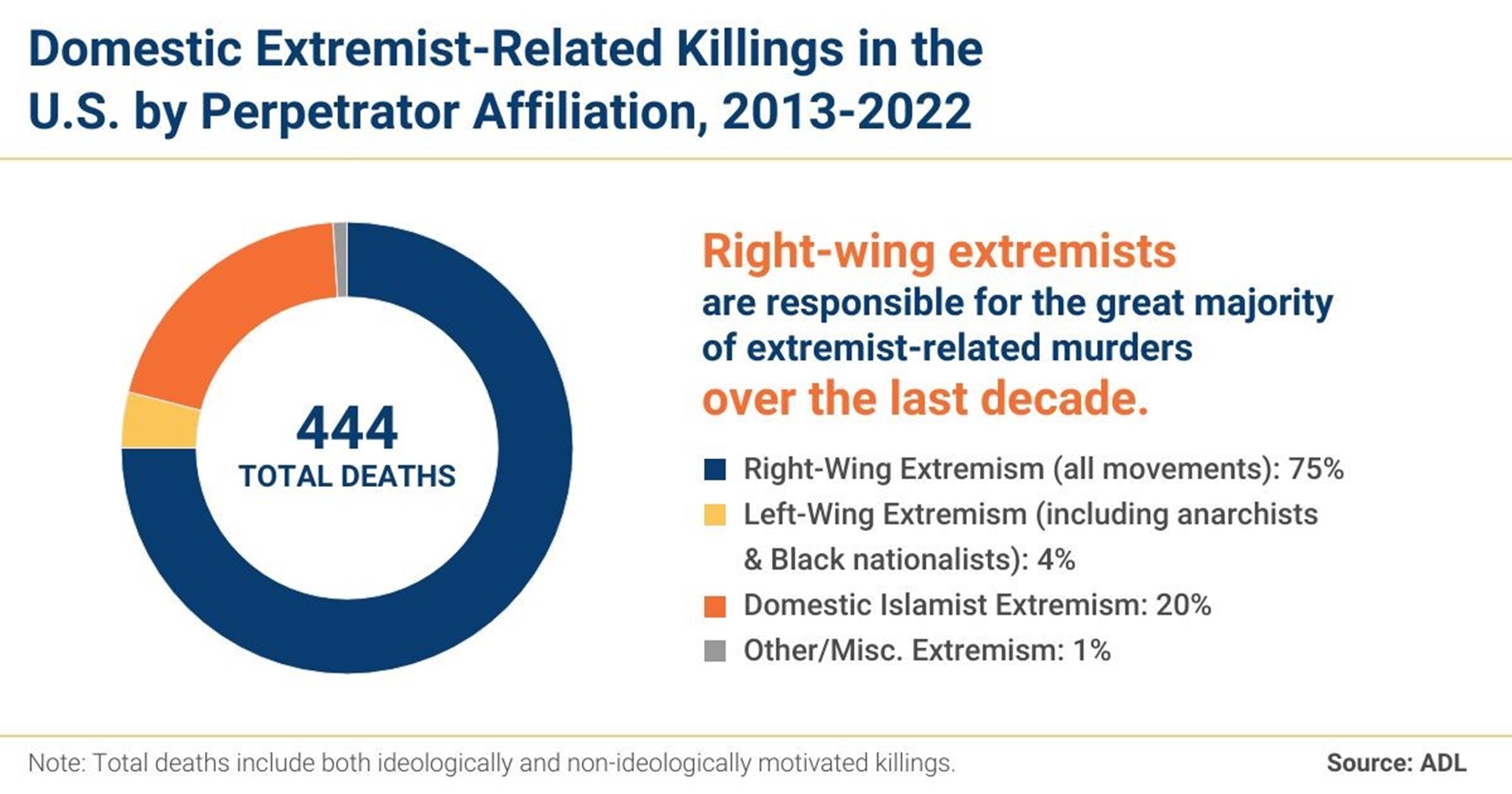

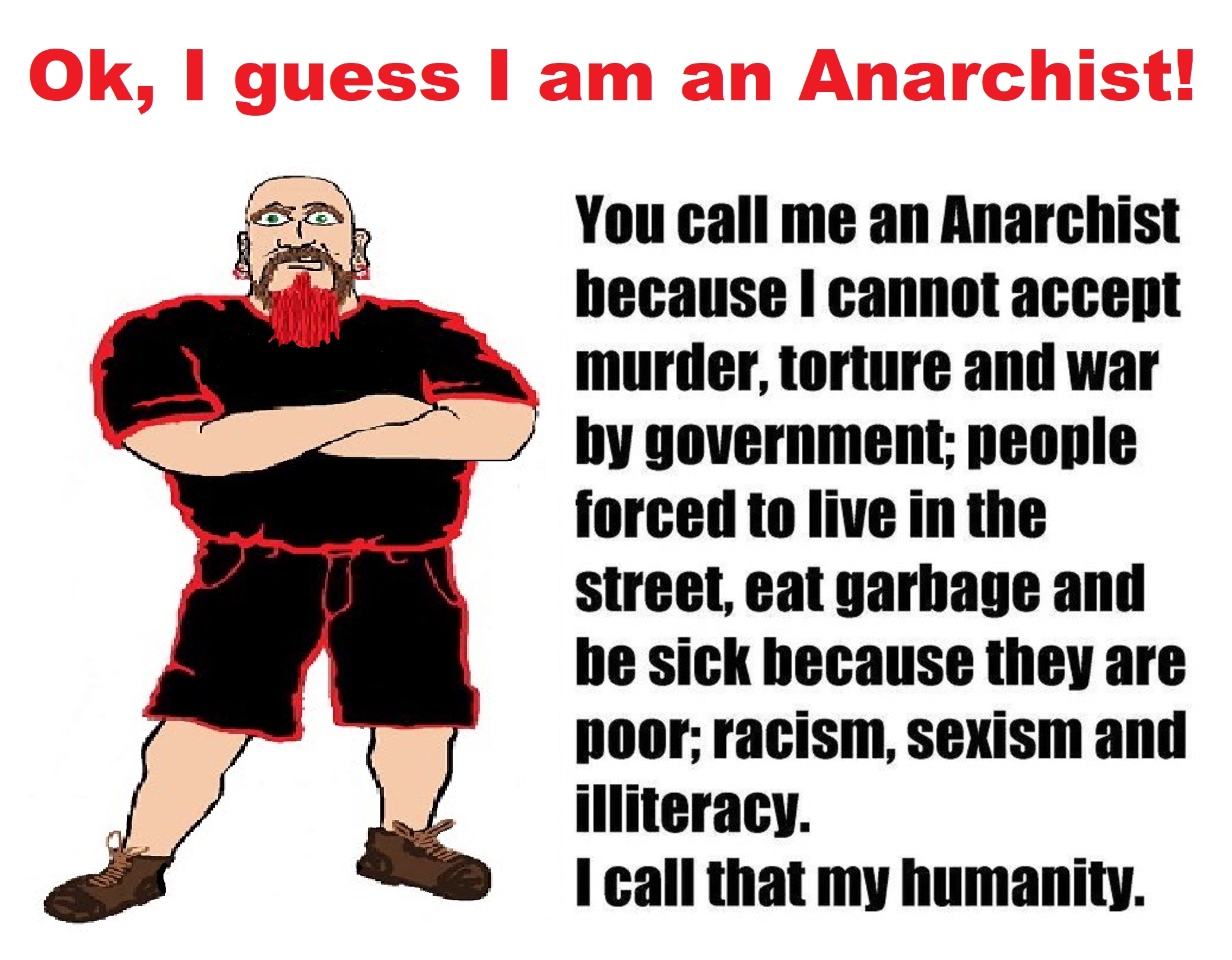
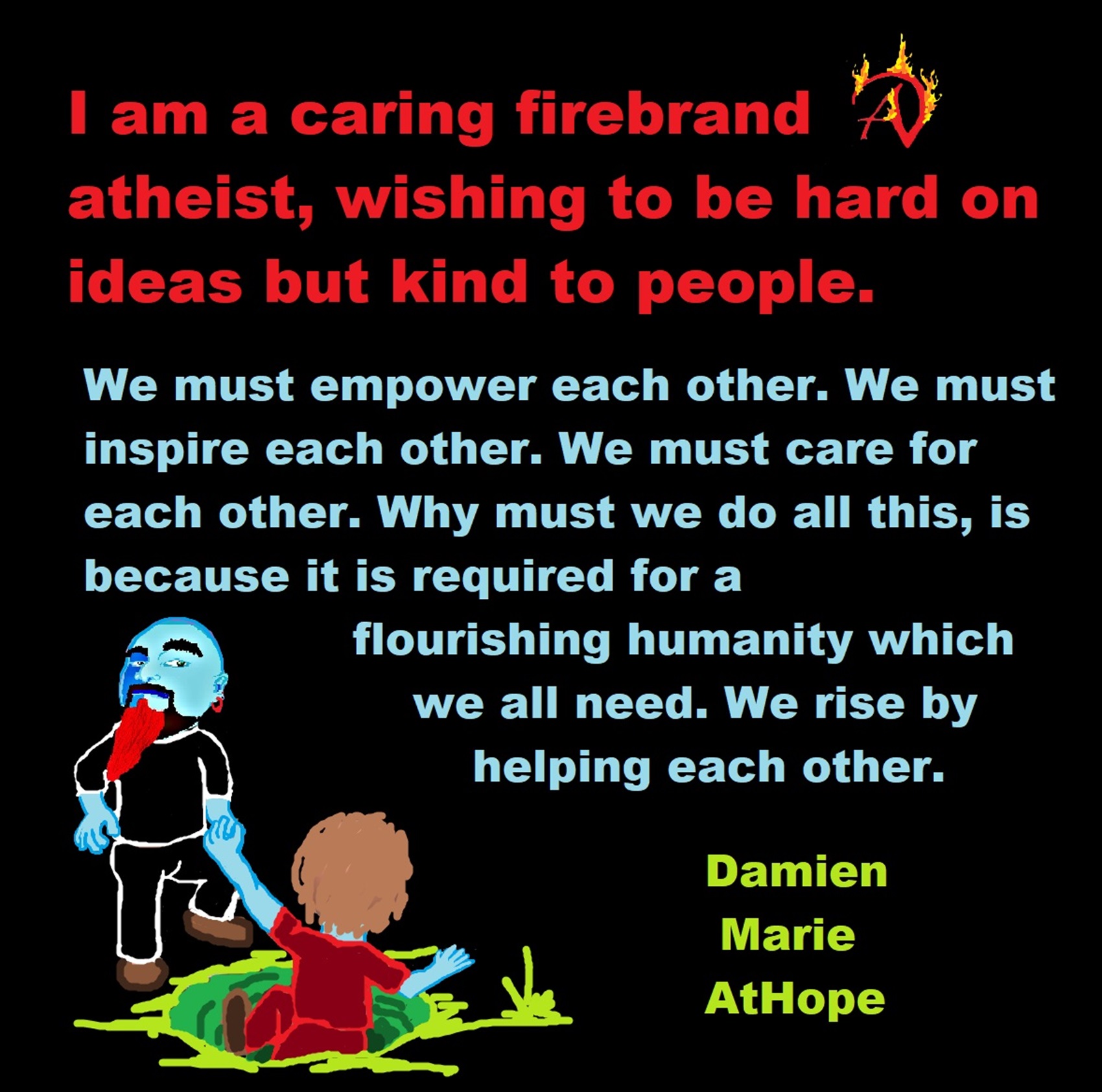
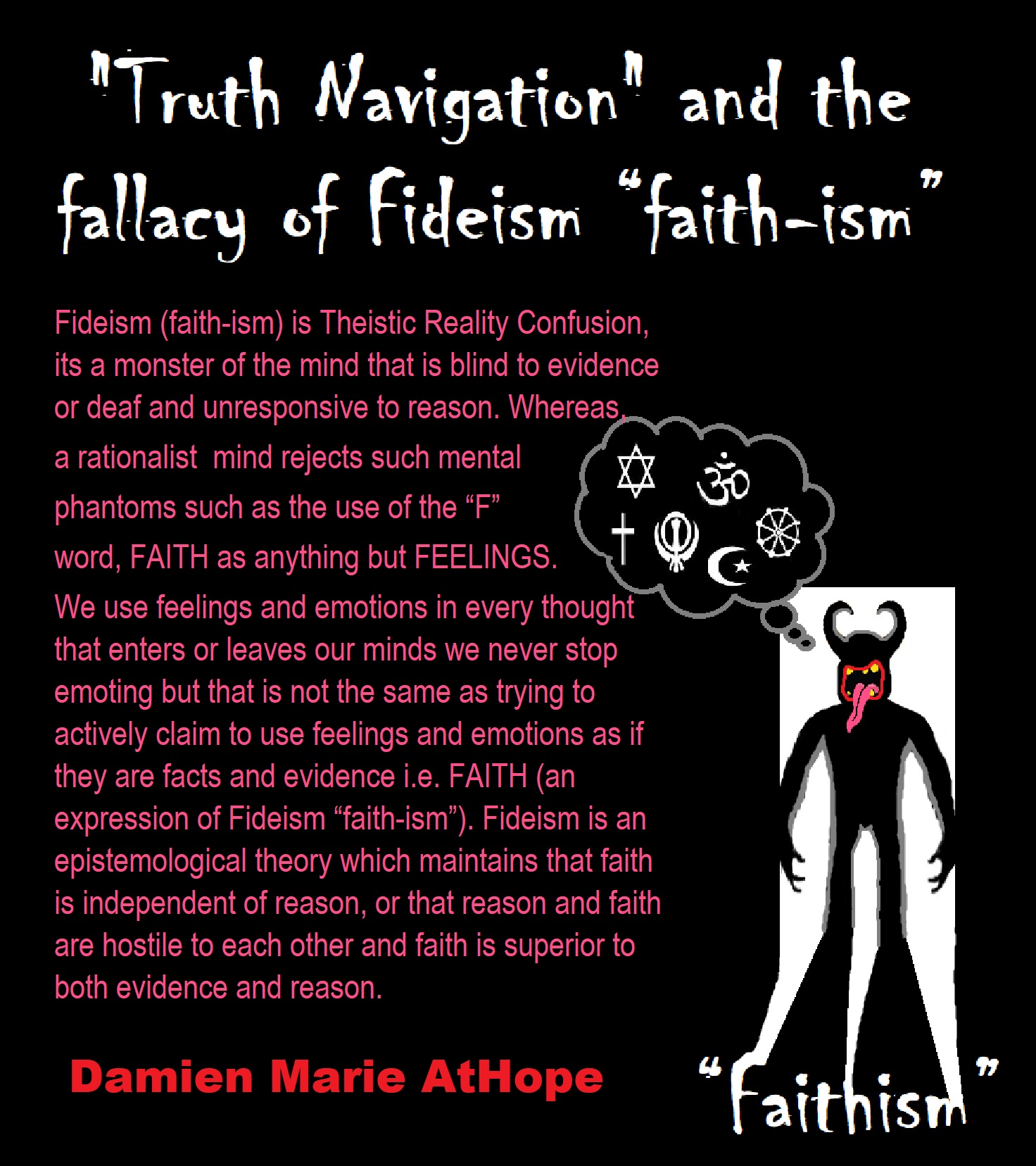

“Theists, there has to be a god, as something can not come from nothing.”
Well, thus something (unknown) happened and then there was something. This does not tell us what the something that may have been involved with something coming from nothing. A supposed first cause, thus something (unknown) happened and then there was something is not an open invitation to claim it as known, neither is it justified to call or label such an unknown as anything, especially an unsubstantiated magical thinking belief born of mythology and religious storytelling.

While hallucinogens are associated with shamanism, it is alcohol that is associated with paganism.
The Atheist-Humanist-Leftist Revolutionaries Shows in the prehistory series:
Show two: Pre-animism 300,000 years old and animism 100,000 years old: related to “Anarchism and Socialism”
Show tree: Totemism 50,000 years old: related to “Anarchism and Socialism”
Show four: Shamanism 30,000 years old: related to “Anarchism and Socialism”
Show five: Paganism 12,000 years old: related to “Anarchism and Socialism”
Show six: Emergence of hierarchy, sexism, slavery, and the new male god dominance: Paganism 7,000-5,000 years old: related to “Anarchism and Socialism” (Capitalism) (World War 0) Elite and their slaves!
Prehistory: related to “Anarchism and Socialism” the division of labor, power, rights, and recourses: VIDEO
Pre-animism 300,000 years old and animism 100,000 years old: related to “Anarchism and Socialism”: VIDEO
Totemism 50,000 years old: related to “Anarchism and Socialism”: VIDEO
Shamanism 30,000 years old: related to “Anarchism and Socialism”: VIDEO
Paganism 12,000 years old: related to “Anarchism and Socialism” (Pre-Capitalism): VIDEO
Paganism 7,000-5,000 years old: related to “Anarchism and Socialism” (Capitalism) (World War 0) Elite and their slaves: VIEDO
Paganism 5,000 years old: progressed organized religion and the state: related to “Anarchism and Socialism” (Kings and the Rise of the State): VIEDO
Paganism 4,000 years old: related to “Anarchism and Socialism” (First Moralistic gods, then the Origin time of Monotheism): VIEDO
I do not hate simply because I challenge and expose myths or lies any more than others being thought of as loving simply because of the protection and hiding from challenge their favored myths or lies.
The truth is best championed in the sunlight of challenge.
An archaeologist once said to me “Damien religion and culture are very different”
My response, So are you saying that was always that way, such as would you say Native Americans’ cultures are separate from their religions? And do you think it always was the way you believe?
I had said that religion was a cultural product. That is still how I see it and there are other archaeologists that think close to me as well. Gods too are the myths of cultures that did not understand science or the world around them, seeing magic/supernatural everywhere.
I personally think there is a goddess and not enough evidence to support a male god at Çatalhöyük but if there was both a male and female god and goddess then I know the kind of gods they were like Proto-Indo-European mythology.
This series idea was addressed in, Anarchist Teaching as Free Public Education or Free Education in the Public: VIDEO
Our 12 video series: Organized Oppression: Mesopotamian State Force and the Politics of power (9,000-4,000 years ago), is adapted from: The Complete and Concise History of the Sumerians and Early Bronze Age Mesopotamia (7000-2000 BC): https://www.youtube.com/watch?v=szFjxmY7jQA by “History with Cy“
Show #1: Mesopotamian State Force and the Politics of Power (Samarra, Halaf, Ubaid)
Show #2: Mesopotamian State Force and the Politics of Power
Show #3: Mesopotamian State Force and the Politics of Power (Uruk and the First Cities)
Show #4: Mesopotamian State Force and the Politics of Power (First Kings)
Show #5: Mesopotamian State Force and the Politics of Power (Early Dynastic Period)
Show #6: Mesopotamian State Force and the Politics of Power
Show #7: Mesopotamian State Force and the Politics of Power (Sargon and Akkadian Rule)
Show #9: Mesopotamian State Force and the Politics of Power (Gudea of Lagash and Utu-hegal)
Show #12: Mesopotamian State Force and the Politics of Power (Aftermath and Legacy of Sumer)

The “Atheist-Humanist-Leftist Revolutionaries”
Cory Johnston ☭ Ⓐ Atheist Leftist @Skepticallefty & I (Damien Marie AtHope) @AthopeMarie (my YouTube & related blog) are working jointly in atheist, antitheist, antireligionist, antifascist, anarchist, socialist, and humanist endeavors in our videos together, generally, every other Saturday.
Why Does Power Bring Responsibility?
Think, how often is it the powerless that start wars, oppress others, or commit genocide? So, I guess the question is to us all, to ask, how can power not carry responsibility in a humanity concept? I know I see the deep ethical responsibility that if there is power their must be a humanistic responsibility of ethical and empathic stewardship of that power. Will I be brave enough to be kind? Will I possess enough courage to be compassionate? Will my valor reach its height of empathy? I as everyone, earns our justified respect by our actions, that are good, ethical, just, protecting, and kind. Do I have enough self-respect to put my love for humanity’s flushing, over being brought down by some of its bad actors? May we all be the ones doing good actions in the world, to help human flourishing.
I create the world I want to live in, striving for flourishing. Which is not a place but a positive potential involvement and promotion; a life of humanist goal precision. To master oneself, also means mastering positive prosocial behaviors needed for human flourishing. I may have lost a god myth as an atheist, but I am happy to tell you, my friend, it is exactly because of that, leaving the mental terrorizer, god belief, that I truly regained my connected ethical as well as kind humanity.
Cory and I will talk about prehistory and theism, addressing the relevance to atheism, anarchism, and socialism.
At the same time as the rise of the male god, 7,000 years ago, there was also the very time there was the rise of violence, war, and clans to kingdoms, then empires, then states. It is all connected back to 7,000 years ago, and it moved across the world.
Cory Johnston: https://damienmarieathope.com/2021/04/cory-johnston-mind-of-a-skeptical-leftist/?v=32aec8db952d
The Mind of a Skeptical Leftist (YouTube)
Cory Johnston: Mind of a Skeptical Leftist @Skepticallefty
The Mind of a Skeptical Leftist By Cory Johnston: “Promoting critical thinking, social justice, and left-wing politics by covering current events and talking to a variety of people. Cory Johnston has been thoughtfully talking to people and attempting to promote critical thinking, social justice, and left-wing politics.” http://anchor.fm/skepticalleft
Cory needs our support. We rise by helping each other.
Cory Johnston ☭ Ⓐ @Skepticallefty Evidence-based atheist leftist (he/him) Producer, host, and co-host of 4 podcasts @skeptarchy @skpoliticspod and @AthopeMarie
Damien Marie AtHope (“At Hope”) Axiological Atheist, Anti-theist, Anti-religionist, Secular Humanist. Rationalist, Writer, Artist, Poet, Philosopher, Advocate, Activist, Psychology, and Armchair Archaeology/Anthropology/Historian.
Damien is interested in: Freedom, Liberty, Justice, Equality, Ethics, Humanism, Science, Atheism, Antiteism, Antireligionism, Ignosticism, Left-Libertarianism, Anarchism, Socialism, Mutualism, Axiology, Metaphysics, LGBTQI, Philosophy, Advocacy, Activism, Mental Health, Psychology, Archaeology, Social Work, Sexual Rights, Marriage Rights, Woman’s Rights, Gender Rights, Child Rights, Secular Rights, Race Equality, Ageism/Disability Equality, Etc. And a far-leftist, “Anarcho-Humanist.”
I am not a good fit in the atheist movement that is mostly pro-capitalist, I am anti-capitalist. Mostly pro-skeptic, I am a rationalist not valuing skepticism. Mostly pro-agnostic, I am anti-agnostic. Mostly limited to anti-Abrahamic religions, I am an anti-religionist.
To me, the “male god” seems to have either emerged or become prominent around 7,000 years ago, whereas the now favored monotheism “male god” is more like 4,000 years ago or so. To me, the “female goddess” seems to have either emerged or become prominent around 11,000-10,000 years ago or so, losing the majority of its once prominence around 2,000 years ago due largely to the now favored monotheism “male god” that grow in prominence after 4,000 years ago or so.
My Thought on the Evolution of Gods?
Animal protector deities from old totems/spirit animal beliefs come first to me, 13,000/12,000 years ago, then women as deities 11,000/10,000 years ago, then male gods around 7,000/8,000 years ago. Moralistic gods around 5,000/4,000 years ago, and monotheistic gods around 4,000/3,000 years ago.
To me, animal gods were likely first related to totemism animals around 13,000 to 12,000 years ago or older. Female as goddesses was next to me, 11,000 to 10,000 years ago or so with the emergence of agriculture. Then male gods come about 8,000 to 7,000 years ago with clan wars. Many monotheism-themed religions started in henotheism, emerging out of polytheism/paganism.

Damien Marie AtHope (Said as “At” “Hope”)/(Autodidact Polymath but not good at math):
Axiological Atheist, Anti-theist, Anti-religionist, Secular Humanist, Rationalist, Writer, Artist, Jeweler, Poet, “autodidact” Philosopher, schooled in Psychology, and “autodidact” Armchair Archaeology/Anthropology/Pre-Historian (Knowledgeable in the range of: 1 million to 5,000/4,000 years ago). I am an anarchist socialist politically. Reasons for or Types of Atheism
My Website, My Blog, & Short-writing or Quotes, My YouTube, Twitter: @AthopeMarie, and My Email: damien.marie.athope@gmail.com

